Civil War Books Published in 2019
Civil War News decided to reach out to the publishers we know and confirm with them the Civil Warrelated books they’ve published during the 2019 calendar year. They were all most cooperative, and with their help we’re pleased to have compiled the following listing of more than 160 titles. We know it’s incomplete and apologize for any book we may have missed. The estimated number published in 2019 maybe closer to double this list.
Arcadia Publishing
Charleston, SC
Kevin R. Pawlak, Antietam National Battlefield
John Saucer, An We Ob Jubilee: The First South Carolina Volunteers
Belknap Press: An Imprint of Harvard University Press
Stephanie McCurry, Women’s War: Fighting and Surviving the American Civil War
Camp Pope Publishing Iowa City, IA
Michael Banasik, Confederate “Tales of the War,” Part Five, 1864–1865
Lawrence H. Freiheit, Maj. Gen. Joseph King Fenno Mansfield: A Soldier from Beginning to End

Robert G. Schultz, Thomas W. Knox, Civil War Correspondent in Missouri
Joe DeSantis Brewster, NY
Joe DeSantis, A Rose by Any Other Name: Nicknames from the Civil War
Fordham University Press New York, NY
Gary W. Gallagher and Elizabeth R. Varon, eds, New Perspectives on the Union War

Lolita Buckner Inniss, The Princeton Fugitive Slave: The Trials of James Collins Johnson
James G. Mendez, A Great Sacrifice: Northern Black Soldiers, Their Families, and the Experience of Civil War
Fox Run Publishing Burlington, NC
Sheridan R. Barringer, Custer’s Gray Rival: The Life of Confederate Major General Thomas Lafayette Rosser
Gettysburg Publishing Gettysburg, PA
Joe Owen, Lone Star Valor: Texans of the Blue & Gray at Gettysburg
Globe Pequot/Lyons Press
Michael Barton and Charles Kupfer, eds., Remembering the Civil War: The Conflict as Told Those Who Lived It

W. C. Jameson, Lost and Buried Treasures of the Civil War



Globe Pequot/Stackpole Books Guilford, CT
John Lee Conrad, The Young Lions: Confederate Cadets at War
Thomas R. Flagel, Gettysburg Don Troiani and Tom Huntington, Don Troiani’s Gettysburg: 36 Masterful Paintings and Riveting History of the Civil War’s Epic Battle
Diane Monroe Smith, Washington Roebling’s Civil War: From the Bloody Battlefield at Gettysburg to the Brooklyn Bridge
Phillip Thomas Tucker, Custer at Gettysburg: A New Look at George Armstrong Custer versus Jeb Stuart in the Battle’s Climactic Cavalry Charge

Historical Publications LLC Charleston, SC
Stephen Davis, 100 Significant Civil War Photographs: Atlanta Campaign History Press Charleston, SC
Jack Dempsey, Michigan’s Civil War Citizen-General: Alpheus S. Williams
Michel C. Hardy, Lee’s Body Guards: The 39th Virginia Cavalry
C. Russell Horres Jr., Morris Island and the Civil War: Strategy and Influence
Carson O. Hudson, Hidden History of Civil War Williamsburg

CW N Vol. 46, No. 2 48 Pages, February 2020 $3.50 Civil War News America’s Monthly Newspaper For Civil War Enthusiasts Inside this issue: 47 – Advertiser Index 12 – Black Powder, White Smoke 38 – Book Reviews 10 – Gettysburg Foundation 28 – Emerging Civil War 43 – Events Section 22 – The Graphic War 24 – Inspection, ARMS! 21 – Preservation News 16 – The Source 14 – The Unfinished Fight 26 – This And That 20 – Through The Lens H 2019 Books . . . . . . . . . . . . see page 8
Civil War News
Published by Historical Publications LLC
520 Folly Road, Suite 25 PMB 379, Charleston, SC 29412
800-777-1862 • Facebook.com/CivilWarNews
mail@civilwarnews.com • www.civilwarnews.com
Advertising: 800-777-1862 • ads@civilwarnews.com
Jack W. Melton Jr. C. Peter & Kathryn Jorgensen
Publisher Founding Publishers
Editor: Lawrence E. Babits, Ph.D.
Advertising, Marketing & Assistant Editor: Peggy Melton
Columnists: Craig Barry, Joseph Bilby, Matthew Borowick, Salvatore Cilella, Stephanie Hagiwara, Gould Hagler, Tim Prince, Michael K. Shaffer
Editorial & Photography Staff: Greg Biggs, Joseph Bordonaro, Sandy Goss, Michael Kent, Bob Ruegsegger, Gregory L. Wade, Joan Wenner, J.D.
Civil War News (ISSN: 1053-1181) Copyright © 2020 by Historical Publications LLC is published 12 times per year by Historical Publications LLC, 520 Folly Road, Suite 25 PMB 379, Charleston, SC 29412. Monthly. Business and Editorial Offices: 520 Folly Road, Suite 25 PMB 379, Charleston, SC 29412, Accounting and Circulation
Offices: Historical Publications LLC, 520 Folly Road, Suite 25 PMB 379, Charleston, SC 29412. Call 800-777-1862 to subscribe.
Periodicals postage paid at U.S.P.S. 131 W. High St., Jefferson City, MO 65101.
POSTMASTER: Send address changes to: Historical Publications LLC 520 Folly Road Suite 25 PMB 379 Charleston, SC 29412
Display advertising rates and media kit on request.
The Civil War News is for your reading enjoyment. The views and opinions expressed herein are those of its authors, readers and advertisers and they do not necessarily reflect the official policy or position of Historical Publications, LLC, its owners and/or employees.

P UBLISHERS :
Please send your book(s) for review to: Civil War News
520 Folly Road, Suite 25 PMB 379 Charleston, SC 29412
Email cover image to bookreviews@civilwarnews.com. Civil War News cannot assure that unsolicited books will be assigned for review. Email bookreviews@civilwarnews.com for eligibility before mailing.

ADVERTISING INFO:
Email us at ads@civilwarnews.com Call 800-777-1862
MOVING?
Contact us to change your address so you don’t miss a single issue. mail@civilwarnews.com • 800-777-1862
SUBSCRIPTION RATES
U.S. Subscription rates are $38.50/year,
We have decided to retire the official position of Book Review Editor of Civil War News beginning with the March 2020 issue. Dr. Larry Babits will continue to edit Civil War News along with the reviews. The collection and distribution of books and reviews, however, will now be processed through our main office in Charleston, SC. If you are publisher or author and want to submit your book for review, please email bookreviews@civilwarnews.com to make sure that your publication meets the eligibility requirements before mailing it to:

Civil War News
520 Folly Road Suite 25 PMB 379 Charleston, SC 29412
If you would like to be a member of our elite book review staff, please contact us at bookreviews@civilwarnews.com for details.
While you will be reading this issue in mid-February 2020, it is actually New Year’s Day as I sit at my desk and reminisce while I write this column. 2019 was a busy year for Historical Publications LLC. We produced twelve 48-page Civil War News issues, two 64-page and two 80-page Artilleryman magazines, one 64-page Civil War Dealers Directory, and two books; 100 Significant Civil War Photographs: Atlanta Campaign and 100 Significant Civil War Photographs: Charleston in the War. We are very grateful for all of our contributors and alliances, who make it possible for us to continue to bring you such quality products.
Our partnerships with the American Battlefield Trust, Emerging Civil War News, Central Virginia Battlefield Trust, and the Gettysburg Foundation allow us to keep our readers abreast of the latest news and information.

We are committed to bringing our readers only the highest quality publication of its kind on the market, and your comments are always welcome.

2 Civil War News February 2020
$66/2 years, digital only $29.95, add digital to paper subscription for only $10/year more. Subscribe at www.CivilWarNews.com CIVIL WAR AUTOGRAPHS LETTERS • DIARIES • STAMPS • CURRENCY Price List Online • Top Price Paid for Quality Material BRIAN & MARIA GREEN P.O. Box 1816N Kernersville, NC 27285-1816 (336)993-5100 • (336)993-1801 www.shop.bmgcivilwar.net bmgcivilwar@triad.rr.com Publishers/Authors Updated Information Send your book(s) for review to: Civil War News 520 Folly Road, Suite 25 PMB 379 Charleston, SC 29412 bookreviews@civilwarnews.com
Dalton Civil War Show


Dalton Convention Center 2211 Dug Gap Battle Rd Dalton, GA 30720
Feb. 1 & 2, 2020
Myrtle Beach Gun & Knife Show
Myrtle Beach Convention Center 2101 North Oak Street Myrtle Beach, SC 29579
Feb. 8 & 9, 2020
Charleston Gun & Knife Show



Exchange Park Fairgrounds 9850 Highway 78 Ladson, SC 29456
Feb. 22 & 23, 2020
Asheville Gun & Knife Show
WNC Ag Center 1301 Fanning Bridge Road
Fletcher, NC
March 7 & 8, 2020

3300

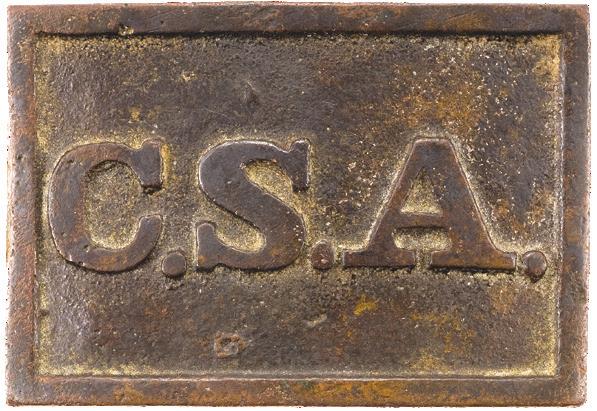
Florence, SC
&

Mike Kent & Associates, LLC • PO Box 685 • Monroe, GA 30655 770-630-7296 • Mike@MKShows.com • www.MKShows.com Military Collectible & Gun & Knife Shows Presents The Finest
Center
Florence Civic
West Radio Drive
Promoters of Quality Shows for Shooters, Collectors, Civil War and Militaria Enthusiasts
March 14
15, 2020 Florence Gun & Knife Show
Bring this page with you and receive $1 off admission
Franklin’s Middle Tennessee Civil War Show
FRANKLIN,
Tenn.—The
33rd Annual Middle Tennessee Civil War Show is now in the history books and it was a great one according to Show Promoter Mike Kent of MK Shows. For the past 10 years the show has been held at the Williamson County Ag Expo Park in Franklin, a wellknown equestrian facility that caters to many high end horse shows and expos of all types. For many years Kent has toyed with the idea of holding a complimentary event during the Civil War show to enhance attendance and give some variety to the show. He has hosted an auction of Civil War collectibles, various Sutler Villages, cannon demonstrations, and the Antique Bowie Knife Association. All have been interesting and fit in well with the show, but none have really had an impact on attendance until this year.
Enter the Brentwood Franklin Coin Collectors Club headed by Col. Steve Ellsworth, a previous Franklin show vendor. Ellsworth, who also happens to be President of the American Numismatic Association, contacted Kent with a novel idea; integrate their established coin show with our established Civil War show and see what happens. When all the

details were worked out the coin collectors had a separate exhibit room within the Civil War show facility featuring 60 tables of coins, currency, gold, silver, and other collectibles. One admission price was good for both shows. The coin dealers enjoyed the benefit of a huge Civil War crowd visiting their show while the Civil War dealers saw a noticeable increase in overall attendance due to coin enthusiasts circulating through their event. Based on numbers at the gate, Kent saw a 10% increase in attendance over last year, mainly attributed to including the coin show and targeted marketing by his advertising manager Peggy Melton. Kent and Ellsworth were both pleased with the end result and hope to work out a similar arrangement for the December 2020 show.
In addition to an increase in attendance this year, the show also added 25 vendor tables, a slight uptick from 2018. As far as organizing and finalizing the table count, it’s always like a giant jigsaw puzzle until the last minute according to Kent. With the number of dealers traveling from all over the country, you can expect to run into last minute cancellations due to illness, weather, family, and vehicle situations every

year. Luckily we generally have a waiting list of folks who need tables, so it is just a matching game right up until we open for move in said Kent. When opening came on Friday morning at 10 a.m., every table was filled and the race was on among dealers to find new material and renew old friendships.
When the final bell rang at 7 p.m. Friday night, dealers were still shopping, trading, and visiting and had to be encouraged to leave by numerous announcements over the PA system, just like in the old days!
A Civil War show would not be complete without displays and this year was no different. Seven different displays were judged; five of the seven were exhibits never shown before at Franklin. The award winners were:


• Best of Show – Paul Gibson and Bob Edmondson: Confederate Blockade Runner Documents and Letters
Best of Show
Paul Gibson and Bob Edmondson
Confederate Blockade Runner Documents and Letters
4 Civil War News February 2020
• Best Weapon Award –Arston Grant: Confederate Revolvers
• People’s Choice Award –Wayne and Greg Williams: Surviving Battlefield Amputations During the Civil War
• Chairman’s Award – Bill Blackman: Confederate Buckles and Belt Plates
• Historical Significance
Award – David Noe: The British Pattern 1853 Enfield
• Historical Significance
Award – Greg Murry: The Crockett Long Rifle


• Historical Significance
Award – Gerald Roxbury: Naval Sword Surrendered to Raphael Semmes
All in all, another successful Middle Tennessee Civil War Show! Stay tuned for the Chickamauga Civil War Show scheduled for February 1 & 2, 2020, at the Dalton Convention Center in Dalton, Ga. For information contact Mike Kent at 770630-7296 or Mike@MKShows. com. See MK Shows ad on page 3 in this issue.
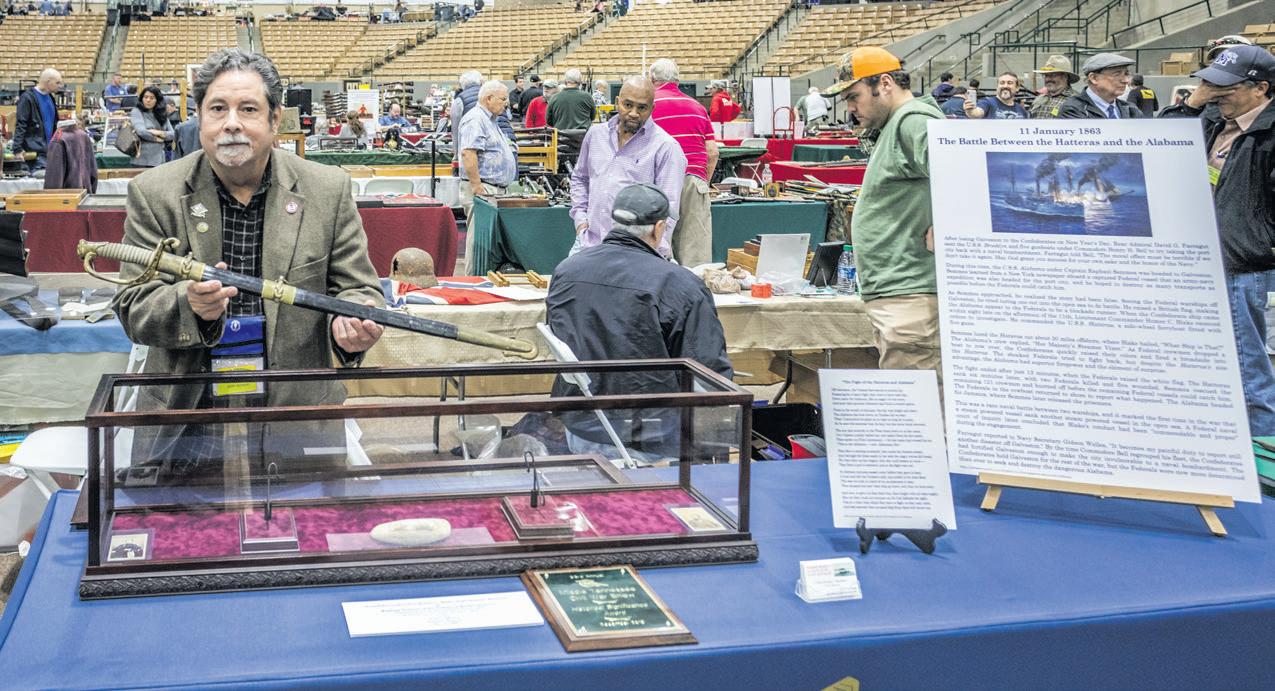


5 February 2020 Civil War News Subscribe online at CivilWarNews.com
33rd Middle Tennessee Civil War Show Award Winners. Left to right: Best Weapon Award – Arston Grant: Confederate Revolvers; Historical Significance Award –David Noe: The British Pattern 1853 Enfield; Historical Significance Award – Greg Murry: The Crockett Long Rifle; Historical Significance Award – Gerald Roxbury: Naval Sword Surrendered to Raphael Semmes; Best of Show – Paul Gibson and Bob Edmondson: Confederate Blockade Runner Documents and Letters; People’s Choice Award – Greg and Wayne Williams: Surviving Battlefield Amputations During the Civil War; Chairman’s Award – Bill Blackman: Confederate Buckles and Belt Plates. (Peggy Melton)
Show promoter Mike Kent and Abraham Lincoln presenter Dennis Boggs.
Best Weapon Award – Arston Grant: Confederate Revolvers.
Chairman’s Award – Bill Blackman: Confederate Buckles and Belt Plates.
Historical Significance Award – Gerald Roxbury: Naval Sword Surrendered to Raphael Semmes.
your book(s) for review to:
News
Publishers: Send
Civil War
520 Folly Road, Suite 25 PMB 379 Charleston, SC 29412 bookreviews@civilwarnews.com
Franklin Middle Tennessee Show Photos

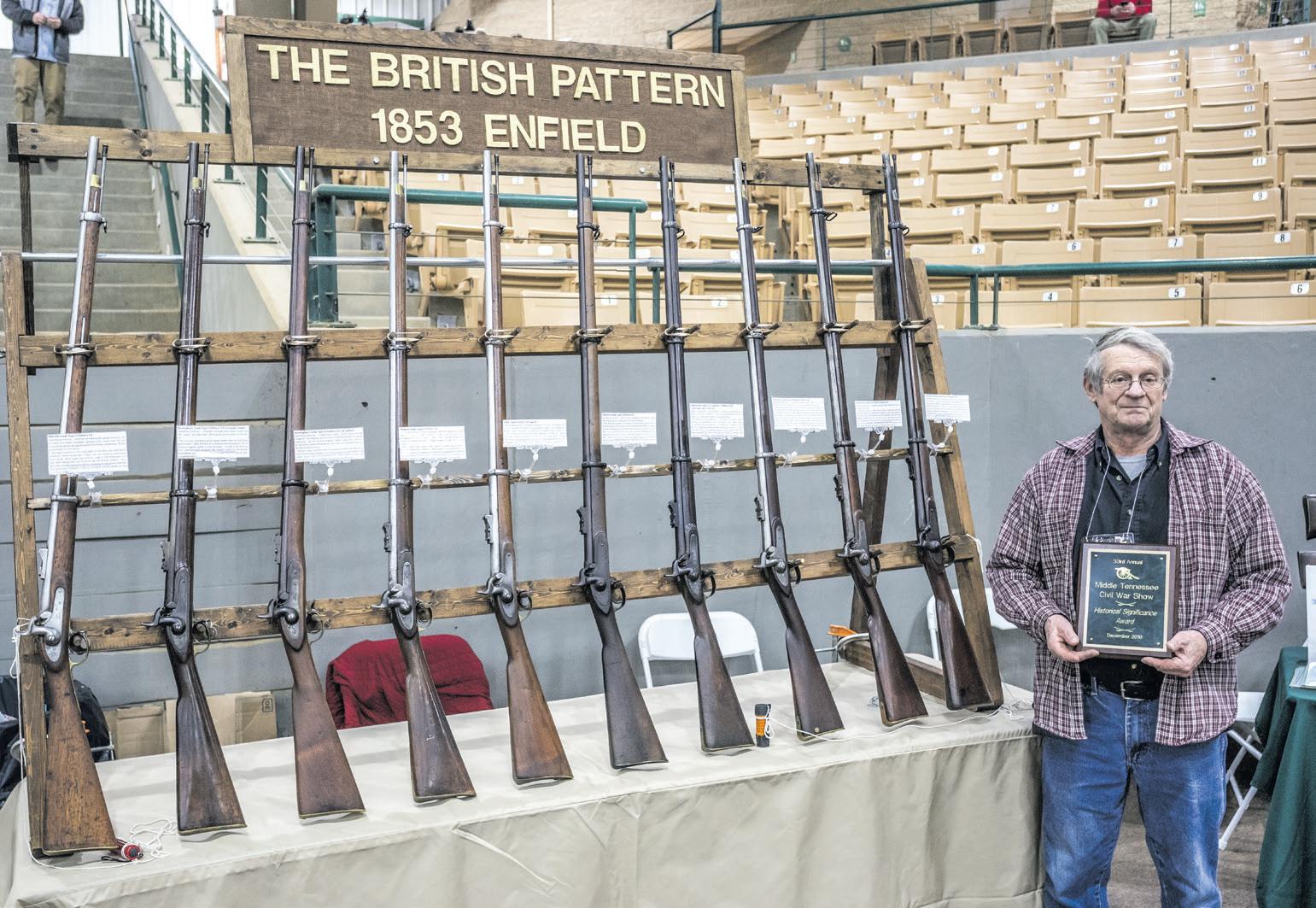



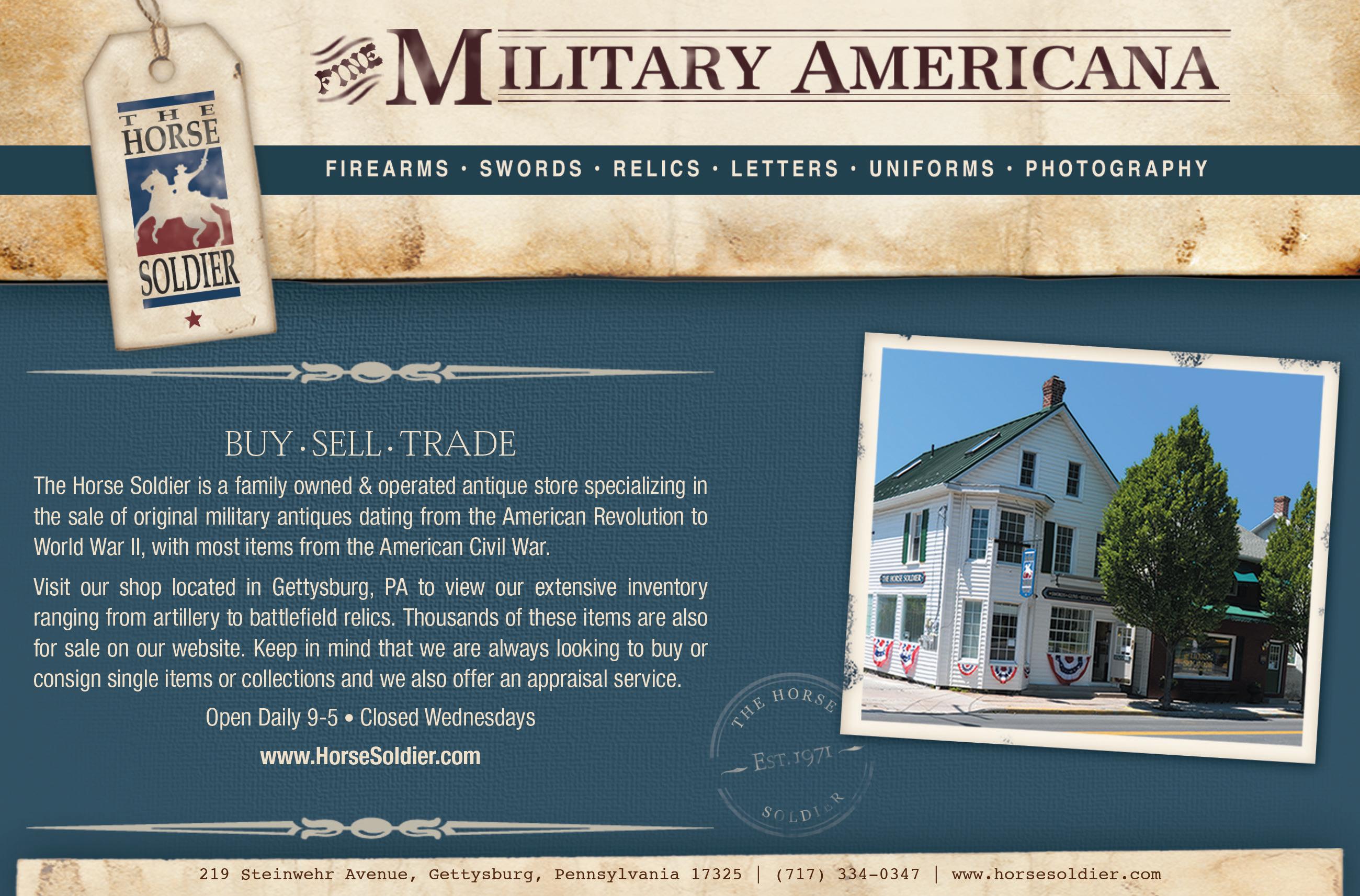
6 Civil War News February 2020
People’s Choice Award – Wayne and Greg Williams: Surviving Battlefield Amputations During the Civil War.
Allen Wandling, Proprietor of Mid West Civil War Relics, stands in the center with his two sons, Michael and Matthew Wandling.
Historical Significance Award – David Noe: The British Pattern 1853 Enfield.
Greg Murry: The Crockett Long Rifle; Historical Significance Award.
by Joe Bordonaro
Humor is notably lacking in most movies and videos pertaining to the Civil War. In part, of course, that is due to the extremely serious nature of that conflict. But even in the deadliest events, there are times of humor, and “Hold My Horse” (Look Around You Ventures, 2018), illustrates one of those times. Based on an account of an actual event recorded by Daniel Crotty, Color Sergeant, 3rd Michigan Volunteer Infantry, the short (under 9 minutes running time) video tells the story of the comeuppance of an

“Hold My Horse” Review
arrogant young officer seeking to curry favor with General Israel Richardson. General Richardson, ably portrayed by veteran actor Christian Stolte, who has appeared in “Chicago Fire” and “Public Enemies,” decides to teach this snippety young shavetail a lesson, but does it with humor instead of a severe dressing down.
The costuming and set decoration are first rate, and the acting is as well. Twenty-two living historians added authenticity to the depiction of soldiers in camp. Music performed by the Sons of
Temperance and the 105th OVI Fife and Drum, as well as some expert bugling, is also used very effectively. I highly recommend it to all audiences, but, of course, those of us who are interested in the Civil War will find it of particular interest.
The video is available from Vimeo and can be rented for $3, or purchased for $5 at:
https://vimeo.com/ondemand/
Joe Bordonaro is a USAF veteran (1973–1977), Glassboro State College graduate (1980), Catholic school teacher (St. Joseph’s ProCathedral, 1983–1988), and retired public school teacher (Mullica Township School, 1988–2009). He

has been involved with Civil War reenacting/living history since 1999. Joe began submitting articles to the Civil War News in 2005 and has been covering events for the News on a regular basis since 2016. Joe lives in Mount Laurel, NJ, and has been married to his wife Karen for 31 years. If you wish to contact Joe, you may send an email to joe1861@gmail.com.

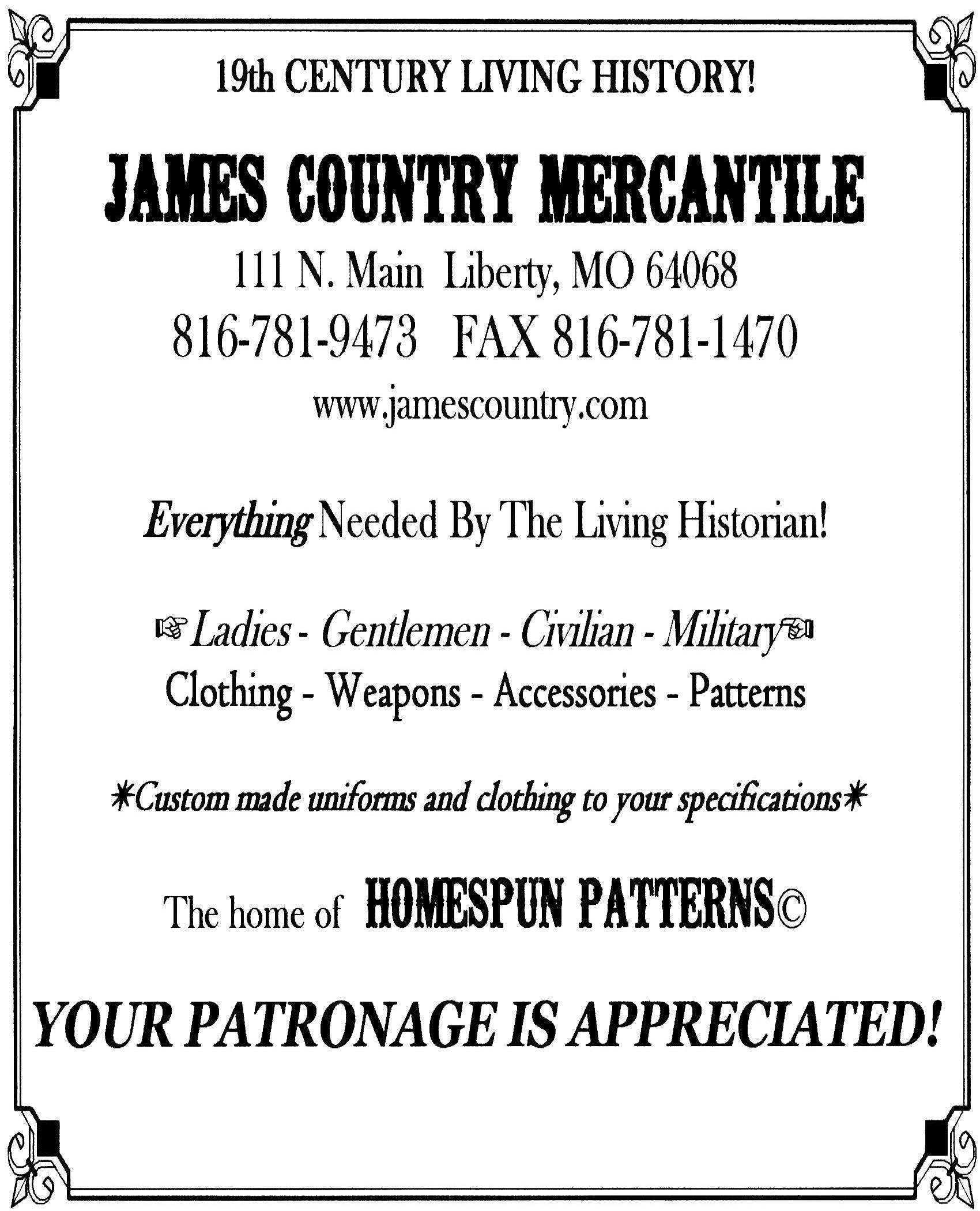
7 February 2020 Civil War News
From left to right, Sean Sklye as Lt. Ambrose, Christian Stolte as Gen. Richardson, and Patrick Webb as Lt. Crowley appear in a scene from Hold My Horse.
holdmyhorse
H 2019 Books
from page 1
Steve M. Miller, North Carolina Unionists and the Fight Over Secession
Alice Stuart Povall, Rebels in Repose: Confederate Commanders After the War
Joseph Stahl and Matthew Borders, Faces of Union Soldiers at Antietam
Ryan Starrett, Mississippi Bishop: William Henry Elder and the Civil War
Kent State University Press Kent, OH
J. Gregory Acken, ed., Blue-Blooded Cavalryman: Captain William Brooke Rawle in the Army of the Potomac, May
1863-August 1865
Thomas R. Flagel, War, Memory, and the 1913 Gettysburg Reunion
John T. Schlollerbeck, Wesley W. Wilson, Midori Kawaue and Harold A. Klingensmith, eds., James Riley Weaver’s Civil War: The Diary of a Union Cavalry Officer and Prisoner of War, 1863–1865
Jonathan W. White and Daniel Glenn, eds., Untouched by the Conflict: The Civil War Letters of Singleton Ashenfelter, Dickinson College
Longstreet House
Hightstown, NJ
John W. Kuhl and David G. Martin, Stars Over New Jersey: New Jersey’s Generals and Admirals of the Civil War Era
Louisiana State University Press
Baton Rouge, LA
Michael J. Birkner, Randall M. Miller and John W. Quist, The Worlds of James Buchanan and Thaddeus Stevens: Place, Personality, and Politics in the Civil War Era
Ross A. Brooks, The Visible Confederacy: Images and Objects in the Civil War South
William J. Cooper, Approaching Civil War and Southern History
Niels Eichhorn, Liberty and Slavery: European Separatists, Southern Secession, and the American Civil War
Michael S. Frawley, Industrial Development and Manufacturing in the Antebellum Gulf South: A Reevaluation
Gary W. Gallagher and Stephen Cushman, eds, Civil War Writing: New Perspectives on Iconic Texts
Robert Icenhour-Ramirez, Treason on Trial: United States of America v. Jefferson Davis
Allison M. Johnson, The Scars We Carve: Bodies and Wounds in Civil War Print Culture
Lawrence A Kreiser Jr., Marketing the Blue and Gray: Newspaper Advertising and the American Civil War
Larry Lowenthal, A Yankee Regiment in Confederate Louisiana: The 31st Maine Veteran Infantry in the Gulf South
Adam H. Petty, The Battle of the Wilderness in Myth and Memory: Reconsidering Virginia’s Most Notorious Civil War Battle
David Prior, Between Freedom and Progress: The Lost World of Reconstruction Politics
Christopher M. Rein, Alabamians in Blue: Freedmen, Unionists, and the Civil War in the Cotton State
John T. Whatley, An East Texas Family’s Civil War: The Letters of Nancy & William Whatley May-December 1862
McFarland & Company, Inc., Publishers
Jefferson, NC
R. Thomas Campbell, Confederate Ironclads at War
Darrell L. Collins, The Army of the Cumberland: Organization, Strength, Casualties, 1862–1865
The 2020 Civil War Dealers Directory is out. To view or download a free copy visit: www.civilwardealers.com/ dealers.htm
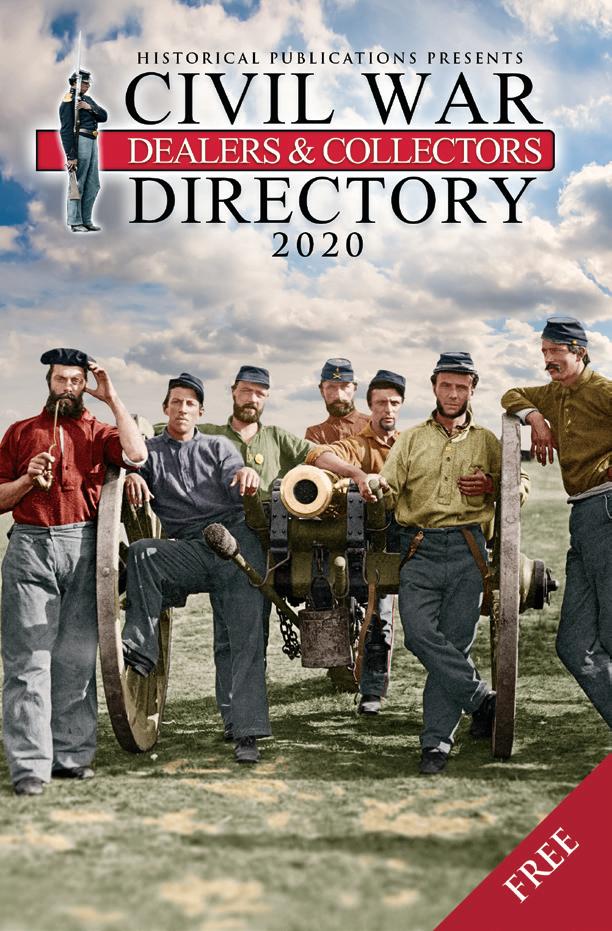
Dogs: A Passion for Hounds, from the Civil War to Little Bighorn
H. Leon Greene, The Confederate Yellow Fever Conspiracy: The Germ Warfare Plot of Luke Pryor Blackburn, 1864–1865
Roger D. Hunt, Colonels in Blue: Missouri and the Western States and Territories
Robert R. Laven, A Burned Land: The Trans-Mississippi in the Civil War
Joseph McKenna, British Blockade Runners in the American Civil War
Cory M. Pfarr, Longstreet at Gettysburg: A Critical Assessment
James S. Pula, The Civil War from its Origins to Reconstruction
John Stewart, Pinkertons, Prostitutes and Spies: The Civil War Adventures of Secret Agents Timothy Webster and Hattie Lawton
Robert N. Thompson, General Emory Upton and the Civil War: The Formative Experiences of an American Military Visionary
Elmer R. Woodard III, A Bloody Day at Gaines’ Mill: The Battlefield Debut of the Army of Northern Virginia, June 27, 1862
Mercer University Press Macon, GA
Stephen Davis, Texas Brigadier to the Fall of Atlanta: John Bell Hood
Stephen Hay and William Smith, Camp Oglethorpe: Macon’s Unknown Prisoner of War Camp, 1862–1864
Karen Stokes, ed., An Everlasting Circle: Letters of the Haskell Family of Abbeville, South Carolina, 1861–1865
Michigan State University Press
East Lansing, MI
Kim Crawford, The 16th Michigan Infantry in the Civil War National Museum of Civil War Medicine Press
Frederick, MD
Terry Reimer, The Story of Civil War Medicine: Divided by Conflict, United by Compassion
and “Damnest” Job: The Civil War Experiences and Civilian History of Colonel Edmund Winchester Rucker
Ohio University Press
Athens, OH
John W. Quist, ed., Michigan’s War: The Civil War in Documents
Osprey Publishing
New York, NY
Gary Yee, Union Sharpshooter versus Confederate Sharpshooter
Oxford University Press
New York, NY
Thomas J. Balcerski, Bosom
Friends: The Intimate World of James Buchanan and William Rufus King
Mathew Fox-Amato, Exposing Slavery: Photography, Human Bondage, and the Birth of Modern Visual Politics in America
W. Caleb McDaniel, Sweet Taste of Liberty: A True Story of Slavery and Restitution in America
Richard White, The Republic for Which It Stands: The United States during Reconstruction and the Gilded Age, 1865–1896
Pegasus Books
New York, NY
Christian B. Keller, The Great Partnership: Robert E. Lee, Stonewall Jackson, and the Fate of the Confederacy
Pen and Sword Military South Yorkshire, United Kingdom
Col. Robert W Black, Yank and Rebel Rangers: Special Operations in the American Civil War
Penguin Press
London, United Kingdom
Henry Louis Gates Jr., Stony the Road: Reconstruction, White Supremacy, and the Rise of Jim Crow
Princeton Architectural Press
Hudson, NY
Harold Holzer, Monument Man: The Life and Art of Daniel Chester French
Savas Beatie
El Dorado Hills, CA
Sarah Kay Bierle, Call Out the Cadets: The Battle of New Market, May 15, 1864
Daniel T. Davis, The Most Desperate Acts of Gallantry: George A. Custer in the Civil War
Ronald D. Kirkwood, “Too Much for Human Endurance”: The George Spangler Farm Hospitals and the Battle of Gettysburg
James A. Hessler and Britt C. Isenberg, Gettysburg’s Peach Orchard: Longstreet, Sickles, and the Bloody Fight for the “Commanding Ground” Along the Emmitsburg Road
John Horn, The Petersburg Regiment in the Civil War: A History of the 12th Virginia Infantry from John Brown’s Hanging to Appomattox, 1859–1865
Mark A. Hughes, Confederate Soldiers in the American Civil War: Facts and Photos for Readers of All Ages
Jeffrey Wm. Hunt, Meade and Lee at Bristoe Station: The Problems of Command and Strategy after Gettysburg from Brandy Station to the Buckland Races, August 1 to October 31, 1863
Gregory A. Mertz, Attack at Daylight and Whip Them: The Battle of Shiloh, April 6-7, 1862
Scott I. Mingus, Sr. and Cooper H. Wingert, Targeted Tracks: The Cumberland Valley Railroad in the Civil War, 1861–1865
David A. Powell, All Hell Can’t Stop Them: The Battles for Chattanooga-Missionary Ridge and Ringgold, November 24-27, 1863
David A. Powell, Union Command Failure in the Shenandoah: Major General Franz Sigel and the War in the Valley of Virginia, May 1864
Thomas J. Ryan and Richard R. Schaus, “Lee is Trapped and Must Be Taken”: Eleven Fateful Days after Gettysburg, July 4 to July 14, 1863
Steven R. Stotelmyer, Too Useful to Sacrifice: Reconsidering George B. McClellan’s Generalship in the Maryland Campaign from South Mountain to Antietam
William Lee White, Let Us Die Like Men: The Battle of Franklin, November 30, 1864
Thomas Crowl, Opdycke’s Tigers in the Civil War: A History of the 125th Ohio Volunteer Infantry
Brian Patrick Duggan, General Custer, Libbie Custer and Their
Robert G. Slawson, Prologue to Change: African Americans in Medicine in the Civil War Era
New South Books
Montgomery, AL
Michael P. Rucker, The Meanest
Gregory Christianson, Gettysburg: Kids Who Did the Impossible!
Clint Crowe, Caught in the Maelstrom: The Indian Nations in the Civil War, 1861–1865
Jerry T. Wooten, Johnsonville: Union Supply operations on the Tennessee River and the Battle of Johnsonville, November 4-5 1864
Shotwell Publishing Columbia, SC
Garry Bowers, Slavery and the
8 Civil War News February 2020
. . . . . . . . . . .
February 2020
Civil War: What Your History
Teacher Didn’t Teach You
Philip Leigh, U. S. Grant’s Failed Presidency
Samuel W. Mitcham Jr., The Greatest Lynching in American History: New York, 1863
Thomas Moore, A Fatal Mercy: The Man Who Lost the Civil War
Suzanne Parfitt Johnson, ed., Maxcy Gregg’s Sporting Journals 1842–1858
Clyde N. Wilson, The War Between the States: 60 Essential Books, Vol. II
Walter Kirk Wood, Beyond Slavery: The Northern Romantic Nationalist Origins of America’s Civil War
Simon & Schuster New York, NY
S. C. Gwynne, Hymns of the Republic: The Story of the Final Year of the Civil War
Donald L. Miller, Vicksburg: Grant’s Campaign That Broke the Confederacy
Douglas Waller, Lincoln’s Spies: Their Secret War to Save a Nation
Bill Smedlund
Marble, NC
Bill Smedlund, Sons of Tom Cobb: Troup Artillery, Athens, Georgia
Southern Illinois University Press
Carbondale, IL
Gregory A. Borchard, Abraham Lincoln and Horace Greeley
Richard Carwardine, Lincoln’s Sense of Humor
Brian R. Dirck, The Black Heavens: Abraham Lincoln and Death

Jason Emerson, Mary Lincoln for the Ages
Mark Flotow, ed., In Their Letters, in Their Words: Illinois Civil War Soldiers Write Home
Zachary Stuart Garrison, German Americans on the Middle Border: From Antislavery to Reconciliation, 1830–1877
Kent Gramm, Gettysburg: The Living and the Dead Constance Hall Jones, The Spirits of Bad Men Made Perfect: The Life and Diary of Confederate Artillerist William Ellis Jones
Ron J. Keller, Lincoln in the Illinois Legislature
Jared Peatman, The Long Shadow of Lincoln’s Gettysburg Address
Jon D. Schaff, Abraham Lincoln’s Statesmanship and the Limits of Liberal Democracy
Ferenc Morton Szasz, Abraham Lincoln and Robert Burns
Steven E. Woodworth and Charles D. Grear, eds., The Vicksburg Assaults, May 19-22, 1863
Sunbury Press
Mechanicsburg, PA
Ben Myers, American Citizen: The Civil War Writings of Captain George A. Brooks, 46th Pennsylvania Volunteer Infantry
Mark S. Singel, The Life and Loves of Thaddeus Stevens
Texas A & M Press College Station, TX
Roseann Bacha-Garza, Christine
L. Miller and Russell K. Skowronek, eds., The Civil War on the Rio Grande, 1846–1876
University of Georgia Press
Athens, GA
Joseph M. Beilen Jr., William Gregg’s Civil War: The Battle to Shape the History of Guerrilla Warfare
Kathleen Diffley and Benjamin Fagan, eds., Visions of Glory: The Civil War in Word and Image
Ruth Dunlev, The Lost President: A. D. Smith and the Hidden History of Radical Democracy in Civil War America
Sarah H. Andley-Cousins, Bodies in Blue: Disability in the Civil War North
Jonathan Daniel Wells, Blind No More: African American Resistance, Free-Soil Politics, and the Coming of the Civil War
University of Illinois Press
Champaign, IL
Brooks Blevins, A History of the Ozarks, Volume 2: The Conflicted Ozarks
Jane Ann Moore and William F. Moore, Owen Lovejoy and the Coalition for Equality: Clergy, African Americans, and Women United for Abolition
Wayne G. Temple, Lincoln’s Confidant: The Life of Noah Brooks
Douglas Wilson and Rodney O. Davis, eds., Herndon on Lincoln: Letters
University of Nebraska Press
Lincoln, NE
Civil War News
James A. Davis, Maryland, My Maryland: Music and Patriotism during the American Civil War

Jane Singer, The War Criminal’s Son: The Civil War Saga of William A. Winder
University of North Carolina Press
Chapel Hill, NC
Stephen V. Ash, Rebel Richmond: Life and Death in the Confederate Capital
Sarah Blackwood, The Portrait’s Subject; Inventing Inner Life in the Nineteenth-Century United States
James J. Broomall, Private Confederacies: The Emotional Worlds of Southern Men as Citizens and Soldiers
Thomas J. Brown, Civil War Monuments and the Militarization of America
Larry J. Daniel, Conquered: Why The Army of Tennessee Failed
Gregory P. Downs, The Second American Revolution: The Civil War-Era Struggle over Cuba and the Rebirth of the American Republic
Gary W. Gallagher and J. Matthew Gallman, eds., Civil War Places: Seeing the Conflict through the Eyes of Its Leading Historians.
Philip Gerard, The Last Battleground: The Civil War Comes to North Carolina

R. Scott Huffard Jr., “Engines” of Redemption: Railroads and the Reconstruction of Capitalism in the New South
Evan A. Kutzler, Living by Inches: The Smells, Sounds, Tastes, and Feeling of Captivity in Civil War Prisons
Joseph P. Reidy, Illusions of Emancipation: The Pursuit of Freedom and Equality in the Twilight of Slavery
Steve Sainlaude, France and the American Civil War: A Diplomatic History
David Silkenat, Raising the White Flag: How Surrender Defined the American Civil War University of Oklahoma Press Norman, OK
Joseph C. Fitzharris, The Hardest of Men: The Third Minnesota Infantry in the Civil War
John Hart, ed., Bluecoat and Pioneer: The Recollections of John Benton Hart, 1864–1865
Christopher R. Mortenson, Poli-
tician in Uniform: General Lew Wallace and the Civil War University of Tennessee Press Knoxville, TN
Allen Carden and Thomas J. Ebert, John George Nicolay: The Man in Lincoln’s Shadow
Dan Lee, General Hyland B Lyon: A Kentucky Confederate and the War in the West
Christopher C. Moore, Apostle of the Lost Cause: J. William Jones, Baptists, and the Development of Confederate Memory
Larry Peterson, Decisions of the 1862 Kentucky Campaign: The Twenty-seven Critical Decisions That Defined the Operation
Larry Peterson, Decisions of the Atlanta Campaign: The Twenty-one Critical Decisions That Defined the Operation
Dave Townsend, Decisions at The Wilderness and Spotsylvania Court House: The Eighteen Critical Decisions That Defined the Battles
University Press of Kansas Lawrence, KS
Carl J. Guarneri, Lincoln’s Informer: Charles H. Dana and the Inside Story of the Union War
Huston Horn, Leonidas Polk: Warrior Bishop of the Confederacy
David W. Mellott and Mark A. Snell, The Seventh West Virginia Infantry: An Embattled Union Regiment from the Civil War’s Most Divided State
Benjamin I. Miller, In God’s Presence: Chaplains, Missionaries, and Religious Space During the American Civil War
Hampton Newsome, The Fight for the Old North State: The
Civil War in North Carolina, January-May 1864
University Press of Kentucky Lexington, KY
Joseph A. Fry, Lincoln, Seward, and US Foreign Relations in the Civil War Era
Elizabeth D. Leonard, Slaves, Slaveholders, and a Kentucky Community’s Struggle toward Freedom
W. W. Norton & Company New York, NY
Eric Foner, The Second Founding: How the Civil War and Reconstruction Remade the Constitution

Publisher’s Note: We know this book list is incomplete and apologize for any book we may have missed. If someone has a closer estimate or known quantity let us know.
Want To Advertise In Civil War
100 Significant Civil War Photographs: Atlanta Campaign collection of George Barnard’s camera work. Most of the photographs are from Barnard’s time in Atlanta, mid-September to mid-November 1864, during the Federal occupation of the city. With this volume, Stephen Davis advances the scholarly literature of Barnardiana.
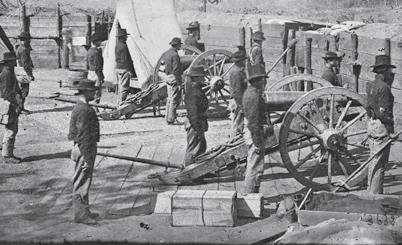
$19.95 + $3.50 shipping 128 pages, photographs, maps, bibliography. $19.95 + $3.50 shipping. Softbound. ISBN: 978-1-61850-151-6. www.HistoricalPubs.com. Order online at www.HistoricalPubs.com or call 800-777-1862
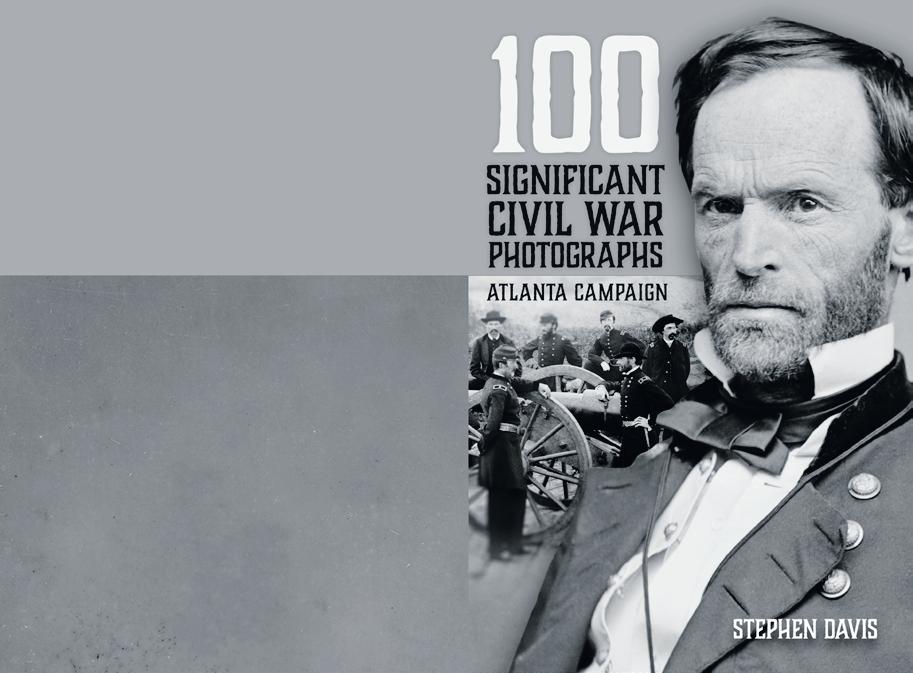
9
The American Civil War was the first war in which both sides widely used entrenchments, repeating rifles, ironclad warships, and telegraphed communications. It was also the first American War to be extensively photographed. Mathew Brady, Alexander Gardner and Timothy O’Sullivan are famous for having made iconic photographs in the Civil War’s eastern theater. George N. Barnard deserves to be ranked in this top tier for his photographic A civilian photographer hired by Gen. William T. Sherman’s chief engineer to take pictures of fortifications around Atlanta, Barnard took several hundred of them in and around the city in the fall of 1864. His most famous is the site of Union Maj. Gen. James B. McPherson’s death in the battle of Atlanta, July 22, 1864. Thus far, no comprehensive, definitive listing has been made of the photographer’s work. The Library of Congress has 130 images; the U. S. Military Academy at West Point, New York, has at least 98 photographs, donated by Captain Poe’s widow. Other repositories, such as the Gilder Lehrman Institute of American History in New York City, have smaller collections. For this book we have chosen a hundred images we deem “significant,” though other students may wonder at some of our selections. We hope that this work will stimulate further interest in Barnardiana, and that other scholarly volumes are yet to come. The Atlanta Campaign STEPHEN DAVIS 100 SIGNIFICANT CIVIL WAR PHOTOGRAPHS ATLANTA CAMPAIGN
us at
N Civil War News Inside this issue: Day Remembrance Day, 2019, GettysburgThe world will little note, nor long remember what we say here, but it can never forget what they did here. – Abraham Lincoln, November 19, 1863.----
News? Email
ads@civilwarnews.com or Call 800-777-1862 CW
NEWS
Kinsley Leadership Center Opens at the Historic Spangler Farm & Field Hospital Site

On Friday afternoon, October 4, the Gettysburg Foundation hosted a ribbon-cutting ceremony to open the Kinsley Leadership Center. It is housed in the renovated farmhouse of the George Spangler Farm & Field Hospital Site on Blacksmith Shop Road just behind the Union Line on Cemetery Ridge. Named in honor of the Foundation’s Chair Emeritus and his wife, Robert and Anne Kinsley, the Kinsley Leadership Center is the new home for the Foundation’s Executive Leadership Program, In the Footsteps of Leaders.
Founded by Licensed Battlefield Guide Sue Boardman, the Program has been in existence for thirteen years and now,

for the first time, has a permanent home, situated at one of the most important sites on the battlefield.
The newly renovated farmhouse is part of an 80-acre property that represents one of the best preserved and significant Civil War field hospitals in existence. The farm and vicinity are largely undeveloped, with an unbroken 360-degree view of farmland and forest, providing visitors the opportunity to experience an intact 19th-century rural historic landscape.
Built in the early 1800s, the farm served as a staging area for the Union Army of the Potomac Artillery Reserve and a Union field hospital. Now fully restored to its 1863 appearance, the Foundation uses the Spangler Farm & Field Hospital Site to tell the unique and compelling story of the role this farm played in the most significant battle of the Civil
War from the perspective of more than 1,800 wounded soldiers from both sides who were treated at the farm and the surgeons and nurses who cared for them.
As the headquarters for the Foundation’s Leadership Program, participants can become fully immersed in a Gettysburg experience from start to finish. The experiential program consists of guided tours of the battlefield studying command decisions and the dramatic and immediate consequences of those decisions from the places where those decisions were made. The Kinsley Leadership Center adds an additional layer of interpretation to the robust history already being offered by the Program. With its state-of-the-art classroom, the
Kinsley Leadership Center can now host debriefing sessions and team-building components at the Spangler Farm, offering an historic site to reflect on the leadership lessons of Gettysburg without modern intrusions.
Eric Schultz, chairman of the Foundation’s Board of Directors, remarked, “This beautiful facility will provide new technology and innovative opportunities for education while enhancing the historic preservation efforts we all treasure.”
Bob Kinsley shared that he and Anne were very excited to see the farmhouse project brought
to completion and expressed the hope that visitors and groups studying leadership at the site “will understand its significance and ponder the agony of wounded and dying soldiers, the compassion of local women who cared for them, and the sacrifice of all who worked diligently.”
The Gettysburg Foundation is looking forward to welcoming future participants to the Kinsley Leadership Center.
For more information about the leadership center, Spangler Farm and other programming offered by the Gettysburg Foundation, visit www.GettysburgFoundation.org.
Gettysburg, more than simply a battlefield, a town and a single event in history, has been a remarkable place of healing and kindness, of remembrance and reconciliation. When we lose our connection to historic sites, it is gone forever.


10 Civil War News February 2020
Sue Boardman
Join the Friends of Gettysburg. GettysburgFoundation.org | (717) 339-2156
-Brigadier General Alexander S. Webb
at
You must recollect that gettysburg the fate of a country depended upon individuals
Spangler Ribbon Cutting. Left to right: Sue Boardman, Dr. Matt Moen, Mr. and Mrs. Dick Morin, Mr. Eric Schultz, and Mr. and Mr. Kinsley.






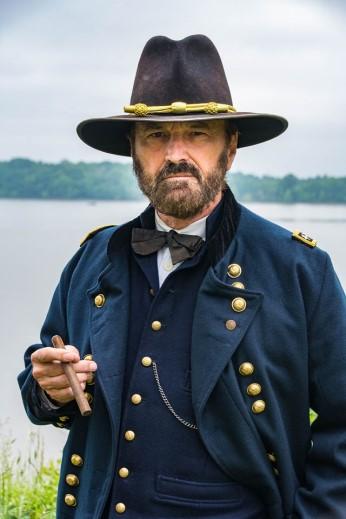


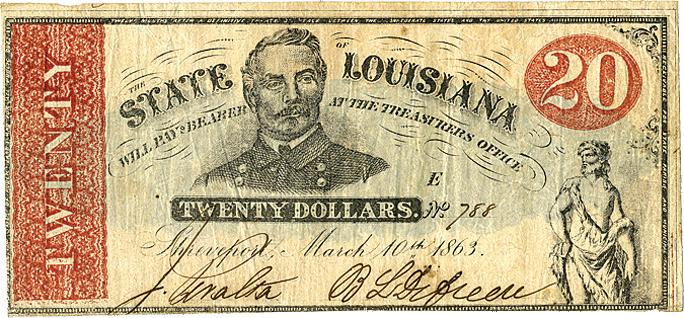


















11 February 2020 Civil War News Deadlines for Submissions is the 20th of each month. Email to: ads@civilwarnews.com CivilWarShop.com Established 1981 Buy – Sell – Trade Certified Appraisal Services Life Member, Company of Military Historians International Society of Appraisers Life Member, NC Division, SCV Federal Firearms Licensed Dealer 3910 US Hwy. 70 East • New Bern, NC 28560 (252) 636-3039 • civilwarshop@gmail.com Greg Ton • P.O. Box 9 • Franklin, TN 37065 901-487-5944 • GTon1@aol.com Greg Ton Buying and Selling the Finest Confederate, Obsolete and Southern States Currency Since 1978 GregTonCurrency.com
Spencer Ammo, Williamsburg Gun Making, & Reproduction Stadia
Spencer Ammo
Buffalo Arms is currently selling loaded obsolete black powder cartridge rifle ammunition. One caliber of interest to Civil War shooters is the 56-50 Spencer round made for use in the Armi Sport reproduction Spencer. The ammunition is loaded with Swiss black powder and .513 inch 350 grain flat nose bullets (item#513350 in the catalog) and properly head stamped brass (item #STR5650 in the catalog). The components are available separately as well, for those who want to load their own .56-50 ammo. I do not know if these cartridges can be used in other

Spencer conversions or reproductions, so you might want to check with the company on that. All ammunition is shipped from Buffalo Arms via UPS or FedEx Ground. So be sure you have a physical shipping address on your order, since UPS and FedEx will not deliver to a Post Office Box.

Williamsburg Gun Shop
This subject is not a Civil War topic, but of interest to the black powder shooter who is also a fan of earlier arms, as most of us are. When I was a kid, I used to badger my parents to take me on vacations to historical sites, including Fort William Henry, Fort Niagara, Gettysburg, and Williamsburg. One interesting feature of Fort Niagara was the colonial era living history person armed with a Model 1873 Springfield trapdoor rifle. Even
Vin Caponi Historic Antiques
by Joe Bilby
as a 12-year-old, I called that out. What fascinated me most at 1950s Williamsburg was much truer to the era. I was smitten by the hundreds of original flintlock muskets in the armory, and then the gun shop, where craftsmen were producing accurate copies of original 18th century arms using original 18th century style tools and techniques. A friend recently sent me a link to a YouTube video, made in 1969 and narrated by then iconic newsman David Brinkley, detailing the fascinating work of the Williamsburg craftsmen. These guys literally worked from scratch, making a barrel and rifling it. These guns cannot really be called “reproductions.” Perhaps “re-creation” would be a better title. Every detail of the process is filmed and explained. The video can be seen at: https://m.youtube.com/ watch?v=qTy3uQFsirk.

Cap and Ball Stadia
Speaking of YouTube, one channel I heartily indorse is capandballeu’s cap and ball films. The creation of Hungarian shooter and muzzle loading expert Balázs Németh, aka Capandball, the channel is a treasure trove of black powder shooting videos. Most recently Balazs profiled a stadia range finder he is making that replicates one manufactured during the Civil War.
smoothbore muskets, and instructed the regiment to open fire at the Confederates, advancing in Pickett’s Charge, when “they reached the road” around 200 yards from the Twelfth’s position. My own testing of smoothbores, firing the standard “buck and ball” charge at 100 yards, resulted in .69 caliber balls hitting at various points on a backstop berm, and the buckshot hitting the ground about 75 yards from the shooters.
Many of the Jerseymen had loaded their muskets with a dozen or more buckshot taken from disassembled cartridges, so had the Twelfth opened up at 200 yards, much of the fire would have been wasted. The regiment ignored the officer, waited, and then stood up from behind the stone wall to fire into the 26th North Carolina at point blank range. The fire was quite effective.
Even rifle muskets, with their superior accuracy and range, had to, beyond 100 yards or more, be accurately sighted, which, due to the trajectory of the projectile, required a shooter who could correctly estimate distance. The stadia range finder was the best instrument to use as a range determinant in a fixed combat situation. These artifacts are rare today, most likely because few were made. But if you want to check range the old-fashioned way, or your historical impression is as a company commander or the best shot in your outfit, you might want to get one.

Reproduction stadia are now available from Balazs Nemeth. Nemeth has a Facebook page as “Kapszli.hu – Capandball.eu”
along with his YouTube channel with some great videos, especially for Civil War buffs, as he test fires weapons that were imported by North and South in large numbers during the war.
One interesting aspect of this story for me was that when I contacted Balasz for a high definition photo of the stadia he is producing, he mentioned that I had been one of his early inspirations to get into the muzzle loading shooting game. About twenty years ago he had purchased my book Civil War Firearms, which he enjoyed. If you want to see a demonstration of how to use the stadia, I recommend checking it out on Balazs’ YouTube channel at: https://tinyurl.com/yx4p5as5.
Joseph G. Bilby received his BA and MA degrees in history from Seton Hall University and served as a lieutenant in the 1st Infantry Division in 1966–1967. He is Assistant Curator of the New Jersey National Guard and Militia Museum, a freelance writer and historical consultant and author or editor of 21 books and over 400 articles on N.J. and military history and firearms. He is also publications editor for the N.J. Civil War 150 Committee and edited the award winning New Jersey Goes to War. His latest book, New Jersey: A Military History, was published by Westholme Publishing in 2017. He has received an award for contributions to Monmouth County (N.J.) history and an Award of Merit from the N.J. Historical Commission for contributions to the state’s military history. He can be contacted by email at jgbilby44@aol.com.
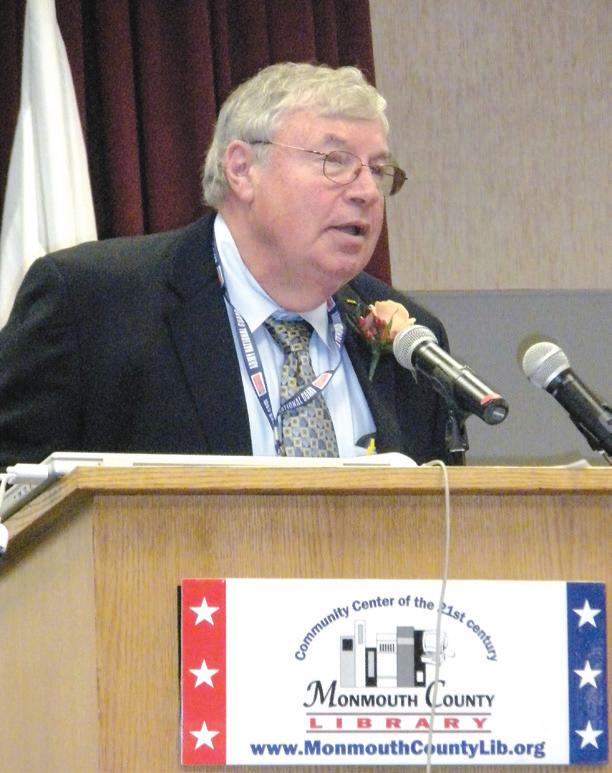
Vin Caponi, Jr. 18 Broadway
Malverne, NY 11565
Store: 516-593-3516
Cell: 516-353-3250
rampantcolt@aol.com http://www.vincaponi.com

As I have noted, in columns and books numerous times, formal marksmanship training, although recognized as a necessity in European armies, and encouraged by American officers who copied British and French manuals in an effort to stimulate such training on this side of the Atlantic, was seldom considered as part of the training regimen in the Civil War. If you could load a musket and pull a trigger, you were good to go, at least in the earlier part of the war.
Unfortunately, even many officers were clueless regarding firearm ranges. At Gettysburg a staff officer rode up to the 12th New Jersey Infantry, positioned at the Inner Angle’s wall, armed with

12 Civil War News February 2020
We carry a very large inventory of Colt and Civil War firearms including muskets, carbines, rifles and accoutrements. Our inventory of historic antiques and firearms begin at the early collectors level and range all the way up to the advanced collector and investors level.
Balazs’ reproduction stadia. (Balazs Nemeth)
Want To Advertise In Civil War News? Email us at: ads@civilwarnews.com
Comments from Our Readers
“I applaud Steve Davis’ selection and use of George Barnard’s photographs, which are seen on the printed page all too rarely. Davis takes readers on a visual journey from the earliest days of the Atlanta Campaign to Union capture of the city while zooming into the many details hidden in the depths of Barnard’s glass plate negatives. With introductory information and professionally curated and described photographs, Steve Davis presents a book from which casual Civil War buffs and serious Civil War photography students will benefit.”
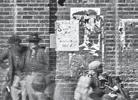
Garry Adelman Vice President, Center for Civil War Photography
“I’m thrilled with your very crisp, readable, easily grasped-yet-informative book. AND—it has the image quality and detail people love.”
Gordon L. Jones

Senior Military Historian and Curator, Atlanta History Center



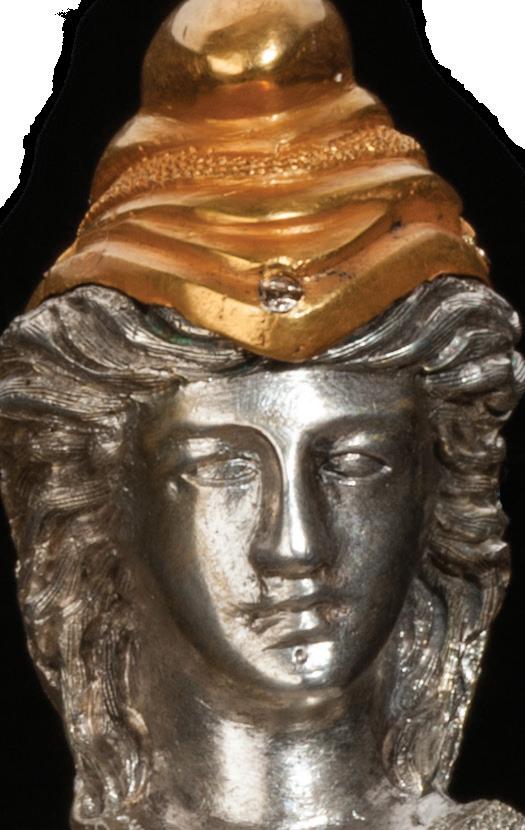







“The first thing I look for and see in any volume of Civil War photos is the quality of reproduction, and Stephen Davis’ 100 Significant Civil War Photographs: Atlanta Campaign easily passes that test, with rich and appealing reproductions, many from the original glass negatives. Davis also distinguishes his work by showing many of the fascinating details that emerge only with a closer examination of the images. The study and presentation of Civil War photography has become increasingly specialized and detailed in the past 50 years, and Davis’ book exemplifies that and represents another significant addition to the field.”

 Bob Zeller President, Center for Civil War Photography
Bob Zeller President, Center for Civil War Photography
“I have a small roller-type book cart next to my desk, where I keep only special reference books, which I frequently consult in my research and writing. This title now has a place on the cart! I congratulate you on an engaging narrative to accompany the photographs you and I treasure. A job well done!”
Michael K. Shaffer, Instructor Kennesaw State University and Emory University, Kennesaw, Ga.
Publishers:

The American Civil War was the rst war in which both sides widely used entrenchments, repeating ri es, ironclad warships, and telegraphed communications. It was also the rst American War to be extensively photographed. Mathew Brady, Alexander Gardner and Timothy O’Sullivan are famous for having made iconic photographs in the Civil War’s eastern theater. George N. Barnard deserves to be ranked in this top tier for his photographic work in the war’s western theater. A civilian photographer hired by Gen. William T. Sherman’s chief engineer to take pictures of forti cations around Atlanta, Barnard took several hundred of them in and around the city in the fall of 1864. His most famous is the site of Union Maj. Gen. James B. McPherson’s death in the battle of Atlanta, July 22, 1864. Thus far, no comprehensive, de nitive listing has been made of the photographer’s work. For this book we have chosen a hundred images we deem “signi cant.” 128



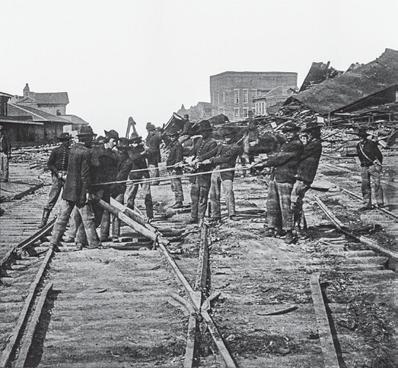
13 February 2020 Civil War News
Civil War News
Folly Road, Suite 25 PMB 379 Charleston,
29412
Please send your book(s) for review to:
520
SC
“The best little book on Barnard”
page Paperb ac k: $19.95
S & H)
info: $19.95 plus $3.50 s&h South Carolina residents add 9% sales tax Mail a check to: Historical Publications LLC 520 Folly Road, Suite 25 PMB 379 Charleston, SC 29412 or Order online at www.historicalpubs.com Wrecking Atlanta Northern Engineers Prying Up Track Shadow dating is the practice of timing photograph by studying its shadows. the right—leading one to deduce that this picture was taken on the afternoon of November series of the 1880s. When the men of the 1st Missouri Engineers (oneofPoe’s twoengineerregimentsatAtlanta)sawtheTaberillustration,theyapparentlyrecognized themselves,tothepointofreprintingthedrawingintheirregimentalhistoryof1889with thecaption,“theFirstMissouriEngineersdestroyingarailroadshowingtheuseofhooks made by them for the purpose.” for Monday, November 7. Freedpeople on the Boxcars Library of Congress. Congress images bear no captions (as do Poe’s pictures), so students of Barnardiana have to scrutinize the pictures and compare them to others. Confederate Lt. Col. Bushrod W. Frobel, assistant chief engineer in Hood’s army, called this“thePeachtreestreetbattery.”InhisdiaryentryforAugust14,1864,heremarkedon thesharpskirmishinginfrontofit.Federaltroops,however,neverassaultedtheConfederate works surrounding Atlanta. Peachtree Battery–Another View
(+$3.50
Ordering
THE FINEST HISTORICAL ANTIQUE MILITARIA Wallace Markert info@csacquisitions.com 16905 Nash Road • Dewitt, Virginia 23840 804-536-6413 • 804-469-7362 www.csacquisitions.com Buying and Selling The Finest in Americana 11311 S. Indian River Dr. • Fort Pierce, Florida 34982 770-329-4985 • gwjuno@aol.com George Weller Juno
“I don’t believe we can have an army without music,” – General Robert E. Lee to Colonel John R. Lane Commander of the 26th NC Regt., prior to the Battle of the Wilderness, May 2, 1864.
During the Civil War, military musicians were divided into two main groups. The first group was field musicians; the second was the marching band. Field musicians played the fife, bugle, or the field snare drum. The main purpose of field musicians was to transmit routine orders through music. Field musicians didn’t need as much musical ability as those who served in marching bands. The instruments of field musicians were easier to learn and the pieces they were required to play required less technical ability.





The role of the military brass marching band was quite different. The rise of the brass marching band was an interesting development of the mid-19th century that mirrored broader societal trends across the country. The military marching band itself was a common feature of large European armies as early as the 1700s and they made their way to the American colonies by the time of Revolutionary War. The European military bands of that time were made up of woodwinds: usually two oboes and clarinets, two bassoons or serpents (similar to a clarinet), a simple horn like a bugle with no valves or keys, and a trombone. Prior to the mid-nineteenth century, brass instruments were valveless and, with the exception of the trombone, their use by amateur players was limited to fewer musical tones.
This all changed in the 1840s when Adolph Sax invented a series of valved brass instruments known as “saxhorns.” As a result it became easier to accomplish a broader array of tones using the new brass instruments. Over the next twenty years, the brass band became an integral part of the American music scene. There were community brass bands made up of professional musicians thriving in most major U.S. cities. Sax’s brass instruments ran a full range from soprano to bass. Adolph Sax also invented a line of woodwind instruments for which he later became much better known: the saxophone. These were not a feature of brass bands until later in the 19th century and were not in use during the Civil War-era. By the 1850s, most of the woodwinds in marching bands with the exception of the fife, or perhaps a clarinet, were not in wide use. Another interesting feature of some of the saxhorns was the backward facing bell that directed sound to the rear of the musician, where the
$39.95
Available online at http://booklocker.com/books/9403.html

14 Civil War News February 2020
Brass Bands
Hardcover, 534 pages.
Amazon.com and Barnes & Noble.
Ten unidentified soldiers that form a Union regimental band with saxhorns and drums. (Library of Congress)
Ian Lowther – 1864 Eb Bass
Dale Proctor – 1864 Bb Cornet
Rory Hamaker – 1862 Bb Tenor Horn
February 2020
Army was marching.
According to E. Lawrence Abel (Singing the New Nation: How Music Shaped the Confederacy, 1861–1865), by the beginning of the Civil War in 1861, “[a] brass band was such an integral part of American culture that soldiers on each side felt their regiments and brigades were inferior if they did not have one. A brass band greatly enhanced the prestige of a military unit. Oftentimes officers paid for bands out of their own pockets. Band music lightened a march; it surged a soldier’s adrenaline before a battle; it rallied flagging spirits.” By 1862, there were an estimated four thousand musicians in the Union Army alone. It was also estimated there were an additional 150 regimental bands in the Confederate Army. The expense of having to maintain so many marching bands in the Union Army cost the Federal government an estimated four million dollars a year. The U.S. Congress finally had to pass a bill eliminating regimental bands and limiting the Army to one marching band per brigade (made up of three or four regiments). In response, many regiments self-funded their own bands made up of soldiers recruited for their musical abilities.
According to John Nicholas, Park Ranger at Gettysburg National Military Park, “With fewer resources, the Confederate armies had fewer bands (than the Union). That did not mean Confederate soldiers were any less enthusiastic about music. General Jeb Stuart, was a connoisseur of music, and always ensured there were musicians at his headquarters and he sometimes
went into battle accompanied by a banjo player (named Sam Sweeney). The band of the Stonewall Brigade was considered one of the best, if not the best band in Lee’s army. Many Moravian immigrants settled in Salem, North Carolina, and served in bands during the war; the best known of which was the 26th North Carolina band, which served at Gettysburg.”
The 26th NC band was noteworthy as well because their band books survive in the collections of the Moravian Music Foundation. They are the only known surviving complete set from a Confederate military marching band. According to Bob Baccus of the Olde Towne Brass Band (Huntsville, Ala.) there are six complete sets and a seventh partial set that contain “several hundred titles, representing a true cross-section of music played by both Union and Confederate bands. There are marches and quicksteps, ballads, waltzes and polkas, novelty tunes, patriotic airs, and chorales.” As you might expect, some tunes are associated with the Confederacy such as “Bonnie Blue Flag,” “26th Regiment Quickstep,” “Old North State,” “Maryland! My Maryland!,” “The Southern Victorial March,” and “Dixie’s Land.” Baccus noted, “One must recall that Dixie’s Land, while it came to be more closely associated with the South, was written by a Northerner from Ohio named Daniel Decatur Emmitt in 1859 and was popular across the country. It was also said to be a favorite of US President Abraham Lincoln and he had it played at political rallies.” The 26th NC band
Civil War News
also played novelty tunes such as “Mister Here’s Your Mule” and “India Rubber Overcoat.” According to Baccus, “The last tune the band played before being taken as prisoners on April 5, 1865, was the sentimental ballad “Lorena.” They were imprisoned at Point Lookout, Md., for nearly three months; after their release, they returned to Salem, arriving on the afternoon of July 2, 1865.”
Bob Baccus and the Old Towne Brass Band recently played two concerts at Oaklands Mansion in Murfreesboro, Tenn., that featured a variety of different period military marches and patriotic airs. Baccus and the Olde Towne




Brass perform songs from Civil War marching bands, both North and South. In addition, several musicians play original Civil War period Over-The-Shoulder (OTS) brass horns. This lends excellent insight into what the music of the time period actually sounded like to listeners. Olde Towne Brass will be playing at the Battle of the Bands program at Stones River National Battlefield on October 17, 2020.
Craig L. Barry was born in Charlottesville, Va. He holds his BA and Masters degrees from the University of North Carolina (Charlotte). Craig served The
Watchdog Civil War Quarterly as Associate Editor and Editor from 2003–2017. The Watchdog published books and columns on 19th-century material and donated all funds from publications to battlefield preservation. He is the author of several books including The Civil War Musket: A Handbook for Historical Accuracy (2006, 2011), The Unfinished Fight: Essays on Confederate Material Culture Vol. I and II (2012, 2013) and three books (soon to be four) in the Suppliers to the Confederacy series on English Arms & Accoutrements, Quartermaster stores and other European imports.
15
Terry Cornet, Steve Androlake – Rope Tensioned Drums.
Olde Towne Brass – Cornets and Cannons – Frankfort, Kentucky.
Olde Towne Brass – Oaklands Mansion, Murfreesboro, Tenn. (Photos courtesy Bob Baccus, Olde Towne Brass)
Olde Towne Brass – Great American Brass Band Festival – Danville, Kentucky.
Tools for Searching the National Archives Online (Part II)
month, we cover the 1968 publication Guide to the Archives of the Government of the Confederate States of America, which Henry Putney Beers compiled. In the preface to this work, Beers reminded researchers,”…many of the Confederate archives have been lost or destroyed.” Seeking to fill this void, Beers and company consulted the state archives from most of the former states of the Confederacy. This source, totaling 536 pages, contains much information on the records of the Confederate Congress, the Judiciary, and Executive branches, as well as the various governmental departments. An appendix, ‘List of Records Groups Containing Confederate Records,’ will serve as the focus of this article.

A listing of these record groups, and a brief description of the contents within each follow.
Record Group (RG)
Record Hierarchy
RG 19. Records of the Bureau of Ships
Navy Department: Chief Constructor
RG 21. Records of the District Courts of the United States Judiciary: Confederate District Courts
Treasury Department: Record of Field Offices - Alabama
RG 26. Records of the United States Coast Guard
Treasury Department: Record of Field Offices – South Carolina
RG 28. Records of the Post Office Department Treasury Department: Office of the First Auditor
RG 36. Records of the Bureau of Customs Treasury Department: Record of Field Offices
War Department: Territorial Commands and Armies Dept. of Alabama, Mississippi, and E. Louisiana
District of the Gulf
RG 37. Records of the Hydrographic Office
Navy Department: Office of Ordnance and Hydrography
Record Group (RG)
Record Hierarchy
RG 75. Records of the Bureau of Indian Affairs
War Department: Bureau of Indian Affairs
Post Office Dept.: Post Offices
RG 76. Records of Boundary & Claims Commissions & Arbitrations
Navy Department: Cruisers
RG 77. Records of the Office of the Chief of Engineers
War Department: Engineer Bureau – Cartographic Records
Commanders, Staff Officers, and Other Personnel – Capt. John C. Wrenshall
RG 84. Records of the Foreign Service Posts of the Dept. of State
Navy Department: Cruisers
RG 92. Records of the Office of the Quartermaster General
War Department: Engineer Bureau – Cartographic Records
RG 94. Records of the Adjutant General’s Office
War Department: Engineer Bureau – Cartographic Records
Office of the Chief of Ordnance –Arsenals, Armories, and Ordnance Depots
Macon Central Laboratory
In the December 2019 installment of this column, readers learned of the recent online enhancement offering Optical Character Recognition (OCR) searches of the various Record Groups in the National Archives. Since the December article, the National Archives changed the website referenced for OCR searches. The new URL: https:// catalog.archives.gov/searchLast.

Last month, we outlined the Guide to the Federal Archives Relating to the Civil War; this
Remember to check WorldCat http://www.worldcat.org for help in finding the Guide to the Archives of the Government of the Confederate States of America in a local library; conduct your search using the book’s title, and also check for other current reprint editions. Review additional information on this resource at https://www.archives.gov/ publications/finding-aids/guides. html#civilwar.
Continued good luck in researching the Civil War!
Michael K. Shaffer is a Civil War historian, author, lecturer, instructor, and a member of the Society of Civil War Historians, the Historians of the Civil War Western Theater, the Georgia Association of Historians, and the Georgia Writers Association. Readers may contact him at mkscdr11@ gmail.com, or to request speaking engagements, via his website www.civilwarhistorian.net. Follow Michael on Facebook www.facebook.com/michael.k.shaffer and Twitter @michaelkshaffer.
Record Group (RG) Record Hierarchy Record Group (RG) Record Hierarchy
RG 39. Records of the Bureau of Accounts Treasury Department: Treasury Note Bureau
RG 98. Records of the United States Army Commands
War Department: Regiments, Battalions, and Companies – North Carolina Troops
RG 104. Records of the Bureau of the Mint Treasury Department: Records of Field Offices, North Carolina
RG 41. Records of the Bureau of Marine Inspection and Navigation Treasury Department: Records of Field Offices
Page 1 of 5
RG 45. Naval Records Collection of the Office of Naval Records and Library Department of State: Records of Commissioners and Agents
Treasury Department: Office of the First Auditor Lighthouse Bureau Records of Field Offices – Tennessee
War Department: Territorial Commands and Armies Dept. of North Carolina and Southern Virginia
Dept. of South Carolina, Georgia, and Florida
Navy Department:
Office of Orders and Detail
Office of Ordnance and Hydrography
Office of Provisions and Clothing
Office of Medicine and Surgery
Engineer-in-Chief Chief Constructor
Marine Corps
Naval Squadrons
Naval Batteries
Naval Procurement in Europe
Navy Yards, Naval Stations, & Works
Blockade-Runners Cruisers
RG 153. Records of the Office of the Judge Advocate General (Army)
War Department: Office of the Commissary General of Prisoners – Military Prisons, Andersonville
RG 249. Records of the Commissary General of Prisoners
War Department: Office of the Commissary Generalof Prisoners Military Prisons
Territorial Commands and Armies
Department of Richmond
16 Civil War News February 2020
–
Deadlines for Advertising or Editorial Submissions is the 20th of each month. Email to: ads@civilwarnews.com Subscribe online at CivilWarNews.com
Office of Ordnance and Hydrography
RG 109. War Dept. Collection of Confederate
Records.:
General Records of the Confederates Government: Constitutional Convention Laws & Resolutions Electoral Papers Indian Treaties

Congress: Provisional Congress Congress Senate House of Representatives
Presidency
Judiciary:
District Court of North Carolina
District Court of South Carolina
Dept. of State: Records of Commissioners & Agents
Treasury Dept.: Office of the Sec. of Treasury
Office of the Comptroller
Office of the Register Office of the First Auditor
Office of the Second Auditor
Office of the
Commissioner of Taxes
Treasury Note Bureau
Treasury Agent for the Trans-Mississippi West Records of Field Offices War Dept.: Office of the Secretary of War
and Inspector
Office Quartermaster General’s
Bureau Office of the Inspector General of FieldTransportation
General’s
and Subsistence Department Surgeon General’s Office and the Medical Dept. –Surgeon General’s- Office Medical Directors Medical Purveyors
Bureau
Records
of Indian Affairs
of the Chief of Ordnance
Armories, and Ordnance- Depots
of Exchange
17 February 2020 Civil War News The Artilleryman Magazine is a quarterly magazine for enthusiasts who collect ordnance and shoot cannon from the Rev War to World War II. Subscription only $34.95/year. Historical Publications LLC 520 Folly Road, Suite 25 PMB 379 Charleston, SC 29412 800-777-1862 Subscribe online at” ArtillerymanMagazine.com Page 3 of 5 Record Group (RG) Record Hierarchy Record Group (RG) Record Hierarchy RG 56. General Records of the Dept. of the Treasury War Department: Engineer Bureau Navy Department: Office of Orders and Detail Blockade-Runners RG 365. Treasury Dept. Collection of Confederate Records Judiciary: District Court, Southern Division of Georgia District Court, Eastern District ofTexas Treasury Department: Office of the Secretary Office of the Treasurer Office of the Comptroller Office of the First Auditor Office of the Second Auditor Office of the Third Auditor Lighthouse Bureau Produce Loan Office Office of the Commissioner ofTaxes Treasury Note Bureau Records of Field Offices War Department: Territorial Commands and Armies –Trans-Mississippi Department District of Texas, New Mexico, and Arizona RG 59. General Records of the Dept. of State Department of State War Department: Office of the Chief of Ordnance Navy Department: Office of the Secretary of the Navy Cruisers Navy Yards, Naval Stations, and Works –Norfolk Naval Yard RG 366. Records of Civil War Special Agencies of the Treasury Department Treasury Department: Records of Field Offices, South Carolina RG 74. Records of the Bureau of Ordnance Navy Department:
Page 4 of 5
Office
Office
Arsenals,
Bureau
Bureau
State Conscription Offices Niter and Mining Bureau Bureau of Foreign Supplies Page 5 of 5 Office of Commissary General of-Prisoners Military Prisons Headquarters of the Army Territorial Commands and Armies Regiments, Battalions, and Companies State Commands Commanders, Staff Officers, and OtherPersonnel Navy Dept.: Office of Ordnance and Hydrography Chief Constructor Navy Yards, Naval Stations, and Works Post Office Dept.: Office of Postmaster General Appointment Bureau Contract Bureau Finance Bureau Inspection Office Office of Military Telegraphs Agent for the TransMississippi West Post Offices Justice Dept.: Office of the Attorney General Patent Office Page 3 of 5 Record Group (RG) Record Hierarchy Record Group (RG) Record Hierarchy RG 56. General Records of the Dept. of the Treasury War Department: Engineer Bureau Navy Department: Office of Orders and Detail Blockade-Runners RG 365. Treasury Dept. Collection of Confederate Records Judiciary: District Court, Southern Division of Georgia District Court, Eastern District ofTexas Treasury Department: Office of the Secretary Office of the Treasurer Office of the Comptroller Office of the First Auditor Office of the Second Auditor Office of the Third Auditor Lighthouse Bureau Produce Loan Office Office of the Commissioner ofTaxes Treasury Note Bureau Records of Field Offices War Department: Territorial Commands and Armies –Trans-Mississippi Department District of Texas, New Mexico, and Arizona RG 59. General Records of the Dept. of State Department of State War Department: Office of the Chief of Ordnance Navy Department: Office of the Secretary of the Navy Cruisers Navy Yards, Naval Stations, and Works –Norfolk Naval Yard RG 366. Records of Civil War Special Agencies of the Treasury Department Treasury Department: Records of Field Offices, South Carolina RG 74. Records of the Bureau of Ordnance Navy Department: Office of Ordnance and Hydrography RG 109. War Dept. Collection of Confederate Records.: General Records of the Confederates Government: Constitutional Convention Laws & Resolutions Electoral Papers Indian Treaties Congress: Provisional Congress Congress Senate House of Representatives Presidency Judiciary: District Court of North Carolina
Adjutant
General’s
Office Pay
Railroad Bureau Tax in Kind Bureau Commissary
Hospitals Engineer
Cartographic
Bureau
of Conscription
by Carl L. Sell, Jr.
Major General Jeb Stuart knew exactly where he was going when he headed south from Gettysburg early in the morning of July 5, 1863. His cavalry forces had been ordered to protect the Confederate retreat. He led two brigades south toward Emmitsburg, Md., while the others stayed close to the main body heading south and west through the mountain passes toward the Potomac River and safety in what is now West Virginia.
General Robert E. Lee ordered Brigadier General John Imboden’s Brigade to escort a 30-mile long wagon train composed of Hill’s, Longstreet’s, and Stuart’s supply and ambulance wagons. Ewell’s Second Corps wagons were on a parallel route. Since Imboden’s Brigade was independent, it operated from Army of Northern Virginia’s leader instead of cavalry commander Jeb Stuart. The wagons began to roll at 4 p.m. on July 4; the last one reached Williamsport, Md., early on July 6. Along the way, it encountered attacks, both by Union cavalry and angry citizens.
Stuart sent brigades led by Brigadier General Fitzhugh Lee and Colonel Lawrence Baker to protect the army’s left flank and a wagon train consisting of supplies and ambulances filled with wounded Confederates, along with captured Union soldiers. Baker led the brigade formerly under Brigadier General Wade Hampton, who had been wounded in battle, first slightly at Hunterstown on July 2 and then more seriously by a saber at the East Cavalry Field on July 3.
Stuart Shields Retreat From Gettysburg

Hampton was in an ambulance with Maj. Gen. John Bell Hood, wounded severely in the arm by an exploding shell in the late afternoon of July 2 as his infantry division attacked Little Round Top.
Brigades led by Brigadier General Beverly Robertson and Brigadier General William (Grumble) Jones were sent to guard the mountain passes. Riding with Stuart were the brigades of Colonel John Chambliss and Colonel Milton Ferguson. Chambliss was filling in for W.H.F. (Rooney) Lee, General Lee’s son who was wounded at Brandy Station, while Ferguson headed the brigade previously led by Brigadier Albert Jenkins, who had been wounded in the head by shrapnel while returning from General Lee’s headquarters on the afternoon of July 2.
Stuart headed for the road that would take him through the Catoctin Mountains and South Mountain, the same route he had followed in 1862 on the way to Sharpsburg and was approaching through the mountains as he did to reach Sharpsburg. After being slowed by darkness and heavy rain overnight, Stuart pressed on from Gettysburg to Emmitsburg, which had been hit by a devastating fire that burned a quarter of the town on June 15.
After a short skirmish with some home guards, the Confederates gathered up medical supplies that were on the way to the Union army, along with some prisoners, and headed down the Frederick Post Road. Among the prisoners were two signal officers who had operated a relay station on the
mountains near Emmitsburg. Along the way, he ran into Rev. John McCloskey from nearby Mount St. Mary’s College and the two rode together for a way. Father McCloskey recalled that an aide rode up to Stuart and asked for directions. Stuart took off his hat, looked attentively at a map he had inside it, and then gave the orderly his directions.
When the column reached the intersection of the Frederick Post Road and Rocky Ridge Road, Stuart sent a detachment led by Colonel Robert Beale on Rocky Ridge Road toward the nearby town of Graceham. Stuart and the main column continued on toward Creagerstown, which he called Cooperstown. Stuart later would return to the vicinity of Graceham via a road from Creagerstown.
The written history of Graceham records that 300 Confederate cavalry had passed through the town on the way to South Mountain on Sept. 12, 1862. More passed through Graceham the next day, including seven who stopped for breakfast at the parsonage of the Moravian church, which dates back to 1758. Stuart obviously had been there previously. The history also mentions the Confederate cavalry’s visit in the afternoon of July 5, 1863.
Although no Union troops marched through Graceham on the way to Gettysburg, local history records that residents went east of town to watch XI Corps soldiers led by Maj. Gen. Oliver Howard march north on the Frederick Post Road, as Major General John Reynolds
after the First Corps passed on the way from Frederick. While in Graceham, the Confederates stopped to water their horses at a trough in front of a store owned by William Cramer. The store owner’s daughter, Belva Anne Elizabeth Cramer, pumped water for the men and their horses. As she did, tears started to run down her cheeks. Thinking she was afraid of the troopers, they told her not to cry because they would not hurt her. The men didn’t know that Belva had a toothache and the pumping made the pain worse.
(A pump, manufactured by a company that began business in 1865, was viewed late in 2019 when the Both Sides Civil War Tour visited Graceham. It was placed over the spot of the original well from which Belva Ann pumped the water. The store is no longer there. The site is the home of Thomas Seiss, who traces his ancestry back to the beginnings of Graceham. Godfrey Siess (the ‘i’ often went before ‘e’ in German) built his house in the 1750s and was involved in the formation of the new church. Jacob Siess was on the building committee for the

new church in 1797.
John Siess was a member of the Congregation Committee during the Civil War and would have been there during both Confederate visits. George Siess joined the Union army late in the war. Belva Anne Elizabeth, known as Betsy, was eight years old in July 1863. In 1875, she married William Henry Colliflower, the son of a shoemaker who lived just down the street. They had a son, Roy, on April 2, 1876, but William passed away unexpectedly less than a year later. Belva and the toddler then lived with her parents, William and Sarah Cramer.
In 1881, Belva married Samuel Milton Birely, who ran the family produce and grain business in Graceham after his father died. He later ran an insurance and brokerage business and founded the Birely-Osler Bank in Thurmont. The bank later became the Thurmont National Bank with Samuel as its president. He and Belva had four children before he died at age 45 from an infection caused by the cutting of two boils on his face while shaving. Belva died at age 86 on February 12, 1942, and is buried with her
18 Civil War News February 2020
The Both Sides Tour group from Virginia gathered in Graceham to hear the story about the young girl pumping water for the Confederates during their retreat from Gettysburg.
(Photos by Bill Kamenjar)
Graceham resident Timmie Bentz, author Carl Sell, and homeowner Tom Seiss on the deck under which the well for the pump is located. Timmie helped Sell find the location of the store where the horses of Confederate cavalry drank on July 5, 1863. He also pointed out the Moravian Church next door was having an oyster and turkey dinner on the very date the Both Sides Civil War would visit Graceham. One thing led to another. Seiss’ ancestors helped found the church and Graceham in the mid-1700s.
A young girl named Danielle from the Moravian Church in Graceham, Md., at a pump located where Belva Anne Elizabeth Coleman pumped water for Confederate cavalry members and their horses in front of her father’s store on July 5, 1863. husband in Thurmont.
A pre-tour stop in Graceham resulted in uncovering the history of the church and the site where Belva pumped the water. Most importantly, there was a sign at the church that advertised n oyster and turkey dinner the same day the tour would arrive.
The tour members enjoyed their oyster and turkey dinner at the historic church before riding
over South Mountain. They ran into pickets on the other side of the mountain who were protecting the main Federal column just ahead in Smithsburg.
The Federals, including Brigadier Generals Judson Kilpatrick and George Custer, were enjoying a community celebration in Smithsburg when Stuart’s guns interrupted their dinner. Kilpatrick ordered Union
believe the success was far overrated.” About this time, Stuart wrote, Captain G.M. Emack, First Maryland Cavalry, arrived with his arm in a sling and reported that he had been in the fight and partially confirmed the citizen’s report. Emack later said he and his small band had held off the Union cavalry long enough to allow much of the wagon train to escape. He also reported that Grumble Jones had been captured, information that quickly turned out not to be true.
Stuart heard from General Lee the next morning and decided to head toward Hagerstown rather than follow Kilpatrick toward Boonsboro. He was soon joined by Jones and his brigade, which had moved through Monterrey Pass with the main wagon train and reached Williamsport, where he reported the Potomac too “swollen” to ford. Stuart told Jones to head toward Boonsboro, then proceed toward Funkstown, covering the eastern approach to Hagerstown. Stuart first headed north toward Leitersburg, where he heard from General Lee, and then moved south to Cavetown, then west to Hagerstown.
As the Confederates approached Hagerstown, they learned the town was under the control of Kilpatrick’s Federal cavalry. After a house to house fight, including action in a church graveyard, Stuart and his men pushed the Federals back along the Boonsboro Road. Meanwhile, General Lee and Imboden were busy establishing a five-mile defensive line along the Potomac from Williamsport to Falling Waters using every able-bodied

man available. The next day, July 7, Imboden’s defense stopped Union cavalry led by Brig. Gen. John Buford from breaking through.

Lee then sent Stuart toward Boonsboro to intercept the Federal cavalry before it could advance again toward Hagerstown and Williamsport. That resulted in pitched battles at Boonsboro on July 8 and Funkstown on July 10, both of which delayed any attack on Williamsport and gave the Confederates more time to cross the river, which had begun to recede.
At Boonsboro, cavalry fought dismounted on a muddy field before the arrival of Union infantry resulted in a Confederate pullback. At Funkstown, Stuart established a defensive position that caused a Union withdrawal back toward the safety of its main column near Boonsboro. By that time, the Confederate defenses at the Potomac proved too strong for a Union assault.
On July 12, Army of the Potomac’s Major General Meade convened a meeting of his commanders to determine if an assault
on the Confederate line was advisable. The commanders counseled against such a move and Meade acquiesced. Two days later, he reversed the decision, but it was too late as the Confederates had crossed the river the day before.
This article adds to information in Sell’s book “Major General James Ewell Brown Stuart.” Proceeds from book sales are earmarked for the preservation of Stuart’s statue on Monument Avenue. The Stuart-Mosby Historical Society refurbished and repaired the statue in 2015. Sell also has written two books about his great grandfather and great uncle, both of whom were wounded and survived Pickett’s Charge at Gettysburg. Sell can be reached at sellcarl@aol.com or 703-971-4716.

Thanks to Tom Seiss (modern spelling of the family’s name) for encouraging the visit to the site of the pump; Karen Connair, a genealogist who was part of the tour, for providing information on Belva Ann Elizabeth Cramer and the Graceham Moravian Church; and Pastor Sue Kroetch for a fulfilling visit!

19 February 2020 Civil War News Promoters of Quality Shows for Shooters, Collectors, Civil War and Militaria Enthusiasts Military Collectible & Gun & Knife Shows Mike Kent and Associates, LLC • PO Box 685 • Monroe, GA 30655 (770) 630-7296 • Mike@MKShows.com • www.MKShows.com February 1 & 2, 2020 Chickamauga (Dalton) Civil War Show November 14 & 15, 2020 Capital of the Confederacy Civil War Show (original dates) December 5 & 6, 2020 Middle TN (Franklin) Civil War Show l
A Bigger Chunk Than We Could Chaw (Battle of Chickasaw Bayou part 2)
“We will lose 5,000 men before we take Vicksburg, and may as well lose them here as anywhere else.”
– U.S. Gen. William T. Sherman
At the onset of the Battle of Chickasaw Bayou, the first battle of the Vicksburg Campaign, Dec. 26-29, 1862, the Midwesterners of U.S. Gen. William T. Sherman’s Army of the Tennessee were in “good spirits and keen to start at any time.” They were intrigued by the strange land that combined “low boggy ground, with innumerable bayous or deep sloughs” with a dense undergrowth of woods covered in Spanish moss. None grasped that the terrain would be an adversary as formidable as the Confederates.
Furthermore, Sherman did not realize that C.S. Gen. Stephen D. Lee not only knew of their “surprise” attack but had already
determined the Federal’s five probable approaches and created an effective defensive plan.
At Johnson’s plantation, Lee’s Louisianans withstood 20-pdr. Parrot shells fired by Wisconsin cannoneers of U.S. Gen. Morgan L. Smith’s Brigade, stalling the advance. At the same time, U.S. Gen. Frederick Steele’s Division marched to the left of Chickasaw Bayou.
When Confederate infantry blocked their route, Steele ordered the 2nd Mo. Light Artillery to clear the way. The 1st Miss. Light Artillery with five pieces held firm but to conserve ammunition began to slacken their fire. Believing the enemy’s guns were disabled, Steele ordered a charge into a narrow lane ahead.
Confederate artillery fired into the dense target and the blue coats dove for cover. Steele called off the charge while bringing in more guns. The increased firepower turned the tables on the Confederates but Steele was unable to punch past his foe. Back downstream to Johnson’s plantation went Steele.
Smith, ordered to cross the bayou, rode ahead to scout the way. The 53rd Ill. warned him that the enemy’s sharpshooters were active. Smith made his way to the bayou and looked through his field glass. He was shot through the hip with the bullet lodging near his spine. Smith, “coolly put up the glass and turned his horse around and rode back to the rear.” Pale, with blood dripping down his stirrups, Smith would not leave the field before shouting, “Boys give them h--l!”
The attack proceeded with David Stuart taking command. The Chicago Light Artillery fired their 20-pdr Parrott guns. The 53rd Ill. skirmishers became “expert in seeking cover among themselves with the moss hanging everywhere from the limbs for further disguise.”
A group of Confederate sharpshooters left their breastworks via a gully to get closer to the 83rd Ind. Six Federals countered by crossing to a large log with an excellent vantage point. The Hoosier’s first volley resulted in the Confederates scrambling
back like “frightened turkeys.”
Despite the valiant effort of their brethren, the 54th Ohio suffered severe casualties clearing abatis that blocked the way.
U.S. Gen. George W. Morgan noticed that the rebels were not guarding the position before him due to the width and depth of the water. Capt. W.F. Patterson’s engineers began building a pontoon bridge during the night. Later, it was discovered that the bridge was being constructed over the wrong bayou; the effort was delayed. Daybreak revealed the new construction over the correct stream to the rebel scouts. The enemy fired upon the builders; the Federals rushed to fire back.
Sherman decided that on Dec. 29, he would break the stalemate by overwhelming the Confederates with his full force. Steele’s Division would cross over the single corduroy bridge on the left; Morgan’s men would use the yet to be finished pontoon bridge in the center, with U.S. Gen. A.J. Smith’s force on the right. Morgan would be in command of the entire operation.
Both sides spent the morning firing their weapons and moving units about. As Morgan waited beside U.S. Capt. Jacob T. Foster’s 1st Wisc. Battery, he spotted movement on a fortified hill about a mile away. Morgan saw through his glass “a caisson, with gunners [seated] on the ammunition boxes and a few horsemen in front. I asked Foster if he could blow up that caisson. He replied, ‘I can try, sir.’” Foster fired when the caisson came within range. “The report of the gun and the explosion of the caisson seemed instantaneous; caisson and gunners were blown in the air; every man and horse was killed, and a shout went up from Foster and his battery.”
About 11 a.m. Sherman decided to commence the attack. In later years the circumstances would be disputed. Just before noon Morgan’s artillery began a sustained fire as Smith’s skirmishers moved forward in pairs, widening the narrow path under fire. Spotting what he thought was an alternative path to the top of the bluff, Smith had his men wade to a sandbar mid-bayou, fling themselves behind some willow trees, and then make the last dash to the south bank. Alas, the “rebels held their rifles outside the parapet vertically in order to fire down on the Missourians, who used their hands to claw out hollows in the side of the bank in which to shelter.”
In the center, Col. David Lindsey, 2nd Brigade, fired every weapon in his command to allow the engineers to finish the
pontoon bridge. Nevertheless, the Confederate fire prevented the Federals from completing the last 20 yards. The blue coats, unable to see their foe, continued firing towards the white puffs of smoke on the other side.
On the left, U.S. Gen. Frank Blair (brother of PostmasterGeneral Montgomery) and Col. John F. De Courcy’s brigades advanced towards the bluff. De Courcy had responded to the order by gasping, “My poor brigade!” The men immediately came under heavy fire, moved through a “nearly impassible abatis,” struggled through the underbrush to emerge on the bank of the bayou and the first line of Confederate entrenchments. The attack turned into a swarm of men, “every man for himself,” then transformed into “a terrible slaughter ... too gruesome to be described, much less understood.”
The men who could, retreated. According to Sgt. J.E. Leasure, 16th Ohio, “It was a desperate race, and I know it did not take me as long to get back as it did forward.” Others hunkered down until dusk.
Sherman contemplated transporting the men to a different landing spot on the river. However, he had noticed watermarks on the trees “ten and twelve feet above their roots.” With the oncoming rain, Sherman knew it was time to retreat. He would later describe the area as “the strongest place I ever saw, both by nature and by art.” As Leasure wrote, “We had bitten off a bigger chunk than we could chaw.”

Sources:


• Woodworth, Steven E. Nothing but Victory: The Army of the Tennessee, 1861–1865: Knopf, 2005.
• McDonough, James Lee. William Tecumseh Sherman: In the Service of My Country: W. W. Norton & Company, 2016.
• Morgan, George W., “The Assault on Chickasaw Bluffs,” Battles and Leaders of the Civil War, Vol. III, Century Company, 1887.
• Leasure, “Chickasaw Bluffs,” National Tribune, December 25, 1884, p. 3.
Stephanie Hagiwara is the editor for Civil War in Color.com and Civil War in 3D.com. She also writes a column for History in Full Color. com that covers stories of photographs of historical interest from the 1850’s to the present. Her articles can be found on Facebook, Tumblr and Pinterest.

20 Civil War News February 2020
The poison spring. Battlefield of Chickasaw Bayou, Mississippi. Colorization © 2020 civilwarincolor. com, courtesy civilwarincolor.com/cwn. (Library of Congress)
Schematic drawings illustrate how the east and south elevations of the Warfield farmhouse may have looked at the time of the battle.

Selective demolition of modern additions at the historic Warfield house

GETTYSBURG, Penn.—
Selective demolition work has begun at the historic Warfield house near the intersection of Millerstown Road and West Confederate Avenue. Contractors plan to be on site for about three weeks to complete the first stage of demolition that will include removing the modern 2nd and 3rd floors and the breezeway between the house and garage. A temporary exclusion fence will be erected while work is underway to secure the area. Additional demolition work will be completed in the spring. No road closures are expected on Millerstown Road but there may be unexpected intermittent delays.
During the July 1863 Battle of Gettysburg the small 1 ½ story, two-room stone farmhouse belonged to James Warfield, his wife Eliza, and their family. Purchased within a year of the battle, Warfield operated a successful blacksmith shop in Adams County. The Warfields were members of Gettysburg’s African American community. As the
Confederate Army approached, they fled, fearful of capture. Confederate troops occupied the Warfield property the afternoon of July 2, 1863, and launched attacks against Union troops occupying the nearby Sherfy Peach orchard. The Warfield family returned to find their property damaged and their belongings taken by the two armies; James Warfield calculated his losses at $516.
National Park Service preservationists are at work restoring the James Warfield home. Subsequent owners of the house made changes and additions to its size and footprint. Luckily, phys ical evidence of the many modi fications to the house are visible to trained Park Service staff, and will allow preservation experts to stabilize and restore the home to its 1863 appearance. Restoration work will include re-establish ing the original roofline and roof height, stabilizing and re constructing sections of mason ry walls, and recreating missing window and door components.
The roof slope extended past the stone walls at the east side to form a porch. Evidence suggests that the primary entrance door at the east elevation was the only door to the house.

156th ANNIVERSARY
JUNE 6-7, 2020
23rd Annual Reenactment:



• Registration Fee Waived for USCTs
• Bounty to First 4 Full-Size Guns Registered
• No Sutler Fee
• Friday Night Officers’ Social
• Saturday Dinner Provided for Participants
• Dance and Night Fire
INQUIRIES:
• Shaded Campsites Within the Fort info@fortpocahontas.org
gweitzel@prodigy.net

21 February 2020 Civil War News
Selective demolition of modern additions at historic Warfield house to began early December.
The Grand Review
The Graphic War highlights prints and printmakers from the Civil War discussing their meaning and most importantly, the print maker or artist’s goals.
On the green hills of northern Virginia, a sea of Yankee blue sparkled in the hot, late days of May 1865. The victorious Union armies gathered across the river from Washington to disband and send those surviving heroes, mostly volunteers, on their way home. Before dealing with the bureaucratic paperwork signifying their release, the survivors had one more act in the drama. Earlier in the month, anticipating the arrival of the Union armies, the New York Times wrote, a “grand military review, which will take place as soon as the armies under Sherman get here, will be the greatest event of its
kind that has taken place during the war, and its moral significance, as the closing scene in the drama, will be very striking.”1
Just two days earlier, the paper was calling for a grand review of the armies in recognition of the blood and treasure spent over the preceding four years. The Times particularly singled out Grant’s magnanimous surrender terms to Lee as critically important to restoring the Union and peace, but recognized lingering resentment among many citizens “by the manner in which the war has been ended.”2 Once the review was over, the paper naively opined that we would never need an army this large again, for the next conflicts will “be almost exclusively maritime, and no extensive enlistments of soldiers would be required.”3
It proved, by all accounts, to be
a grand affair. It lasted two days, May 23 and 24, involving principally the Army of the Potomac and Sherman’s westerners of the Army of the Tennessee. In all, seven corps of infantry, one cavalry corps and a full complement of artillery participated. Both days the participants struck off at 9 a.m. and in both cases, the review lasted the entire day. Washington was wrenched from mourning Lincoln’s assassination to the giddiness of a grand parade honoring the heroes of the rebellion. Ensconced in the reviewing stand were President Johnson, General Grant, Secretary of War Stanton, and other notables. On the second day, Sherman’s army passed the stand to great cheers. Sherman was invited to join the dignitaries on the dais. He did, and snubbing Stanton for his perceived treatment of Sherman’s
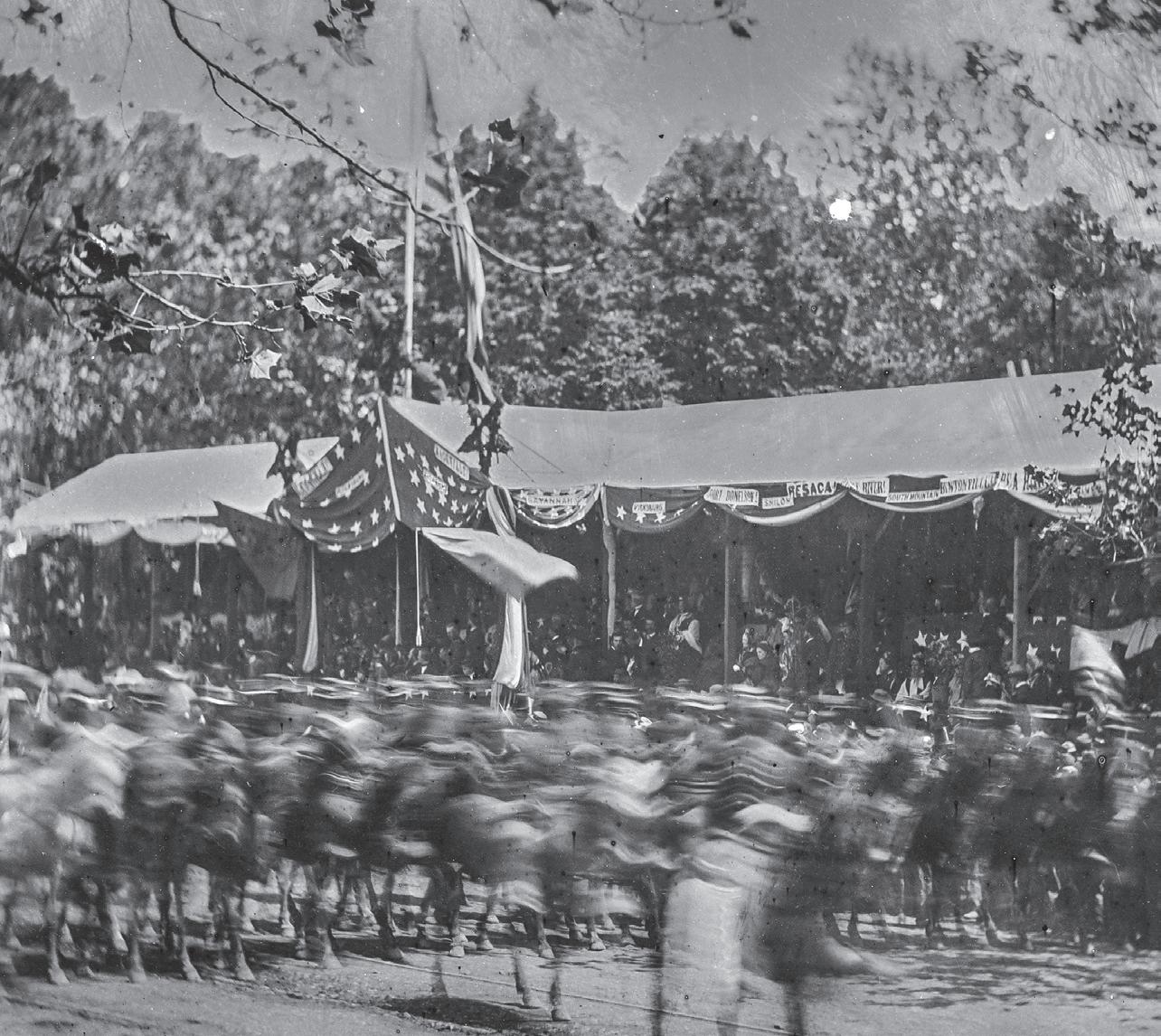
surrender terms with Joseph Johnston, took his seat among the reviewing party.

Noticeably absent was the VI Corps, Army of the Potomac, which had arrived late to their camp at Hall’s Hill outside Arlington. The Grand Review reprised June 8, featuring just the Sixth Corps. By then, many soldiers were anxious to return home and evinced no enthusiasm for yet another soldierly duty. The Times duly reported that “the pageant was only less in interest than that of two weeks ago, because less in size” and fondly reminded readers that the Sixth Corps had saved the city a year before when Jubal Early threatened it. In Virginia,


before they crossed the Potomac into Washington, Sedgwick’s old corps, now under command of Horatio Wright, drilled one last time to insure a proper parade presentation.4 Every man wore white gloves on another intensely hot day. One New Yorker remembered the “experience more pleasant to look back upon, than to participate in.”5
Mathew Brady captured the first review with his camera. Edward Sachse, prolific Baltimore lithographer, also documented the scene of May 23. It appears that Sachse was the only lithographer to attempt to compete with the increasingly important role photography began to play in documenting life. That said, upon close examination, it appears that the Sachse print of the review was more realistic than Brady’s photographs. Close scrutiny of Sachse’ work reveals that the essential realism of horse manure did not escape him. Somehow Brady managed
22 Civil War News February 2020
The grand review of the Army, Washington, D.C. Presidential reviewing stand with guests and guard by Mathew Brady.
The grand review at Washington May 23th 1865 The glorious Army of the Potomac passing the head stand / / Lith. by E. Sachse & Co., Boston.
February 2020

to miss that aspect of the Grand Review.
Endnotes:

1. New York Times, May 6, 1865.
2. Ibid., May 4, 1865.
3. Ibid., May 25,1865.
4. Ibid., June 9, 1865.
5. Salvatore Cilella, Upton’s Regulars: The 121st New York Infantry in the Civil War, University Press of Kansas, 2009, 393.
After 43 years in the museum field, Salvatore Cilella now spends his time writing and is the author of several articles and books. His last professional position was President and CEO of the Atlanta History Center. His most recent books are Upton’s Regulars: A History of the 121st New York Volunteers in the Civil War (U. Press Kansas, 2009). His two-volume Correspondence of Major General Emory Upton, (U. of Tennessee Press, 2017), is the recipient of the 2017-2018 American Civil War Museum’s Founders Award for outstanding editing of primary source materials. His edited manuscript of Upton’s letters to his wife is scheduled to be released this spring by the University of Oklahoma Press.
Civil War News
PRESERVED FOREVER: 1,378 ACRES AT SHILOH
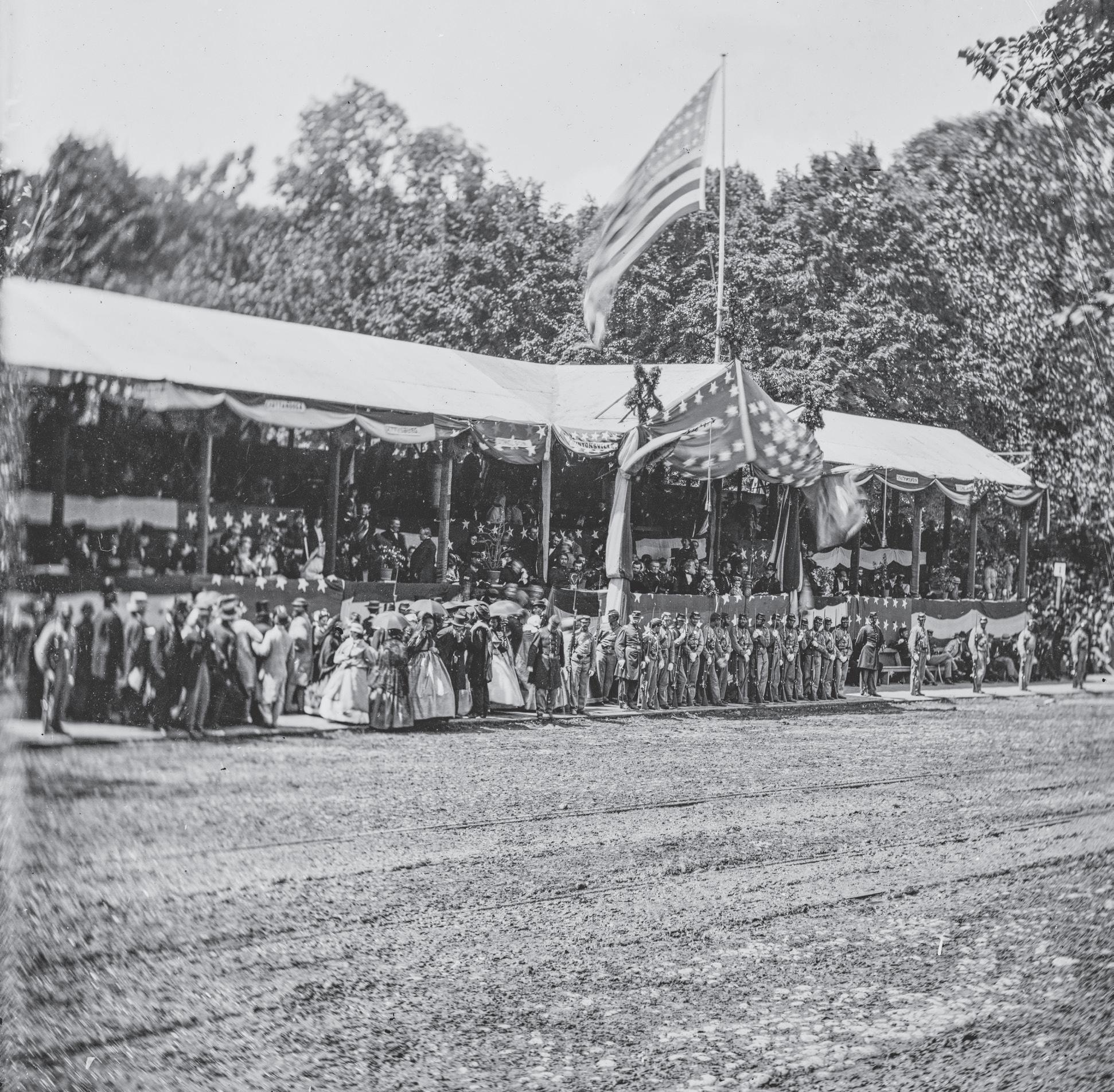
WHEN UNION AND CONFEDERATE armies clashed at Shiloh, Tennessee, on April 5-6, 1862, the fierce fighting was unlike anything seen before in American history, presaging the even more horrific casualties that would result from later battles.
The American Battlefield Trust has worked with the National Park Service, State of Tennessee and other partners to protect 1,378 acres at this storied site — as well as the 791 acres at the subsequent siege and Battle of Corinth. Discover the history and explore the battlefield with our resources at www.battlefields.org/shiloh.

23
Deadline for submissions is the 20th of each month. Email: ads@civilwarnews.com
Washington, District of Columbia. Grand review of the army by Mathew Brady. (All images courtesy Library of Congress.)
Shiloh National Military Park Shiloh, Tenn. TOMMY KAYS
Neither Fish nor Fowl: The U.S. Model 1855 Pistol Carbine

The U.S. Model 1855 Pistol Carbine was a classic example of the pre-Civil War United States Ordnance Department’s inability to be forward thinkers and look at current and emerging technologies when it came to firearms design. Even though much more advanced breech loading carbines and revolvers, like the Jenks Naval Carbine, the several models of Sharps’ patent carbines, and various Colt’s patent repeating revolvers, were already used by the U.S. military, the Ordnance Department chose to adopt a design that was clearly a step backwards, a single shot, muzzleloading pistol carbine with a detachable shoulder stock. The end result was a weapon that was neither fish nor fowl, either an oversized and ungainly pistol or an overly short-barreled carbine with a shaky attachable stock. The Ordnance Department intended the new weapon would be issued to the cavalry and used as a pistol when mounted and a carbine when dismounted. The gun was to be carried in the typical pommel holsters of the day, with the pistol in one holster and the butt stock in the other. U.S. Secretary of War Jefferson Davis approved the gun on July 5, 1855, along with the rest of the U.S. Model 1855 family of firearms. Since the Federal Government operated on a fiscal year system, the gun was actually adopted five days into fiscal year 1856. This explains why Ordnance Department records show no deliveries into stores of Model 1855 pistol carbines in 1855. Like the rest of the government, the armories maintained their records and bookkeeping on a fiscal year basis. However, they dated parts they manufactured, like locks and barrels, on a calendar year basis. This explains why M1855 Pistol Carbine locks and barrels are found dated “1855” and yet none were delivered that “year” according to the arsenal bookkeeping system. The Springfield Armory produced a total of 4,021
of the M1855 Pistol Carbines for the Ordnance Department during its brief production run. A total of 2,710 was delivered into stores in fiscal year 1856; an additional 1,311 followed in fiscal year 1857.
The first issues of the new Pistol Carbine were to a single squadron of cavalry from both the 1st and 2nd US Cavalry Regiments. The guns were far from successful or popular in the field, and no further pistol-carbines were manufactured after fiscal year 1857. In 1858, the pistol-carbine was also tentatively issued to some light artillery units for trials, with the thinking that it might be a handy weapon for those troops. However, it was not popular or successful in that role either. Eventually, the Ordnance Department finally saw a glimpse of the future and proceeded to issue revolving pistols to the cavalry and undertook additional trials of breech loading carbines.

As of October 1860, some 3,022 of the M1855 Pistol Carbines were stored at various arsenals, with only 992 being in the field. The outbreak of the American Civil War created such a pressing need for small arms that most of these pistol carbines were issued, at least on a temporary basis.
According to George Moller’s research, eleven different companies of U.S. cavalry were completely, or at least partially, armed with the M1855 Pistol Carbine during the first part of the Civil War. John D. McAulay’s research indicates that as late as the December 31, 1862, quarterly field reports, slightly less than four hundred of the M1855 Pistol Carbines were still in service in


the field. The regiments listed in that report, still carrying the Pistol Carbine at the end of 1862, as well as the number of guns that they had during the quarter ending December 31, 1862, include the 9th Illinois Volunteer Cavalry (27), the 1st Indiana Volunteer Cavalry (41), 2nd Kansas Volunteer Cavalry (53), 5th Kansas Volunteer Cavalry (76), 6th Kansas Volunteer Cavalry (61), 4th Missouri Volunteer Cavalry (10), 11th New York Volunteer Cavalry (59), 1st West Virginia Volunteer Cavalry (5), 2nd West Virginia Volunteer Cavalry (66).
Eventually, the guns were withdrawn from service as more practical weapons became available. Despite the gun being obsolete from the day it was adopted, as late as 1880 some Pistol Carbines were still in government stores,

as 332 were sold at auction as surplus from the New York Arsenal in that year. The U.S. M1855 Pistol Carbine has the dubious honor of being the last single-shot percussion handgun issued to the U.S. military, at a time when percussion revolvers were the standard of the day, and metallic cartridge revolvers were beginning to emerge. The gun was just under 18-inches in overall length with a 12-inch, .58 caliber barrel, rifled with the traditional Springfield Armory three groove rifling. The


gun used a reduced sized version of the Maynard automated “tape primer” lock that was also used on both the M1855 Rifle and Rifle Musket. Although all previous single-shot pistols utilized a roundball projectile, the new M1855 Pistol Carbine took the expanding base, .58 conical projectile used in the U.S. M1855 Rifle, Rifle Musket, and Carbine. The only substantial difference between the pistol carbine cartridge and the cartridge used in the M1855 rifle and rifle musket was a reduction in the powder


24 Civil War News February 2020
Close up of pistol carbine lock and grip area with lock markings enlarged.
Overall obverse view of a U.S. M1855 Pistol Carbine with buttstock attached. (All photos by Tim Prince)
Muzzle view of the pistol carbine, showing the front sight, three-groove rifling, and the swivel ramrod.
load from 60 grains for the longarms to 40 grains for the pistol carbine.
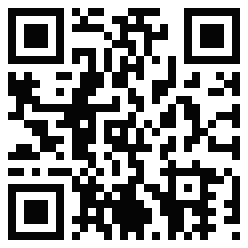
Like most arms produced at the National Armories during that time frame, the gun was polished to “National Armory Bright.” It was mounted with brass furniture and had a walnut stock. The butt of the pistol carbine had a large swivel ring, allowing either a lanyard or carbine sling to be attached. A sling swivel was also mounted on the bottom of the single brass barrel band, as well as in the toe line of the detachable buttstock. The pistol featured a captive ramrod retained by a swinging link system, similar to the pattern used on the U.S. M1842 pistol and the earlier M1847 Cavalry Carbine. Why this system was adopted, when it had been universally despised on the M1847 Carbine is somewhat of a mystery. A large iron front sight was installed very close to the muzzle and a multi-leaf rear sight was graduated for use at 100, 200, 300, and 400 yards. The 300-yard graduation was provided via a small peephole in the 400-yard leaf.

The iron backstrap was cut to allow attachment of a removable shoulder stock, which was typically numbered to the gun. The guns and stocks were batch numbered from 1-20, with the number stamped into the top rear of the brass butt cap and into the lower
part of the buttstock’s brass yoke.
Lock markings were the usual U.S. / SPRINGFIELD in two horizontal lines forward of the tape primer magazine, with the traditional U.S. spread-winged eagle motif on the door of the primer magazine. The date of the lock’s manufacture was stamped in a single horizontal line to the rear of the hammer. The left angled breech of the barrel was marked with the usual arsenal V / P / {EAGLE HEAD} proof and inspection marks. The barrel’s production date was stamped into the top of the breech, concealed by the longer range leaves of the rear sight when they were not elevated. Most examples bear the script “JS” cartouche of Springfield Arsenal’s longest working small arms sub-inspector, James Stillman.

At a time when breechloading and repeating percussion firearms were coming into their own, the anachronistic design of the M1855 Pistol Carbine certainly contributed to its lack of popularity with the troops. The design of the detachable buttstock that did not tightly fit the pistol and tended to wobble when attached, combined with the uncomfortably short length of pull it allowed for, certainly did not make the design any more popular.


The relatively small production totals make the guns relatively scarce on the collector market
today. Fine condition examples are particularly hard to find. This is because many saw harsh use in trials before the war and more hard use during the first year and half of the conflict. Additionally, regular use of the Pistol Carbine with the buttstock attached tended to crack or break the pistol’s grip. As the buttstocks were of limited utility in the post-war era when the guns were sold as surplus, the number of surviving
guns is somewhat greater than the number of original buttstocks. This means that the scarce original stocks often sell for as much as the pistol itself! All this means that when one of these scarce guns appears on the collector market, complete with an original stock and in fine condition, they rarely remain for sale very long.
Tim Prince is a full-time dealer in fine & collectible military arms
from the Colonial Period through WWII. He operates College Hill Arsenal, a web-based antique arms retail site. A long time collector & researcher, Tim has been a contributing author to two major book projects about Civil War era arms including The English Connection and a new book on southern retailer marked and Confederate used shotguns. Tim is also a featured Arms & Militaria appraiser on the PBS Series Antiques Roadshow.
Close up of reverse of the pistol carbine stock and grip area, showing the script JS cartouche of James Stillman and the hairline crack in the grip that is found on nearly every example encountered today, even very fine condition pistol carbines like this one.
25 February
www.CollegeHillArsenal.com Tim Prince College Hill Arsenal PO Box 178204 Nashville, TN 37217 615-972-2418
2020 Civil War News
View of the pistol carbine breech area showing the detail of the multi-leaf rear sight, the date on the breech concealed by the sight leaves, and the inspection marks on the angled flat.
Close up of the pistol carbine lock with the tape primer magazine door open, showing the internal primer feed and tension mechanism.
Perspectives on Antietam
Phase Three –Burnside’s Bridge
In December and January we observed, through the eyes of several Federal officers, the carnage in the first two phases of the Battle of Antietam, on the north and center of the line. Let’s now turn our attention to the Federal left, commanded by Maj. Gen. Ambrose Burnside.
Like the Sunken Road and Miller’s Cornfield, Burnside’s Bridge (as it was named after the battle) is a famous Civil War icon. We will now hear from the commanders of the men who crossed the creek at the bridge and downstream at Snavely’s Ford, charged up the heights on the west bank, and fought on the plain above, in the final phase of the fighting at Sharpsburg on Sept. 17, 1862.
Brig. Gen. James Nagle’s Brigade made the first effort to cross the bridge. Nagle’s report described the ground. “The
position was a strong one for the enemy, as he was posted in a strong force on the bank of Antietam Creek, on the wooded banks of this stream, with precipitous banks that afforded them shelter from our artillery and infantry. Two roads diverge from this bridge, and the approach to it is through a narrow ravine, admitting not more than one regiment at a time, upon which a deadly volley could be easily poured from the enemy…on the other side of the bridge.”

Brig. Gen. Samuel Sturgis, the division commander, stated in his report that he ordered two of Nagle’s regiments “to move over at a double-quick and with bayonets fixed. They made a handsome effort to execute this order, but the fire was so heavy on them before they could reach the bridge that they were forced to give way and fall back.” Ordered by Burnside to “carry the bridge at all hazards,” Sturgis next called upon the brigade commanded by Brig. Gen. Edward Ferrero.

Ferrero, like Nagle, described the strength of the Confederate position and stated that he “awaited the result of the attack by some of our other forces [i.e., Nagle’s] that had preceded my brigade in the attempt to cross the creek.”
“The passage of the bridge was…very obstinately disputed,” Ferrero continued, “and at length I received orders…to move forward my brigade, and carry the bridge at all hazards. I accordingly moved forward my command and carried the bridge at the point of the bayonet at 1 o’clock….”
After crossing the stream Ferrero “moved forward one regiment to the summit of the hill, to retain the position until re-enforcements should arrive….”
The brigade commanded by Col. Harrison S. Fairchild was one of the units crossing at Snavely’s Ford. Fairchild wrote that after being exposed to fire for some time on the east side of the creek, he was ordered across by division commander Isaac Rodman.
“The brigade then moved by
the left flank down to the ford; crossing the creek, and forming in the woods, advanced and took a position opposite the bridge; there formed a line of battle on the crest of the hill..., remaining in position under heavy fire of shell.” Ordered forward, the brigade “continued to advance to the opposite hill under a tremendous fire from the enemy’s batteries up steep embankments…. Arriving near a stone fence, the enemy… opened on us with musketry.
After returning their fire, I immediately ordered a charge, which the whole brigade gallantly responded to, moving with alacrity
and steadiness. Arriving at the fence, behind which the enemy were awaiting us, receiving their fire, losing large numbers of our men, we charged over the fence, dislodging them and driving them from their position down the hill toward the village….”
The Federals stood on the verge of the breakthrough for which they had struggled since daybreak, first on the right, then in the center, and finally here, on the far left. However, something was afoot on the left of Fairchild’s Brigade.
“It was…discovered that the enemy were moving up from the
Gould B. Hagler, Jr.

This unique work contains a complete photographic record of Georgia’s memorials to the Confederacy, a full transcription of the words engraved upon them, and carefully-researched information about the monuments and the organizations which built them. These works of art and their eloquent inscriptions express a nation’s profound grief, praise the soldiers’ bravery and patriotism, and pay homage to the cause for which they fought.

26 Civil War News February 2020
866-895-1472 toll-free
www.mupress.org
GEORGIA’S CONFEDERATE MONUMENTS In Honor of a Fallen Nation
Burnside’s Bridge.
(All photos Library of Congress)
Maj. Gen. Edward Ferrero.
corn-field on our left to flank us, and I ordered the brigade to retire about 250 yards to the rear…. The large force advancing on our left flank compelled us to retire from the position, which we could have held had we been properly supported.”
Col. Edward Harland led another brigade in Rodman’s Division, which, like Fairchild’s, crossed at Snavely’s Ford and advanced up the hill.
Harland’s report paints a vivid image of the confusing scene on the plain when the Federal troops were struck by Confederates approaching from their left.

“I advanced the Eighth Regiment Connecticut Volunteers and commenced firing. The [other regiments] not coming up, I turned to see if they were advancing, and saw some infantry belonging to the enemy advancing upon our left flank. Knowing that if they were not checked it would be impossible to hold this part of the field…, I put the spurs to my horse to hasten the arrival of the Sixteenth Regiment Connecticut Volunteers. My horse was almost immediately shot under me, which delayed my arrival. I found that the Sixteenth…had changed their front by order of General Rodman. The line was formed facing to the left, and was nearly a prolongation of the enemy’s lines, except that they faced in opposite directions [emphasis
added].”
“I immediately ordered [the Sixteenth] to change… front, so as to attack the enemy on the right flank. This change was effected, though with some difficulty, owing to the fact that the regiment had been in service but three weeks, and the impossibility of seeing but a small portion of the line at once.”
The approaching Confederate troops opened fire. “Almost as soon as the change was effected, the right of the enemy’s lines, which was concealed in the edge of the corn-field, opened fire. Our men returned the fire and advanced, but were forced to fall back. Colonel Beach rallied them and returned to the attack, but they were again driven back, this time out of the corn-field, beyond the fence. Here they were again rallied, but it was impossible to see the enemy; and the men were under fire for the first time, they could not be held.”
Another of Harland’s regiments managed to hold its position and “changed front so as to reply to the enemy on the left. After a few rounds, as most of the men were out of ammunition, the order was given to fall back…. At the bridge I collected the shattered remnants of the brigade…but, owing to the large loss of officers and the failure of ammunition, it was impossible to render the men of any material service. I therefore
conducted the brigade across the bridge, and bivouacked for the night….”
The troops appearing on the Federal left were, of course, the men of Maj. Gen. A.P. Hill’s Light Division, which had marched 17 miles from Harpers Ferry. This force arrived just in time to prevent Burnside’s troops from blocking the route to Boteler’s Ford, Lee’s only path of retreat across the Potomac. The final Federal push had failed. The fighting ended. The two exhausted armies slept, and then watched each other for a day as they tended to their wounded as best they could. On the 19th Lee began his retreat.
When this series continues, with Perspectives on Sharpsburg, we will listen to the Confederate commanders whose men braved the withering fire in Miller’s cornfield, endured the slaughter in the Sunken Road, slowed the Federals at the bridge and, just in time, halted the Federal advance on the Confederate right.
Sources:
Official Records, Ser. I, Vol. XIX, Pt. I, Reports of Harrison Fairchild, Edward Ferrero, Edward Harland, James Nagle, Samuel Sturgis.
Gould Hagler is a retired lobbyist living in Dunwoody, Ga. He is
a past president of the Atlanta Civil War Round Table and the author Georgia’s Confederate Monuments: In Honor of a Fallen Nation, published by Mercer University Press in 2014. Hagler
speaks frequently on this topic and others related to different aspects of the Civil War and has been a regular contributor to CWN since 2016. He can be reached at gould.hagler@gmail.com.
“Once a statement gets into the stream of history it is apt to flow on indefinitely.” Winston S. Churchill, Marlborough: His Life and Times
The Rohrabach Bridge over the Antietam below Sharpsburg is one of the famous landmarks of the Civil War. Since the battle this three-arched stone structure has been known as Burnside’s Bridge. The renaming is not generally taken as an honor for General Burnside, but rather as a snide denigration of his supposed incompetence at the Battle of Antietam.
But was the new name for the bridge ever intended as a slight? And was Burnside incompetent or even dilatory?
Thirteen years ago William Marvel wrote an interesting article on this subject in which he traced the unflattering interpretation to Henry Kyd Douglas’s memoirs (I Rode with Stonewall, written in 1899 and published in 1940) and to Bruce Catton’s Mr. Lincoln’s Army (1951). (You can find Marvel’s article at http://www.historynet.com/battle-of-antietam-controversial-crossing-on-burnsides-bridge.htm.)
Douglas opined that Burnside’s men could have easily “executed a hop, skip, and jump and landed on the other side” of the creek. Douglas also quoted an army officer (unnamed) who sarcastically expressed puzzlement that Burnside was able “to keep his troops from breaking over.” Catton relied on Douglas, Marvel wrote, and other scholars followed his example.
Based on his documentary research, conversations with locals familiar with the creek, and his own examination of the watercourse and nearby terrain, Marvel concluded that “the creek would have provided a perfectly effective military obstacle on June 5, 1994, and a great deal of evidence confirms that it served just as effectively on September 17, 1862.”
The accounts of the battle at the bridge written by Nagle, Fairchild, Sturgis and Ferrero support this assessment. The terrain was difficult for the attackers and they faced deadly Confederate fire.

Mark Twain was folksier than Churchill but he made the same point: “It ain’t what you don’t know that gets you into trouble. It’s what you know for sure that just ain’t so.”
The Civil War Water
on the
McCormick Civil War Insitiute Spring 2020 Conference
Saturday, April 4, 2020 from 9 a.m. – 4 p.m.
Featuring nationally-recognized Civil War scholars John M. Coski, Anna Gibson Holloway, Jonathan A. Noyalas, Karen Needles and Jonathan W. White
Registration information: su.edu/MCWI or by phone 540-665-4501
Registration fee: $50 includes presentations & lunch ($25 for students with valid identification)
Location: Shenandoah University 1460 University Drive, Winchester, VA
Additional Questions: Contact MCWI's director Jonathan Noyalas, jnoyalas01@su.edu
27 February 2020
Civil War News
Gen. Burnside and staff officers in photo taken two months after Antietam.
From the Editor John Haley of the 17th Maine spent Christmas Day, 1862, making corduroy roads near the army’s camp in Stafford County, Va. It was a dismal day, he said, but “rendered quite endurable by the anticipation of what was in store in our boxes.” Mail call had come for the troops, delivering Christmas cheer from home. But Haley returned to his tent disappointed. “I was informed by my tentmate that there was no parcel at the station bearing my name,” Haley later wrote. “My mental thermometer not only plummeted below zero, it got right down off the nail and lay down on the floor.”
Seeing his reaction, Haley’s tentmate “made haste to dive under the bed and produce the box, which he had brought from the station in my absence.” Soon, the two were busy discussing the merits of its contents, he said. “Most of the men have been remembered, and any that have not received something from home are allowed to share with their more fortunate neighbors.”
I hope you have remembered, and been remembered by, many loved ones this holiday season. We at ECW wish you all the best for a healthy, happy New Year filled with all good things.
— Chris Mackowski Editor-in-Chief, Emerging Civil War
ECW News & Notes
Doug Crenshaw will speak on the Battle of Glendale at the Powhatan CWRT on Jan. 17 and the Richmond CWRT on Feb. 18.
Caroline Davis and Bert Dunkerly will be traveling to Murfreesboro in January. They plan to hit some historic sites in the area and finish their book on the Battle of Stones River for the Emerging Civil War Series.
Meg Groeling will be reviewing a couple of reprints for Civil War News: African Americans in

Medicine in the Civil War Era by Robert G. Slawson, MD, and The Story of Civil War Medicine: Divided by Conflict, United by Compassion by Terry Reimer. She notes that she is seeing many reprints lately, which is a good thing. “Losing past scholarship is unthinkable,” Meg writes. She will also be reviewing Yuletide in Dixie: Slavery, Christmas, and Southern Memory by Robert E. May. “It’s a timely read, and well done,” she says.
Frank Jastrzembski has had a lot going on the past couple of months. He reports:
“My book was finally released! Admiral Albert Hastings Markham: A Victorian Tale of Triumph, Tragedy and Exploration (Pen and Sword Maritime, 2019). Find out more here: https://www.penand-sword.co.uk/AdmiralAlbert-Hastings-MarkhamHardback/p/16892
“This article was recently published in the magazine Military History: “Alastair Harry Campbell and the Fabled Shipka Pass.” You can read it here: https://www.historynet.com/ alastair-harry-campbell-and-thefabled-shipka-pass.htm
“I have two forthcoming articles that will be published in the magazine America’s Civil War. One is on General Rufus King and the other on the ten worst deaths among Civil War generals (before and after the war).
“I’m working to register Shrouded Veterans as a nonprofit as I continue to take on projects. https://m.facebook.com/ shroudedvetgraves/

“And I started a new job as an associate editor with Delta Defense located in West Bend, Wisc.”
The February 2020 issue of Civil War Times features a cover story by Chris Mackowski: “Selling Stonewall: How Veterans Used the Confederate Icon to Market Battlefields.” The article looks at “Roadside Attraction” Jackson and how his memory shaped the Chancellorsville battlefield for


by Constance Hall Jones. This month, we direct our “10 Questions” to Connie. You can read more about the book and Connie here: https://emergingcivilwar.com/2019/12/05/thespirits-of-bad-men-now-available/.
Can you explain your relationship to William Ellis Jones for us?
tourists.
Kevin Pawlak was a living history volunteer portraying a member of Company I, 7th Wisconsin, for the Antietam Memorial Illumination on December 7.
Don’t forget to follow ECW on Facebook, Instagram (@ Emergingcwblog), and YouTube (https://www.youtube.com/ channel/
10 Questions...with Constance Hall Jones

William Ellis Jones (b. 1838) is my paternal great-great grandfather. Interestingly, his name is a very common one in our family. He was named after his uncle (the poet, b. 1785), who was named after his uncle (b. 1757). My grandfather (b. 1899) was named after the subject of the book, and my brother (b. 1959) was named after him (our grandfather). Doing genealogy in this family is challenging, as cousins in Wales, Nebraska, and Alabama have all graced their offspring with this name over the generations.
How did you get his diary?
The latest book is out in ECW’s “Engaging the Civil War” Series, published by Southern Illinois University Press: The Spirits of Bad Man Made Perfect: The Life and Diary of Confederate Artillerist William Ellis Jones

The diary was passed down from its author to his son, F. Ellis Jones, who died not long after inheriting it. It then (along with the entire W.E. Jones library) passed into the possession of my grandfather (also named William Ellis Jones), who was then a boy of just ten years old. My grandfather grew up to become an author, a playwright, and a dedicated family historian. By 1940 he had completed a rather comprehensive family history, with a transcription of the diary included within it. Upon completing the book (an unpublished manuscript), he sold and or gifted a number of historically important documents and artifacts to various museums and private collections. When he died, no one recalled where he placed these items, and he neglected to record the information. I had the transcript of the diary and had known about it for many years, but I considered the original MS lost. I discovered it (in the Schoff Civil War collection at Ann Arbor) when doing online research on William. I went to Ann Arbor to compare the two documents to make sure the transcription was true and accurate to the original. Once that was confirmed, I knew I had to do the book.
What did you learn about him after working on this project?
I learned too much to do justice to in this format. If I had to speak to things about the man that I found genuinely surprising, I think I would have to note two characteristics. The first is just how intelligent and well-educated the 22-year-old who began
28 Civil War News February 2020 www.emergingcivilwar.com
Chris Mackowski
Constance Hall Jones is a descendant of Confederate artillerist William Ellis Jones.
From the February 2020 issue of Civil War Times
Thomas Nast sketched Santa visiting Union camps for the Christmas of 1862.
The latest release in the “Engaging the Civil War” Series from ECW and Southern Illinois University Press.
this diary was. He never attended a day of school. He was educated at home until the age of about thirteen, then was apprenticed to William H. Clemmitt at the print shop in Shockoe. Yet, this young man had a good command of Latin, was fluent in the mythology of the Greeks and the Romans, could convincingly sneer at Voltaire, was a vicious wit, a gifted writer, and he could (as all compositors in the era had to do), read upside down and backwards in several languages. William was an intimidating character to take on in many respects; his intelligence humbled me.
The next characteristic that still surprises me when I think of it is his irrepressible loyalty to those he cared for. The younger William showed almost no loyalty to his officers and questionable dedication to some of his comrades, but to William H. Clemmitt, the Smith family, Robert Brock, and later in his life, to men like T. Grayson Dashiel, he was absolutely unwavering. He forged bonds in early childhood that persisted as the most important relationships, both personally and professional, throughout his long life. That, to me, is remarkable, especially in a city like post-war Richmond, with its transient population and boom-bust commerce cycles. William’s circle was possibly one of the most consistent in the city at that time, and I believe that consistency is what helped him achieve the success and excellent reputation he eventually enjoyed.
What have people told you about the diary, as far as its historical importance?
John Hennessy, National Parks Service chief historian for the Spotsylvania and Fredericksburg National Military Park, said William Ellis Jones’s diary is one of the most important first-person primary sources for the 1862 campaigns. He relied on it for his Second Manassas book, which is the definitive history of that battle. I consider this extremely high praise from one of the most eminent historians working in the field today.
You made an important discovery when you realized Jones, the diarist was the same person as Jones, the postwar-publisher. How did you make that connection?
I was raised with a family recollection of William Ellis Jones as a printer and publisher, who amassed a remarkable library, who was also, early in his life, a veteran of the American Civil War. What I wasn’t aware of until later (in my adulthood, as
I became in involved in collecting antiquarian books), is that many of William’s imprints were rare, quite valuable, and considered important in the genres of Virginiana and Civil War history. I began to study and catalogue his work, and that led me back to the Civil War diary I’d always known about, but never really investigated. Once I got into the diary, I realized it was also an extremely important document, and that it had never been published. That sent me down the rabbit hole of learning all I could about William by investigating his 1862 experience. That research led me to John Hennessy’s Second Manassas book, and it was there that I discovered that he, at least, had used the diary. Conversations with him led me to other works which referenced the diary. I realized that no one who had used the diary had made the connection between the diary and William, the publisher of the Southern Historical Society Papers, which also references the diary liberally in several works recollecting various 1862 battles or events without crediting the diary, however. Initially, I found it difficult to believe that no one had put it together, but in time I realized this was the case.
This was the first book you’ve written. What was that experience like for you?
In truth it isn’t the first book I have written. I’ve been a writer in one form or another most of my life and have completed several book-length works. The Spirits of Bad Men Made Perfect is the first history work I’ve published under my own name through an academic press: the University of Southern Illinois at Carbondale. That experience was simply amazing. The press, by putting the ms. in the hands of eminently qualified peer reviewers who staunchly refused to allow me to take shortcuts, skip steps, or gloss over difficult or controversial material, made this book what it is. It was often frustrating but always worthwhile. At times I was convinced I was so far beyond my depth I would never be able to produce a draft the peer reviewers could accept. At every turn their advice for additional inquiry or insistence that I dig deeper on some detail I initially felt was minor, produced an epiphany, altering the course of the work. The conclusions I began with are not the conclusions I wound up with. In fact, I am still revising conclusions in my head, based on the challenges they tasked me with. Publishing with an academic press isn’t for everyone. For me, as an avid reader of history
books, as an antiquarian, collector, and seller, there was never any other option. For this work I wanted the gravitas that comes with a respected academic press, and SIUP did not disappoint.
Lightning Round: (short answers)
What’s the favorite place you’ve visited in the footsteps of your ancestor?
Sorry, I can’t do a short answer here. It’s too good to abbreviate. My favorite place was William’s residence at the time of his death, at 1006 West Avenue in Richmond, Va. I went there with no other expectation than to snap a quick photograph of the façade. What happened when I got there can only be described as surreal. I was compelled to knock on the door. A young woman answered, and I stumbled out an explanation for my appearance on her doorstep on a Tuesday afternoon in April. After hearing me babble something about a man a hundred years ago who was a printer who once lived here, she got an odd expression on her face, and then said, “Oh, you have to come in!”
I walked into the front room of the house, and my jaw hit the floor. Placed directly in the middle of the main room of this very nicely restored old house was a gorgeous 19th century platen printing press, a press probably very similar to the ones William used at his printing company. I couldn’t believe it. The walls were adored with letterpress broadsides. Prints hung drying from wire lines strung from the crown molding.
To make a long, unlikely story short, the couple (and I met them both) who owned the house were craft letterpress printers, employing 19th century technology for 21st century design projects. They had several antique platen presses operating in their home, which also doubled as an art studio and print shop. In addition to all that, they had a rather nice stone lithography studio (something else William would have done in his shop).

They were thrilled to learn about William and discover their home had genuine letterpress provenance. They said they “felt” approval for their work from the first moment they walked into the place, and with my visit they understood why. I felt like William was alive and well in that home.
What’s your favorite episode or passage from the diary?
Two of them:1] “The spirits of bad men made perfect,” as a metaphor for alcohol and/or getting drunk. William gave me the title of the book with that, as it is also
a perfect metaphor for devotees to the Lost Cause.2] “We were then ordered to pitch the hospital tent, and just as we finished the task the captain came down and let out his hypocritical cant, much to my disgust and wound up by making us promise not to run the blockade any more, or he would continue the punishment until he thought proper to cease, pusillanimous tyrant.”
The fact that William managed to get “hypocritical cant” and “pusillanimous tyrant” into a single sentence is talent, but just coming up with “pusillanimous” on the fly is exceptional, and he spelled it correctly! I still can’t spell it correctly!
What’s your favorite sentence or passage you wrote?
It’s at the end of the book:
“He is, in his own words, ‘the spirit of bad men made perfect.’ That perfection, however, is a fiction. Getting to truth is a more complicated process than creating fiction, yet its results are far more instructive. To not repeat the mistakes of history, we must first know what they are and acknowledge the true cost of them. That accounting is something William never attempted, leaving the job for his children and grandchildren. Perhaps it was just too much to take on after the war, after losing so many friends and so many family members, after the devastation of the evacuation fire, after rebuilding everything from the ground up. Perhaps he and his generation needed to retreat into the comfort of a fictionalized past.
Throughout the war, William Ellis Jones faced incredible challenges and threats to his very survival. Despite it all, he persevered. His legacy is the diary he left to our consideration. His words, his accomplishments, and the facts of his life, will survive long after the fiction he helped
create and proliferate has faded from memory.”
What’s a question you’d have liked to have been able to ask your ancestor?
Why did you stop writing on 12/31/1862? What happened?
What’s a question no one has asked you yet about this project that you wish someone would?
What do you have in common with William Ellis Jones? The answers:
– A father who left me at too early an age to the care of others, who then died before we could quite reconcile our differences.
– Who also provided me with a vast library of books for my early education.
– A childhood fascination with archeology and Egyptian (as opposed to Greek) mythology.
– My first job (I was fourteen) was with a newspaper as a layout artist/compositor (employed by Bill Adler, who is noted in the acknowledgments in the book).

– I was trained at East Carolina University as a graphic artist/designer and worked in the printing and publishing world for the first fifteen years of my post-university, professional career.
– I started keeping a daily journal at the age of ten, and have journaled on and off throughout my entire life. I understand the compulsion of journaling, as well as the compulsion to stop recording when things gets too difficult to document.
– Like William, I began collecting books in my teens. Today my personal library numbers about 4000 volumes, and my day job is handling books, especially the antiquarian variety. I collect letterpress Virginia histories and 18th and 19th century Welsh language imprints. I began doing this before I knew much about William Ellis Jones. It’s just in my DNA.
29
News
February 2020 Civil War
—
LEATHER WORKS Museum Quality “Raising The Standard” Made In The USA Visit us at www.DellsLeatherWorks.com • (845) 339-4916 Dedicated to the Common Soldiers Who Fought in The War Between The States AUTHENTIC QUALITY REPRODUCTIONS 31st Edition Since 1999 Accepting Discover, Visa, MasterCard and American Express
MAKER —
Emerging Civil War Podcast

In December, the first Emerging Civil War Podcast featured a conversation with Meg Groeling about her book The Aftermath of Battle: Burying the Civil War Dead. After the battles, what did they do with all the bodies?
The second podcast featured a conversation with publisher Ted Savas and his right-hand assistant, Sarah Keeney, about the world of Civil War books.

Podcasts are available on ECW’s Patreon page for only $1.99 each (which covers the cost of production): https://www.patreon.com/emergingcivilwar.
Emerging Revolutionary War News


https://www.historyisfun.org/ forgotten-soldier/.

If you are looking for a last-minute gift for a history enthusiast on your list, check out Emerging Revolutionary War for a few of our book reviews. In addition, Emerging Revolutionary War will have a few other significant Revolutionary War sites highlighted in the upcoming weeks for you to venture out to. Continue to check out all these posts at www.emergingrevolutionarywar.org.

Whether it is a book, a visit to a museum, venturing out to a winter encampment, and/or reading our blog, the historians at Emerging Revolutionary War wish you a happy holiday season! Stay tuned for more posts and volumes of the Emerging Revolutionary War Series in 2020!
Speakers Bureau Spotlight
Through many of the Decembers during the American Revolution, the Continental Army looked for refuge in the form of a winter encampment. Two of them are preserved by the National Park Service today: Morristown and Valley Forge. Both will be open over the holidays (check their respective websites for hours of operation) in case you want to add a day trip with family in town over the next few weeks.
If being outside is not your cup of tea (err...since we are talking American Revolutionary War history, maybe I should say “coffee” instead?), check out the exhibit ongoing at the American Revolution Museum at Yorktown, VA., “Forgotten Soldier: African Americans in the Revolution” will be open through March 22, 2020. The exhibit showcases some amazing never-before-seen documents, including the fact that the museum staff has reunited the Book of Negroes and Inspection Roll for the first time since their creation in 1783! To plan your visit and information, check out the following link:
Gun Works, Inc.



KEEPING
The muzzleloading community is diverse and encompasses a broad range of interests and professions, brought together by a shared passion for all things blackpowder. From re-enactors to modern hunting and competitive shooting, DIXIE GUN WORKS’ catalog has been a staple for generations of blackpowder enthusiasts. Our 2020 catalog has the world’s largest selection of blackpowder replica arms, accessories, antique parts, muzzleloader hunting and sport shooting equipment.

Caroline A. Davis currently works as a supervisor with a life insurance call center. However, she is still actively pursuing a career with the National Park Service. She most recently spent the summer of 2018 working at the C&O Canal in Potomac, Md. You can read her full ECW bio here: https://emergingcivilwar. com/author-biographies/authors/ caroline-davis-2/.

Talks:

• Vanished Off the Coast: The Hunley Submarine
• Villain or Hero: Remembering General George A. Custer
• Constructed of Tramped Earth: Fortress Rosecrans
• The Forgotten Lee: Captain Sydney Smith Lee Descriptions about Caroline’s talks and a full bio are available as part of the 20192020 ECW Speakers Bureau Brochure, available here: https://emergingcivilwar. com/upcoming-presentations/ speakers-bureau.
30 Civil War News February 2020 43rd Annual Ohio Civil War Show | Including WWI & II 28th Annual Artillery Show Military Material From 1775 Through 1945 Saturday May 2nd – Sunday May 3rd 2020 Sat. 9:00 – 5:00 | Sun. 9:00 – 3:00 Richland County Fairgrounds, Mansfield, Ohio | Location: US-30 and Trimble Road 800 Tables of Military Items, Books, Prints and More For Buy, Sell, Trade & Display ~ S P E C I A L F E A T U R E S ~ Artillery Demonstrations & Cannon Firing Demonstrations • Civil War & WWII Encampments • Sutler’s Row • Field Hospital Scenario • Period Church Service Camp Chase Fife & Drum & 73rd OVI Regimental Band Gettysburg Address Presented by President Lincoln Marlboro Volunteers Traveling Museum & Military Vehicles $7 Admission (includes parking) – Under 12 FREE Handicap Facilities, Food and Door Prizes www.ohiocivilwarshow.com | Facebook: Ohio Civil War Show | For Information Call: 419-884-2194 VIEW ITEMS AND ORDER ONLINE! www.dixiegunworks.com Major credit cards accepted FOR ORDERS ONLY (800) 238-6785 PROFESSIONAL SERVICE AND EXPERTISE GUARANTEED DIXIE GUN WORKS, INC. 1412 W. Reelfoot Avenue PO Box 130 Dept. 17 Union City, TN 38281 INFO PHONE: (731) 885-0700 FAX: (731) 885-0440 EMAIL: info@dixiegunworks.com
TRADITION ALIVE
Digital Issues of CWN are available by subscription alone or with print plus CWN archives from 2012 at CivilWarNews.com Subscribe at CivilWarNews.com
Caroline Davis
A Civil War Battlefield Monument in North Dakota The Whitestone Hill Battlefield Monument

 by Charles H. Bogart
by Charles H. Bogart
The period of the American Civil War, 1861–1866, saw not only Federal and Confederate troops battling each other but also saw Federal and Confederate forces fighting various American Indian tribes. In August 1862 the Sioux went to war with the United States in the Dakota War of 1862, and attacked settlements throughout Minnesota killing some 600 white settlers. In response the War Department in 1863 organized various military expeditions to hunt out and destroy the hostile Sioux warriors.
These United States military expeditions into the Dakotas consisted of state troops in Federal service. Among the units were the 2nd Nebraska Cavalry and 6th Iowa Cavalry. Both regiments had been raised for service on the Western Frontier, the 2nd Nebraska in October 1862. and the 6th Iowa in January 1863. These two cavalry regiments were actually mounted infantry as they were armed with infantry guns.
In early August 1863, Brigadier General Alfred Sully loaded the 2nd Nebraska and 6th Iowa on steamboats and sailed up the Missouri River to present day Bismarck, North Dakota. In total General Sully had some 1,200 men with him on this expedition. At Bismarck General Sully established a supply base to support
his advance into the interior of North Dakota. When General Sully moved out from Bismarck his command numbered some 700 men.
On Sept. 3, 1863, in the late afternoon, General Sully and his command discovered a large Indian village at Whitestone Hill, near present day Kulm, N.D. The village consisted of some 400 lodges that contained Yanktonai, Santee, and Teton Sioux, and had a population of approximately 3,000, of which some 900 were warriors.
It was not until 6 p.m. that General Sully and his men were ready to move against the Sioux. As he approached, Sully deployed his men in a line abreast so they could sweep through the village, the 6th Iowa on the right and the 2nd Neb. on the left. What happened after General Sully brought in his men into line of battle is the subject of some controversy. The Sioux hold that their chiefs rode out to meet the general and explained that they were just camped here to gather food for the winter, that they were peaceful, and would soon return to their reservation. Sully claimed in his after-action report that the chiefs were just stalling for time so that the village could flee. At any rate, Sully ordered his men to advance on the village. The first Sioux Sully’s men encountered surrendered to the
FROM FORT SUMTER TO THE BURNING OF COLUMBIA
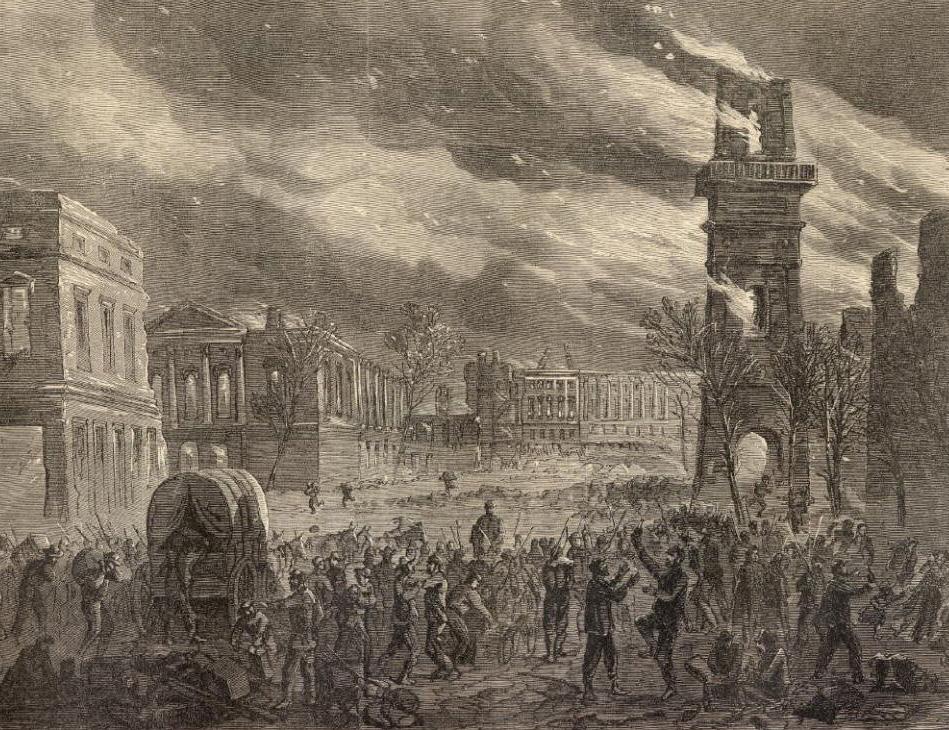
troops as they entered the village, but shortly after the soldiers penetrated the village firing broke out. It is unknown who fired the first shot, however hand to hand combat soon began throughout the village. The warriors resisting the cavalry’s advance into the village bought time for non-combatants to flee. As night began to descend on the village, Sully ordered his men to pull out of the village afraid of his men firing on each other.
The men of the 6th Iowa and 2nd Nebraska left the Sioux village and set up camp on the hill from which they first saw the village. By first light the next morning the Sioux had abandoned the village.
When Sully’s men reentered the village they encountered both dead and living Indians. The living consisted of some elderly Sioux who had been unable to flee, along with a few children who had become separated from their parents. In the village General Sully’s command found some 450,000 pounds of dried buffalo meat, the village’s winter meat supply. This meat supply, along with the lodges, was ordered destroyed. The elderly and children were gathered up for transport to Fort Pierre, S.D.
The fight with the village’s warriors however was not yet over. On Sept. 5 a patrol of 27 soldiers led by Lt. Charles Hall attempting to follow the path of the retreating Sioux was attacked as they encountered Sioux fleeing the village heading north for Canada where they would winter. Sully’s command suffered 22 killed and 38 wounded while Sioux casualties are estimated to have been 150 killed and wounded and 150 captured.
In 1909 a monument was erected on a hill above the village to honor the men of the 2nd Nebraska Cavalry and 6th Iowa Cavalry. The shaft is topped by a trooper blowing a bugle sounding Taps. On its base is recorded: “In memory of the soldiers of the 6th Iowa and 2nd Nebraska who were killed on this ground in battle with Sioux Indians on September 3 and 5, 1863.” Around the monument are twenty-two headstones commemorating the soldiers who died. In 1941, a monument was erected at the site of the Sioux village to honor the Sioux who fought and died here. In that same year Civilian Conservation Corps (CCC) workers erected two rock shelters on the battlefield, one
near the soldier monument and one near the Sioux monument. The battlefield today is part of the North Dakota Park system and, while well off the main highways, is worth visiting as the battle site remains as it was in 1863.

Charles H. Bogart is a graduate of Thomas More University
and Ohio State University. He is president of the Frankfort Civil war Roundtable, serves on the board of the Kentucky Civil War Roundtable, and is employed as a tour guide at the Fort Boone Civil War Battle Site in Frankfort, Kentucky. He has co-authored two books on Kentucky and the Civil War.
31 February 2020 Civil War News
crr.sc.gov 803.737.8095 301 Gervais Street
SC
IT ALL HAPPENED HERE. The Civil War. The War Between the States. The Late Unpleasantness. Whatever you call it, no one tells the story better than we do. Learn more at crr.sc.gov.
| Columbia,
A view from the Sioux village site to monument hill. In the foreground is the Sioux memorial and to its left the North Dakota Historical Society’s marker. Above and to the right of the Sioux memorial is one of the CCC built shelters; to its left is the monument to the 2nd Nebraska and 6th Iowa.
A view of the 2nd Nebraska and 6th Iowa monument.
A closeup of the 2nd Nebraska and 6th Iowa monument with its encircling memorial grave stones.
Michael Beschloss, Sidney Blumenthal, and the ‘Looking For Lincoln’ Heritage Coalition
GETTYSBURG, Penn.—The Lincoln Forum has presented its three annual achievement awards. The 2019 honorees are leading presidential historian Michael Beschloss, Lincoln biographer Sidney Blumenthal, and the Looking for Lincoln Heritage Coalition, which coordinates and promotes the 43-county Abraham Lincoln historic region in Illinois.
Beschloss earned the prestigious Richard N. Current Award for lifetime achievement. Blumenthal won the first annual Lincoln Forum Book Prize. Looking for Lincoln took home the annual Wendy Allen Award for institutional achievement by a Lincoln or Civil War organization.
The awards were presented during the 24th annual Lincoln Forum symposium, held Nov. 16-18 at the Wyndham Hotel in Gettysburg. This year’s Forum drew a record crowd of 349 attendees.
Current Award to Beschloss
Presidential scholar, author, and CNN commentator Beschloss was the 2019 Forum keynote speaker, addressing the crowd Nov. 18 on “President Lincoln and Other Wartime Presidents,” drawn largely from his recent best-seller Presidents at War.
Before beginning his talk, Forum Chairman Harold Holzer presented Beschloss with the 24th annual Current Award, named for the late “Dean of Lincoln Scholars” Richard Nelson Current, the Bancroft Awardwinning author of such classics


as The Lincoln Nobody Knows and Lincoln and the First Shot.
In presenting the award, Chairman Holzer called Beschloss “history’s fact-checker-in-chief. Holzer hailed him “for providing evolving drafts of the American story that expose both common threads and fault lines, and doing so with uncommon wisdom, felicity, and conviction; and for helping us to explore with thought-provoking contributions to the history bookshelf, the true meaning of— and need for—great presidential leadership, in peace and war, and every circumstance in between.”
Added Holzer: “Just Google Michael Beschloss to find how high a standard he holds for himself and those we Americans elect to lead us. But that is not to detract from books that truly make a difference: disquisitions on the elusive nature of wartime leadership and power, and rigorously take the measure of leaders who, for better or for worse, are tested in the crucible of war.
“Where he has focused the most intensely on Abraham Lincoln, slavery, and rebellion— in Presidential Courage and Presidents of War,” Holzer concluded, “Michael Beschloss has revealed our 16th president to be politically deft, morally balanced, militarily ingenious, and a master of self-restraint—one of the virtues he believes most important to sustained and inspiring leadership.”
Previous winners of the Richard Nelson Current Award of Achievement are: historian Gabor Boritt (1996); C-SPAN founder Brian Lamb (1997); “historian of the century” John Hope Franklin (1998); U. S. Senator Paul Simon of Illinois (1999); biographer David Herbert Donald (2000); historian Garry Wills (2001); historian James M. McPherson, with an honorary award to the dean of
Blumenthal Wins First Forum Book Prize
The inaugural Lincoln Forum book prize, a juried award that brings a $1,000 check and a certificate, was won by writer Sidney Blumenthal for the recently published third volume in his acclaimed multi-volume Lincoln biography: All the Powers of Earth: 1856–1860 (Simon & Schuster). Following the presentation, Blumenthal addressed the Forum on “‘A House Divided:’ How Lincoln Emerged Out of the Whirlwind to Become President.”
our inaugural prize. Sidney brings the insight of a political veteran and the craftsmanship of an artist to his work, and provides an eloquent and affirmative response to the eternal question: is there anything new to say about Lincoln?”

The newly established prize honors books published from February to February and considers biographies, monographs, works of synthesis and interpretation, edited collections of original papers, and documentary editing projects published in the English language.
Lincoln scholars, Richard Nelson Current himself (2002); actor Sam Waterston (2003); Ulysses S. Grant authority John Y. Simon (2004); the award’s sculptor of record, John McClarey, together with an honorary award for founding chairman Williams (2005); historian Doris Kearns Goodwin (2006); novelist Jeff Shaara (2007); documentary filmmaker Ken Burns (2008); Supreme Court Justice Sandra Day O’Connor (2009); historian Mark E. Neely Jr. (2010); battlefield guide extraordinaire Ed Bearss (2011); Reconstruction scholar Eric Foner (2012); playwright and scenarist Tony Kushner (2013); the late dean of Lincoln reenactors James Getty (2014); Lincoln assassination authority Edward Steers Jr. and prolific Civil War historian William C. “Jack” Davis (2015), with an honorary award to Forum founding vice chair Harold Holzer; Civil War historian James I. “Bud” Robertson Jr. (2016); master biographer Ron Chernow (2017); and prize-winning historian David Blight (2018).
The Current Award comes in the form of Decatur, Ill., sculptor John McClarey’s bust portrait of Abraham Lincoln. At this year’s ceremony, at the behest of Richard Current’s widow, Marcia Ewing Current, the Forum re-gifted the actual award once earned by Dr. Current himself, McClarey’s impressionistic statuette, Freedom River, to Mr. Beschloss. “Dick always admired Michael,” Ms. Current wrote.
“And as we search for appropriate repositories for his papers and many awards, we could think of no more deserving scholar to own the prize named for him, and given to him, than this year’s award winner.” Beschloss thus became the first Forum award recipient to take home two Current awards in a single year.
Blumenthal was making his second Lincoln Forum appearance. He has enjoyed a diverse career as a political advisor, journalist, and historian, most recently as the author of the multi-volume biography series The Political Life of Abraham Lincoln, which now includes, in addition to the award-winning third volume: A Self-Made Man, 1809–1849 and Wrestling with His Angels, 1849–1856. Over the years, Blumenthal has also worked as a magazine writer, an editor, White House aide to President Bill Clinton, and senior advisor to Hillary Clinton. His other books include The Permanent Campaign (1980) and The Clinton Wars (2003).
“The Forum is absolutely delighted to recognize Sidney Blumenthal’s extraordinary achievement in crafting a masterful series of new books about the life and times of Lincoln, even in mid-series,” commented Chairman Holzer. “Although he still has two volumes to go to complete The Political Life of Abraham Lincoln, his first three entries, particularly the third and most recent, shed such light on his subject and the environment in which he rose that the jury clearly felt the author deserved
Judges for the Forum’s first book prize were: Dr. Thomas A. Horrocks (Chairman of the Book Prize Committee), historian, author, and Lincoln Forum executive committee member who has held administrative posts at both Harvard University’s Houghton Library and Brown University’s John Hay Library; Dr. Michelle Krowl, author, Lincoln and Civil War specialist at the Manuscript Division of the Library of Congress, and Secretary of the Lincoln Forum; and Daniel R. Weinberg, author, manuscripts expert, Forum board member, and longtime proprietor of the Abraham Lincoln Book Shop in Chicago. Dr. Horrocks made the official presentation to Sidney Blumenthal on November 17.
Wendy Allen Award to ‘Looking for Lincoln’
The Wendy Allen Award for institutional excellence went to the Illinois-based coalition dedicated to enhancing the communities and landscapes of central Illinois through recognition and support of their significant natural, cultural, and historical legacies.
The 2019 presentation was made by Forum Vice Chairman Jonathan W. White, who said: “Looking for Lincoln’s work
32 Civil War News February 2020
Lincoln Forum Presents 2019 Achievement Awards to:
Michael Beschloss (L) with the 2019 Lincoln Forum Richard N. Current Achievement Award, presented by Chairman Harold Holzer (C) and Vice Chairman Jonathan W. White.
Sidney Blumenthal (center) receives inaugural Lincoln Forum Book Prize from, L to R- jurors Dan Weinberg, Michelle Krowl, Tom Horrocks (chair) and Forum Chairman Harold Holzer. (All photos by Henry Ballone)
Ceremony for the 2019 Wendy Allen Award for organizational excellence- L to R, Chairman Holzer; award winner Sarah Watson of the Looking for Lincoln coalition; artist Wendy Allen, who created the award; and Vice Chairman White.
with local historic sites brings Abraham Lincoln to life for visitors of all ages. The coalition is a wonderful model of how historic organizations can work together to preserve the legacy of our nation’s greatest president. We honor them tonight for their work engaging the public with the story of Lincoln’s three decades in Illinois.”
The award was accepted by Sarah Watson, executive director of Looking for Lincoln and the Abraham Lincoln National Heritage Area. “We are honored to receive this award for our efforts in preserving and telling the story of Abraham Lincoln in Illinois to visitors and residents alike,” she said at the Nov.
17 presentation ceremony. “We would like to thank the Lincoln Forum for its support of our efforts.”
Harold Holzer added: “Looking for Lincoln has taken hallowed ground and made it accessible to more and more visitors. As one who has often enjoyed the thrill of walking alongside Lincoln’s Illinois pathways, I cannot overemphasize the importance of ‘place’ to history, and the importance of Looking for Lincoln in leading the way to these places for all Americans.”
The award is a limited-edition print portrait of Lincoln by Gettysburg’s noted Lincoln artist-in-residence, Wendy Allen, a member of the Forum’s advisory

Military Images magazine
board. In previous years, the Forum’s award for institutional excellence has gone to such organizations as: the Friends of Ford’s Theatre in Washington, D. C.; President Lincoln’s Cottage at the Soldiers’ Home in Washington; the Lincoln Home National Historic Site in Springfield, Ill.; The Lincoln-Douglas Society of Freeport, Ill.; the Ulysses S. Grant Association in Starkville, Miss.; the Lincoln Shrine in Redlands, Calif.; The Gilder Lehrman Institute of American History, New York City; the Lincoln Heritage Museum at Lincoln College in Lincoln, Ill., the Gettysburg Foundation, and last year’s winner, The International Lincoln Organization at LSU/ Shreveport.
Scholarships, Essay Contest Winners
For more than 15 years, the Forum has also managed an annual Platt Family Essay contest, which offers college students prizes of $1,500, $750, and $500 for essays on a carefully selected theme. This year’s essay question was: “Abraham Lincoln: Our Greatest President?” Essays were submitted by 144 students from around the country.
First prize and $1,500 was awarded to Hannah So of Georgetown University; second prize and $750 went to Cassidy Durland of Mesa Community College; and third prize and $500 went to Brett Cornwell at New Mexico State University. Excerpts from the winning essay were read aloud at the final morning session of Forum XXIV and will be published in the May 2020 Lincoln Forum Bulletin
The 2019 Platt Family Essay Contest jury was composed of Don McCue, director of the A. K. Smiley Public Library in Redlands, Calif.; Edna Greene Medford, professor of history at Howard University; Daniel Weinberg of the Abraham Lincoln Book Shop in Chicago, Craig L. Symonds, visiting professor at the U.S. Naval War College in Newport, RI; and Gerald Prokopowicz, professor of history at East Carolina University.
TRIAL ISSUES
of our nation’s 16th president, The Lincoln Forum offers an annual prize of $1,000 for a distinguished book published during the 12 months ending in February 2020, in which Abraham Lincoln is a central figure. The book prize will be presented at the 25th annual symposium of the Lincoln Forum, to be held November 1618, 2020, in Gettysburg, Penn.
The winner of the inaugural prize, announced on November 17, was Sidney Blumenthal.
General rules of submissions for the 2020 competition are:
1) Biographies, monographs, works of synthesis and interpretation, edited collections of original papers, and documentary editing projects, published in the English language, are eligible.
2) Only books published during the period from February 2019 through February 2020 will be considered.
3) One printed copy of each entry, along with a cover letter nominating the work for the award, must be sent to each committee member and labeled “Lincoln Forum Book Prize Entry,” no later than March 1, 2020. Entries will not be returned.
Names/contact information of committee members are:
Thomas A. Horrocks, Ph.D. 11A Brewer Street Cambridge, MA 02138 thomasahorrocks@gmail.com
Michelle Krowl, Ph.D. 129 S. Park Drive Arlington, VA 22204 mkrowl@aol.com
Christian McWhirter, Ph.D. 1324 Community Drive Springfield, IL 62703 christianmcwhirter.ala@gmail.com
Daniel R. Weinberg Abraham Lincoln Book Shop, Inc. 824 W. Superior Street, Suite 100 Chicago, IL 60642 lincolnian@aol.com
The winner of the book prize will be announced by The Lincoln Forum at its symposium and via its website, other social media, and a variety of news outlets. The winner will be invited to present a paper at the Forum symposium, with expenses paid that cover travel, hotel accommodations, and symposium registration.
Civil War Catalog
Featuring a large assortment of Civil War and Indian War autographs, accoutrements, memorabilia, medals, insignia, buttons, GAR, documents, photos, & books. Please visit

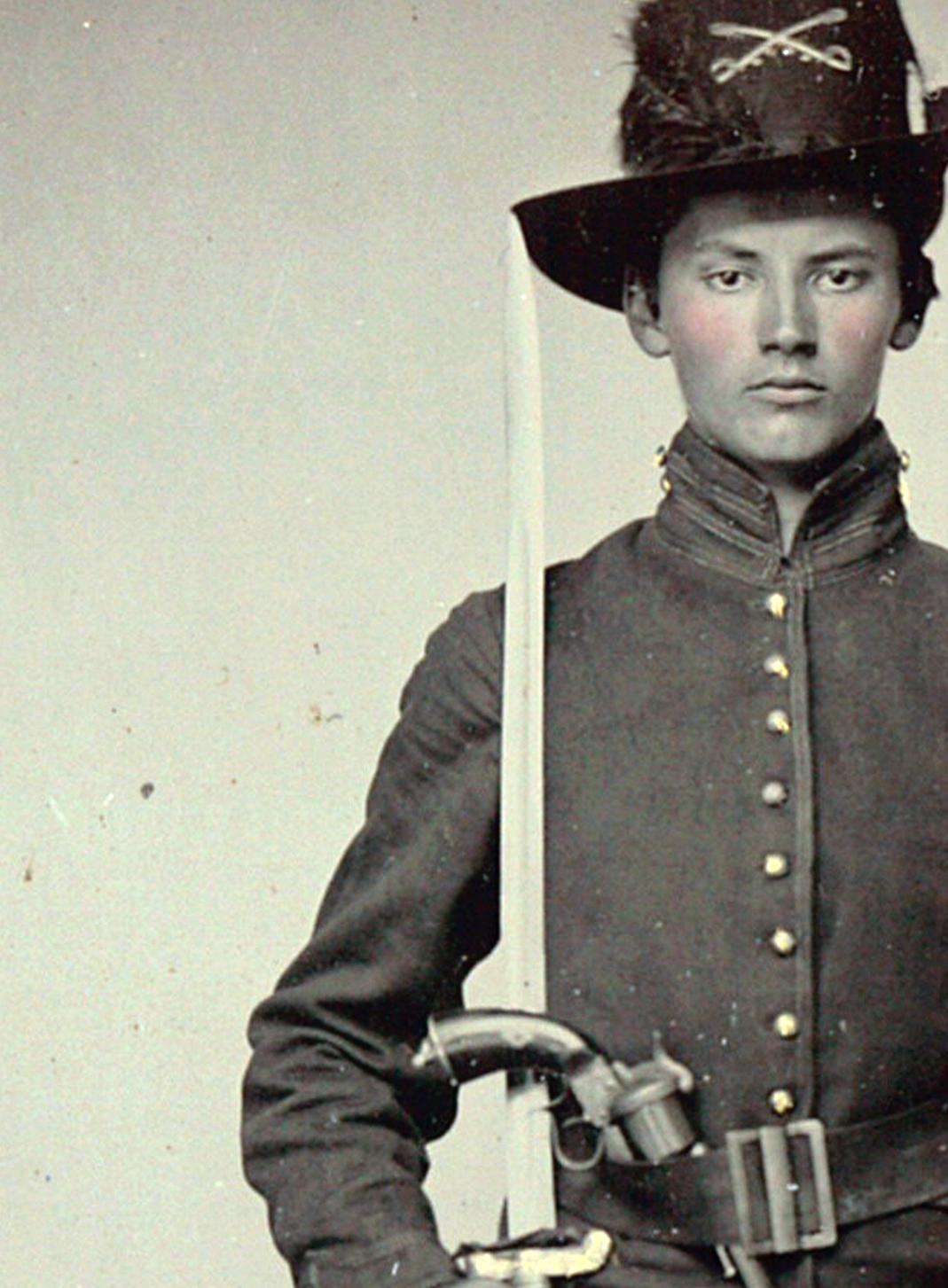
All Hands on Deck!
In addition, the Forum provides annual teacher and student scholarships—this year to three students and four teachers.
Lincoln Forum Opens Competition for 2020 Book Prize
The Lincoln Forum is now accepting submissions for its annual book prize. To honor outstanding scholarship on the life and career
33 February 2020 Civil
News
War
MI
MilitaryImagesMagazine.com | Facebook.com/MilitaryImages Since 1979, MI has been America’s only publication dedicated to historic photographs of soldiers and sailors. By check payable to: Military Images PO Box 50171 Arlington, VA 22205 Online: MilitaryImagesMagazine.com SUBSCRIBE NOW 4 quarterly issues, $24.95 Want to try before you subscribe? Visit MI’s website to sign up for a 2 issue trial.
“This is the magazine for all things Civil War Navy. From ‘Uncle Sam’s web-feet’ to the ‘grey jacket navy’ raised by Jeff Davis! It is all here thoroughly researched and illustrated by beautiful contemporary navy images.” Ron Field, military historian and author of over 45 books, including Bluejackets: Uniforms of the United States Navy in the Civil War Period, 1852-1865. New Price Effective July 1, 2019 • 1 Year—4 Issues: $37.95 Subscribe Now at civilwarnavy.com Or send a check to: CSA Media, 808 Drayton St., Savannah, GA 31401 International subscriptions subject to postage surcharge. Sailors and Marines on the deck of the U.S. gunboat Mendota, 1864. National Archives (Identifier 524548).
Support Our Mission to Bring You the Naval History
copy mail catalog
Brackin PO Box 652, Winterville, NC 28590 • 252-565-8810
our fully illustrated online catalog at www.mikebrackin.com Free
Mike
Gettysburg Civil War Roundtable Annual Distinguished Book Award

The Gettysburg Civil War Roundtable is pleased to announce that its annual award for the best book published on the Gettysburg Campaign in 2018 goes to Robert J. Wynstra for his work At the Forefront of Lee’s Invasion: Retribution, Plunder, and Clashing Cultures on Richard S. Ewell’s Road to Gettysburg.
Robert Wynstra holds Master’s Degrees in History and Journalism from the University of Illinois where he has served in a variety of positions as a director of communications for several university programs. Wynstra’s interest in the Gettysburg Campaign is revealed in several published magazine
articles as well as a previous book entitled The Rashness of That Hour: Politics, Gettysburg, and the Downfall of Confederate Brigadier General Alfred Iverson which, among other awards, received the Gettysburg Civil War Roundtable’s Distinguished Book Award in 2011 making Wynstra the only two-time winner of this award.
Wynstra will be honored and will speak at the Sept. 24, 2020 meeting of the Gettysburg Civil War Roundtable at 7 p.m. at the GAR Hall located on East Middle Street in Gettysburg. All interested persons are encouraged to attend.

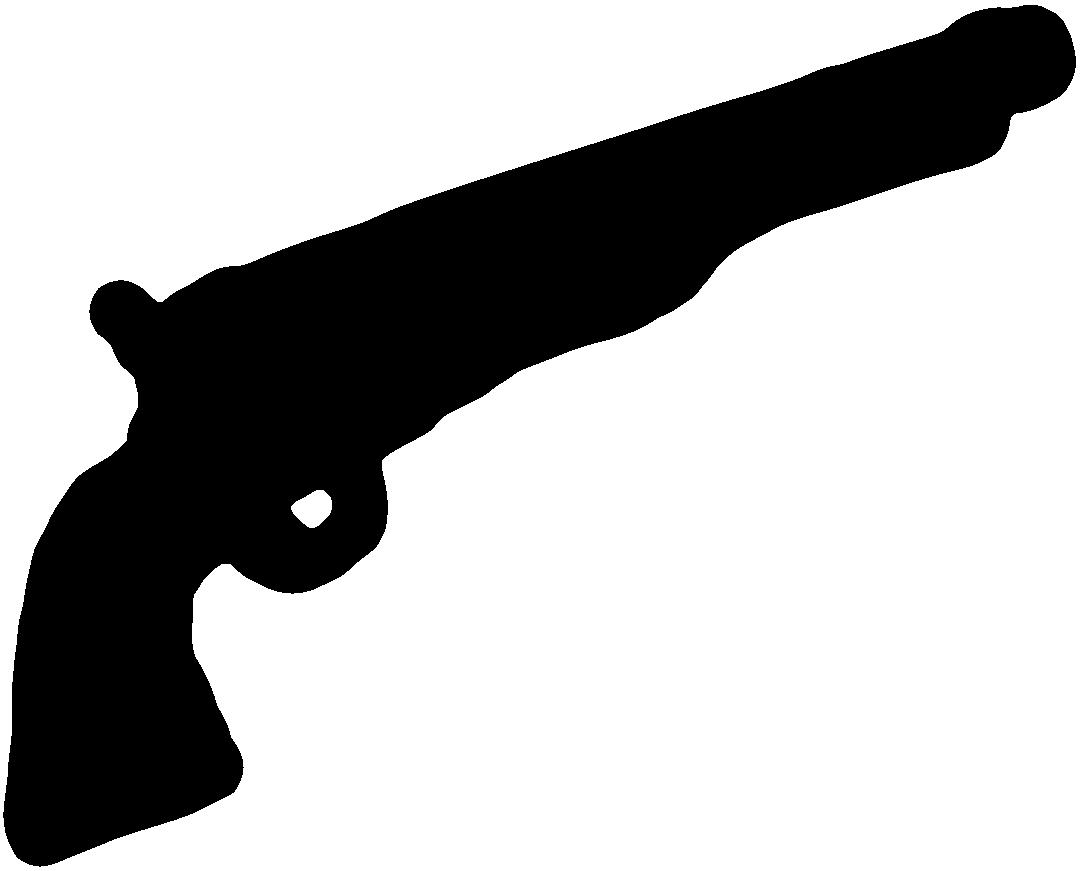

Honorable Mention was offered to two works: Under the

Crescent Moon, Vol 2 by James S. Pula and Maine Roads by Tom Huntington.
Contact: Larry M. Plymire Chair Book Award Committee Gettysburg Civil War Roundtable LJPLY37@gmail.com 717-624-5540


34 Civil War News February 2020 Publishers/Authors Updated Information Send your book(s) for review to: Civil War News 520 Folly Road, Suite 25 PMB 379 Charleston, SC 29412 bookreviews@civilwarnews.com Cliff Sophia | Proprietor CSArms.com 9150 John S. Mosby Hwy. (Rt. 50) Upperville, Va 20185 for US Mail: PO BOX 602 (540) 592-7273 • SophiaCSArms@aol.com Collector’s Arms 1700-1945 Militaria Specializing in Civil War-World War II
e Artilleryman is a quarterly magazine founded in 1979 for enthusiasts who collect and shoot cannons and mortars primarily from the Revolutionary War, Civil War to World War II. Now expanded and fully illustrated in rich color throughout the entire magazine. 520 Folly Road, Suite 25 PMB 379, Charleston, SC 29412 • 800-777-1862 • mail@artillerymanmagazine.com www.ArtillerymanMagazine.com The Artilleryman Magazine FOUR INCREDIBLE ISSUES A YEAR Subscribe online at CivilWarNews.com
CHARLESTON IN THE WAR
CHARLESTON IN THE WAR


100 Signi cant Civil War Photographs: Charleston in the War features newly restored images of scenes in the famed city, taken 1860–1865. The cameramen include the better-known, such as George N. Barnard and George S. Cook, as well as some lesser-known ones: Samuel Cooley, Charles Quinby, the partners Haas & Peale, Osborn & Durbec.
Civil War Photographs: Charleston in the War features newly images of scenes in the famed city, taken 1860–1865. cameramen include the better-known, such as George N. Barnard and Cook, as well as some lesser-known ones: Samuel Cooley, Charles partners Haas & Peale, Osborn & Durbec.

Stephen Davis and Jack Melton accompanies each featured photograph, pictured scenes and the history surrounding them. e selected a variety of settings: that portion of Charleston known as e “Burnt District” (the area of the city destroyed by the Great Fire 1861), the Charleston Arsenal, and the many churches that allow to call theirs “the Holy City.” Special sections of this book are huge Blakely guns imported from England by the Confederates of Barnard’s views.
Text by Stephen Davis and Jack Melton accompanies each featured photograph, describing the pictured scenes and the history surrounding them. The selected images depict a variety of settings: that portion of Charleston known as The Battery, the “Burnt District” (the area of the city destroyed by the Great Fire of December 1861), the Charleston Arsenal, and the many churches that allow Charlestonians to call theirs “the Holy City.” Special sections of this book are devoted to the huge Blakely guns imported from England by the Confederates and close-ups of Barnard’s views.
Civil War Charleston goes back to e Defense of Charleston Harbor Johnson, Confederate major of engineers, and to Reminiscences of and Moultrie in 1860-’61 (1876) by Capt. Abner Doubleday, Federal second-in-command. Since then Charlestonians have contributed to the history notably Robert N. Rosen and Richard W. Hatcher III. e historical surrounding 100 Signi cant Photographs draws on these and other works. feature is its reliance upon the writings of actual participants, such as Smythe (1842–1914) and Emma Edwards Holmes (1838–1910). contribution to this literature, 100 Signi cant Civil War Charleston in the War o ers rewards for all readers, casual novice to the serious student.
The history of Civil War Charleston goes back to The Defense of Charleston Harbor (1890) by John Johnson, Confederate major of engineers, and to Reminiscences of Forts Sumter and Moultrie in 1860-’61 (1876) by Capt. Abner Doubleday, Federal second-in-command. Since then Charlestonians have contributed to the history of their city, notably Robert N. Rosen and Richard W. Hatcher III. The historical text surrounding 100 Signi cant Photographs draws on these and other works. A unique feature is its reliance upon the writings of actual participants, such as Augustine T. Smythe (1842–1914) and Emma Edwards Holmes (1838–1910).
As a contribution to this literature, 100 Signi cant Civil War Photographs: Charleston in the War o ers rewards for all readers, from the casual novice to the serious student.
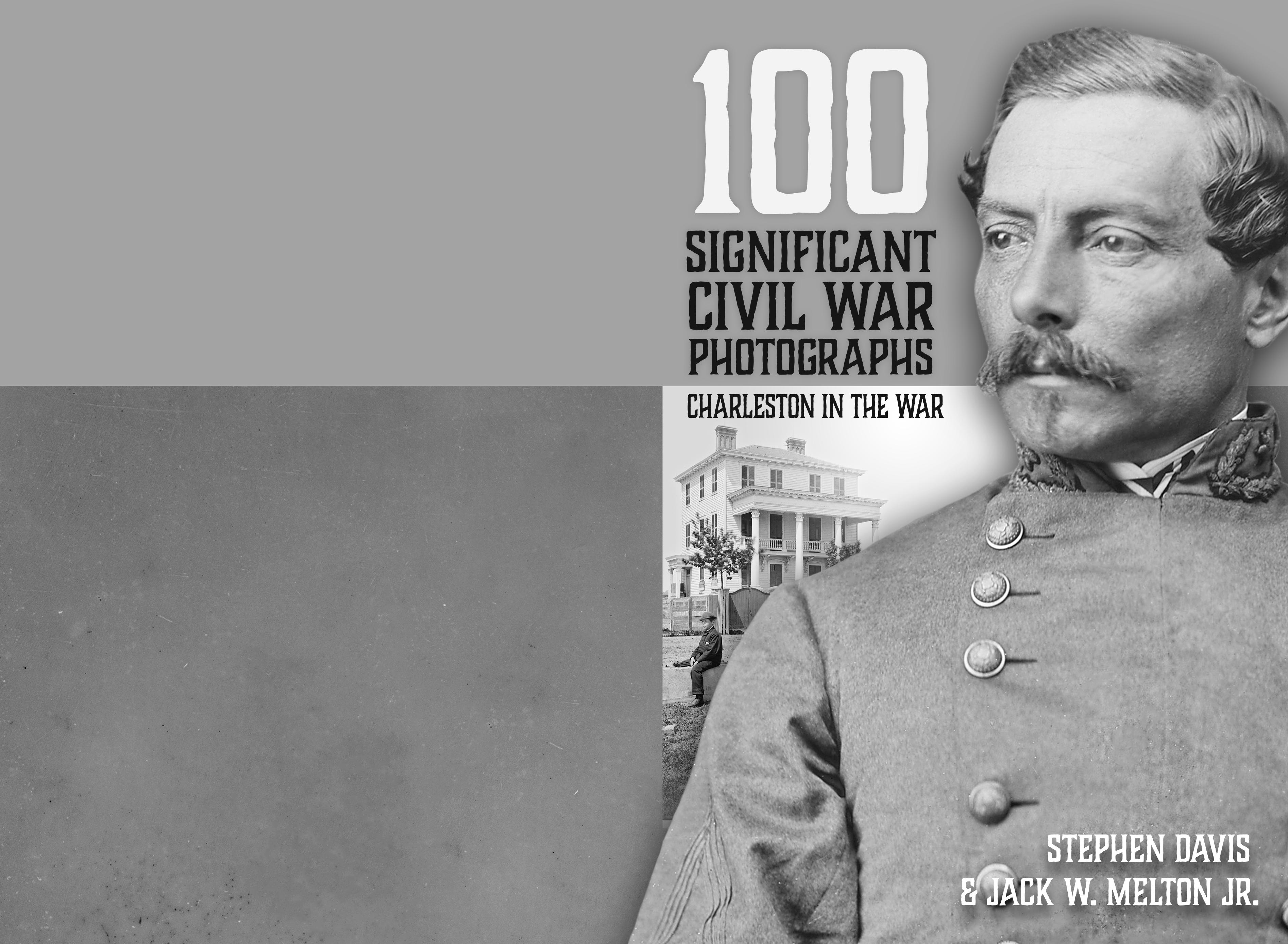


160 pages, Over 100 Photos, Maps, Index, Bibliography, Softcover.
ISBN: 978-1-61850-167-7


$19.95 + 3.50 S&H
Order online at www.HistoricalPubs.com or call 800-777-1862
35 February 2020 Civil War News
DAVIS & MELTON 100 SIGNIFICANT CIVIL WAR PHOTOGRAPHS : CHARLESTON IN THE WAR
Stephen Davis JACK W. MELTON JR.
My Journey with Central Virginia Battlefields Trust



 by Eric J. Wittenberg
by Eric J. Wittenberg



I first became interested in Civil War battlefield preservation when I met Clark B. “Bud” Hall in 1989 when he came to speak to our local Civil War Roundtable here in Columbus, Ohio. In the early 1990’s, I began working on researching the life and career of Brig. Gen. John Buford, the gifted Union cavalry commander. In 1994, I made my first visit to the Brandy Station battlefield in Culpeper County, Va., with Bud as our guide. In those days, the battlefield was still completely in private hands, but it remained in jeopardy of being developed. By the end of that visit, I was committed to doing what I could to promote the preservation of Civil War battlefields. At that time, I had no idea that Bud had been one of the three founders of the Association for the Preservation of Civil War Sites, (“APCWS”) that has morphed into the American Battlefield Trust over the years. Bud became, and remains, not just a great friend, but a mentor.


My other mentor, the late Brian C. Pohanka, was the second of three founders of the APCWS. Brian left us too soon, but we often discussed battlefield preservation. Brian was the first one to mention the Central Virginia

Battlefields Trust (“CVBT”) to me. He told me about the newly formed local advocacy group based in Spotsylvania County, that was dedicated to preserving battlefield land located in the central part of Virginia. He told me about the work being done by Dr. Mike Stevens of Fredericksburg, who was leading the charge.
Along the way, I became deeply involved in the preservation and interpretation of the great cavalry battlefield at Trevilian Station in Louisa County, Va. I knew about the local preservation advocacy group, the Trevilian Station Battlefield Foundation, that was working with the Civil War Preservation Trust, how the APCWS became known once it merged with the Civil War Trust, to preserve about 2,000 acres at Trevilian Station. This was core first day’s battle land on the battlefield owned by a logging company. It had been logged and replanted with pine trees, but it remained largely undisturbed. The local group had little in the way of resources, but with the help of the CWPT, it found a way to do the deal.
Since that time, I’ve been heavily involved in identifying additional parcels to purchase at Trevilian Station, and in helping raise money for doing so. I’ve
also worked on the preservation of the Brandy Station battlefield, and with the miserably unsuccessful fight to try to preserve the Buffington Island battlefield here in Ohio. There was no interest in saving the battlefield among the ranks of the Ohio state government here. I recall one meeting with the policy advisor for then governor-elect Bob Taft, who told me that jobs were much more important than preserving the battlefield and that Taft would not help. We lost that fight, and the heart of the battlefield was turned into a hideous sand and gravel mine, forever destroyed. That was a cautionary tale, and it led to my becoming completely committed to the cause of battlefield preservation.
I am a native Pennsylvanian, and I went to college in Carlisle, roughly thirty miles from Gettysburg. As a result, Gettysburg has always been my first love when it comes to the Civil War. However, in the mid1990’s, I began developing an interest in the Chancellorsville Campaign. Before long, it became my second-favorite battlefield, and I began studying it in detail. Along the way, I decided to tackle a book project on the Army of the Potomac’s Cavalry Corps during the first six months of 1863, a critical period in its development. Beside the infamous Stoneman Raid of May 1863, it includes detailed tactical studies of some actions that occurred at Chancellorsville itself, including the charge of the 8th Pennsylvania Cavalry late in the afternoon of May 2, 1863. I also have done a fair amount of work on cavalry actions that opened the Battle of the Wilderness and the brutal slugging match at Todd’s Tavern on May 7, 1864.




All these things made me keenly aware of the work of the CVBT in preserving the battlefields in and around Spotsylvania County. There is no other location with more significant battlefield land than Spotsylvania County, Virginia: the battles of Fredericksburg, Chancellorsville, Wilderness, and Spotsylvania Court House all occurred there, along with other lesser known
actions that are nevertheless significant. When he passed away, my friend Brian Pohanka made a gift to the CVBT of $1 million. The CVBT purchased a significant portion of the at Chancellorsville battlefield known as the McLaws Quarter that was jeopardized. It purchased the location of Grant’s headquarters at the Wilderness. All these sites fall within the aegis of the CVBT, which has evolved into one of the premier local preservation advocacy groups. It is worthy of support.
In 2018, I was invited to lead a tour of the Trevilian Station battlefield for the annual conference of the CVBT. As I worked with CVBT staff to develop and plan the tour, the more I realized that here was an opportunity for me to make an impact. The board of the CVBT primarily consisted of dedicated local volunteers and Robert Lee Hodge, who lives in Nashville, but is committed to the work of the CVBT. I saw an opportunity to lend my historian’s name and expertise and make a difference in these local preservation efforts, so I volunteered to join the CVBT board. The board, led by President Tom Van Winkle, accepted my offer, and I joined in May 2018.
Board meetings are held at the CVBT’s offices in Fredericksburg on weeknights; I live in Columbus, Ohio, so it’s not really possible for me to attend meetings in person. Rob Hodge and I typically attend remotely, and I am able to attend most meetings. I view membership on the board and participating in the work of the CVBT as one of the great honors of my life.
The CVBT is making a real difference. Our preservation work has saved critical parcels of pristine battlefield land, most recently, the Myers Hill parcel on the

Spotsylvania Court House battlefield. There is always more land to be saved; it is an endless fight that only succeeds because of the efforts of hard-working volunteers, some dedicated professional staffers, and the generosity of the citizens who open their hearts and their wallets to fund the acquisition of battlefield land. The threats to battlefield land never seem to end.
The problem, of course, is that there are constant pleas for donations for all varieties of non-profit organizations, including the American Battlefield Trust, the CVBT’s frequent partner in completing land acquisitions. We understand that most people have limited resources available for making donations and that there are other worthy causes out there chasing the same donation dollars. We appreciate all the support that we receive, and we hope that you will continue to support our efforts to preserve battlefield land.
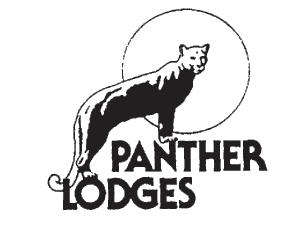
36 Civil War News February 2020 REINFORCEMENTS MAKE ALL THE DIFFERENCE!!! Nobody even comes close to building a Civil War tent with as much attention to reinforcing the stress areas as Panther. Our extra heavy duty reinforcing is just one of the added features that makes Panther tentage the best you can buy! PANTHER Catalog - $2 Web: www.pantherprimitives.com 160 pages of the best selection of historical reenactment items from Medieval era to Civil War era. Includes over 60 pages on our famous tents and a 4-color section. Your $2 cost is refundable with your first order. SEND for copy TODAY The Best Tents in History P.O. Box 32N Normantown WV 25267 (304) 462-7718 Deadlines for Advertising or Editorial Submissions is the 20th of each month. Email to ads@civilwarnews.com
Historical Publications, LLC Civil War News • 800-777-1862 520 Folly Road, Suite 25 PMB 379 Charleston, SC 29412 www.CIVILWARNEWS.com UP-TO-DATE COVERAGE • PRESERVATION NEWS • BOOK REVIEWS SHOWS, LIVING HISTORY AND REENACTMENTS • HISTORICAL ARTICLES MONTHLY COLUMNS • CALENDAR OF EVENTS STAY INFORMED! Only $38.50/One Year • $66.00/ Two Years THE MONTHLY CURRENT EVENTS NEWSPAPER -FORCIVIL WAR ENTHUSIASTS SINCE 1974 12 ISSUES PER YEAR PRINT & DIGITAL EDITIONS AVAILABLE CALL OR SUBSCRIBE ONLINE TODAY! 2018 CW N 44, $3.50 America’s Monthly Newspaper For War Enthusiasts our have acres states! County, Friends Mountain Civil War Trust’s Path to Preservation CW N 44, No. Pages, Civil War News America’s Newspaper War Enthusiasts Holzer Dancing Inside this Smoke people visit and town industrypeople spirits. mightthen departedplace eating 1863. 1797, McClellan’s ghosts nursed woundedballroom. GettysburgRemembrancePenn., Mo., beenRemembrance the featuresmeant slight meantime, please ball. Dancing the Night Away at the Gettysburg Hotel Poretsky he Lincoln Scholar Harold Holzer’s Oration at the 154th Anniversary of the Gettysburg Address Gettysburg spot—in Abraham one;one clutchingliftingAmerican becauseDouglass history,” hadduring men read great today, been politically some, kneeling believeDespiteroiling country.remember Gettysburg mightgallery,values, elevated let’s secessionconsideredequal—remained reckoning have Today,speech own, other statues Ball held
Bud and Eric on the crest of Fleetwood Hill, Brandy Station battlefield..
INSIDE EVERY ISSUE
February 2020
Civil War News
Reenactors Raise Funds for Old Bedford Village
 by Joseph Bordonaro
by Joseph Bordonaro
Sixty Civil War-era reenactors brought Old Bedford Village, in south-central Pennsylvania, to life on the weekend of August 30-Sept. 1, 2019, in an effort to raise money for the living history museum.
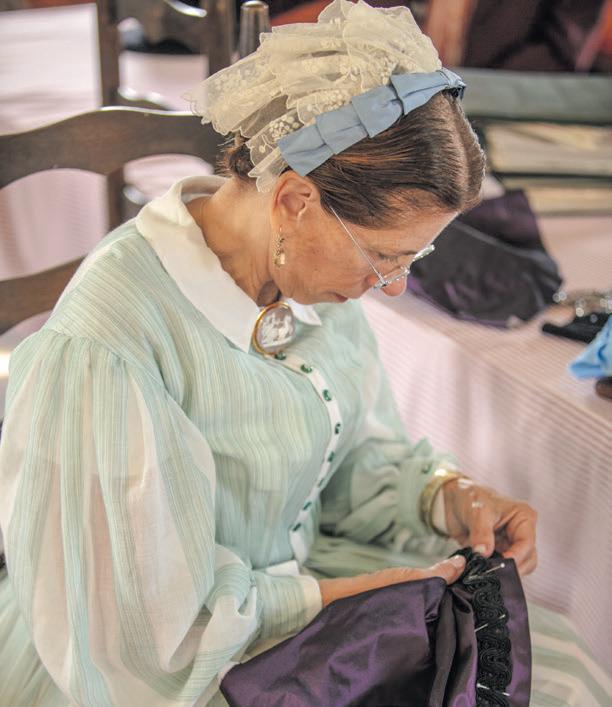

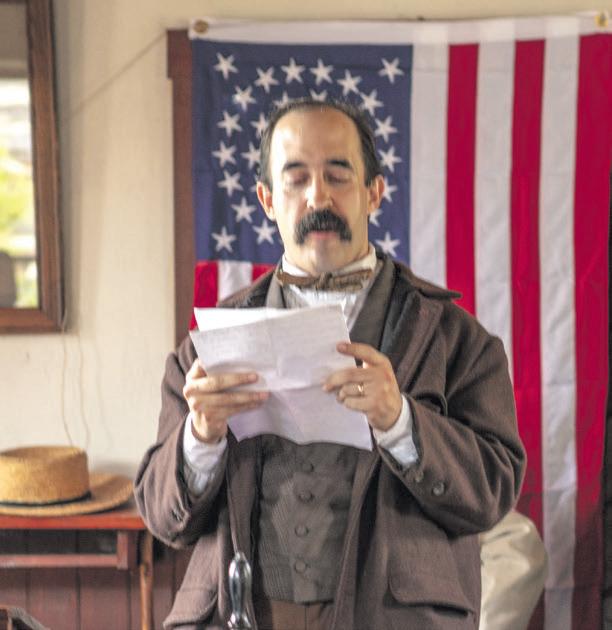



Old Bedford Village was created in 1974 to create job opportunities in an area, suffering from unemployment of up to 20% at the time. It was hoped that the museum would highlight, and preserve, Bedford’s rich history by bringing together many historic structures built during the 1700–1899 time period. The first such structure moved onto the site (a largely-abandoned farming area once occupied by a Monongahela village) was the 1844 Claycomb Covered Bridge. The old bridge now serves as the main entrance to the village, and helps visitors get into the time period immediately upon arrival. Today, Old Bedford Village is home “to over 40 authentic and reproduction buildings, including a church, tavern, jail, blacksmith shop, gun shop, general store, post office, bakery, and log houses. These buildings house exhibits and artisans who demonstrate crafts such as spinning, blacksmithing, candle making, tinsmithing, tole painting, and broom making” (Source: http:// memory.loc.gov/diglib/legacies/ loc.afc.afc-legacies.200002937/).
Financing issues face Old Bedford Village with increasing urgency, as is the case with most historic sites throughout the country. The museum runs entirely on admission fees and receives no government support. An additional financial burden was caused by a fire that destroyed the Gardner Memorial Theater in 2018. The theater had been the home of the Bedford County Players; their performances had been a source of funds for the museum.
The museum hosts several reenactments each year, including a Civil War reenactment and a Wild West weekend event. However, the museum still struggles to make ends meet. Learning of this, several reenactors stepped forward to create an event with the express purpose of raising funds for the village. This was the impetus that led to the increasingly successful Labor Day weekend Civil War-era event in Old Bedford Village each year.
All the staff who helped out with logistics and organization was unpaid volunteers. There were 60 participants, all of whom paid a registration fee
to cover the cost of running the event, with the excess funds donated to the museum. Spectator attendance this year was 350, compared with an average attendance of about 150 on previous Labor Day weekends that did not feature this event. In addition to peopling the village, reenactors included two groups of musicians who brought the sounds of the 1860s to the village. The Camp Chase Fife & Drum Corps, led by Brian Steffey, marched through the village periodically, charming the visitors and participants alike, as well as providing the “soundtrack” for the military contingent on site. The 73rd Ohio Volunteer Infantry Band, led by John Connors, presented an authentic marching brass band experience to the visiting public. All-in-all, the weekend was a resounding success, according to

organizer Janet Smith, and plans are already underway for next year’s event. Information about next year’s event can be found at: johnzaharias.com, or by emailing: buttonbaron@earthlink.net.
Joe Bordonaro is a USAF veteran (1973–1977), Glassboro State College graduate (1980), Catholic school teacher (St. Joseph’s ProCathedral, 1983–1988), and retired public school teacher (Mullica Township School, 1988–2009). He has been involved with Civil War reenacting/living history since 1999. Joe began submitting articles to the Civil War News in 2005 and has been covering events for the News on a regular basis since 2016. Joe lives in Mount Laurel, NJ, and has been married to his wife Karen for 31 years. If you wish to contact Joe, you may send an email to joe1861@gmail.com.

37
Andy Gelfert, of Pasadena, Md., at the pulpit of Christ Church. (All photos by Michelle Barkdoll)
Union soldiers marching through town.
Brian Steffey, of Pittsburg, Penn., Matthew Nester, of Sewickley, Penn., Daniel Wilson, of Damascus, Md., and Shane Anderton, of Jeannette, Penn.
Bill MacIntosh talks to two prospective customers.
Janet Smith giving out comfort packages to soldiers, helped by Jackie Greer, of Jessup, Md.
Patrick Dunigan, of Fairfield, Penn., canes a chair.
Alex Groff, of Oaklyn, N.J., reads a speech at a war meeting presided over by James Owens.
Marc Benedict, of Terre Hill, Penn., fills out an enlistment form.
Katie Carroll, with The Civilians of Gettysburg, pins a piece of fancy work.
CIVIL WAR BOOK,___ B mv 11:
Civil War News book reviews provide our readers with timely analysis of the latest and most significant Civil War research and scholarship. Contact email: BookReviews@CivilWarNews.com.
Unsung Civil War Heroines
Gunpowder on Their Skirts: Military Heroines for the Blue and Gray. By Stephanie H. Ford. Bibliography, index, notes, glossary, photographs, drawings by the author, and recipes. 96 pp., 2018. Pelican Publishing Company, Inc. www.pelicanpub. com. $10.95 paperback juvenile nonfiction.
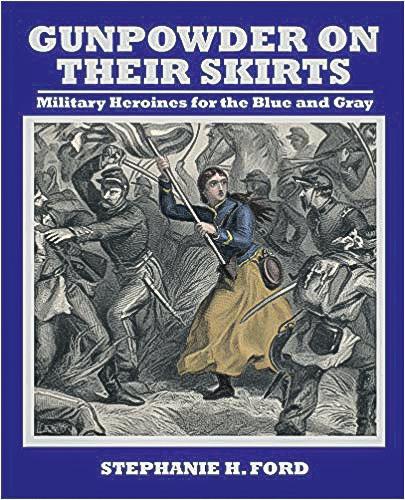
Reviewed by Lucinda Vinoski
to those who became ill in the crowded unsanitary conditions of camp. They were often called “Mother” as these skills brought comfort to those so far from home. The vivandieres helped to keep up soldiers’ morale by writing letters for them and teaching literacy skills when time permitted.
When battle raged, they braved gunfire to retrieve wounded soldiers from the field. Their skirts were often smudged with gunpowder and pierced with bullets. They provided nursing care for the wounded and helped to comfort the dying.
The Inside Story of the 16th Michigan Infantry
The 16th Michigan Infantry Regiment in the Civil War: Revised and Updated. By Kim Crawford. Appendix, notes, bibliography and index, 404pp., 2019. Michigan State University Press, msupress.org. $40.95 cloth.

Reviewed by David Marshall
likely that O’Rorke and Vincent might not have lost their lives.
While Colonel Welch would pay with his life during the Petersburg campaign at Poplar Grove Church, or Peeble’s Farm on September 30, 1864. His sacrifice redeemed his personal reputation, yet a kind of code of silence was maintained by the regiment’s survivors concerning what happened at Little Round Top.
Author Stephanie Ford has brought these unsung heroines to light from the closed pages of history. Drawing from her personal experience and knowledge as a Civil War vivandiere-reenactor
since high school, and combining this with her degrees in teaching and art, Ford has written biographical profiles of selected vivandieres (French for “caregivers”). Research from diaries, journals, and letters from private collections were instrumental in chronicling their stories. Bibliographies include Viva la Vivandieres: A Short History of Women in Pseudo-Military Costume by Bauer, Women of War by Moore and many others. The photos were reprinted from the Library of Congress, the National Archives, and the American Civil War Museum, along with those from private collections.
Although there is more known of those from the South, the vivandieres followed husbands and brothers into the war zone on both sides of the issue. Ford states, “these women were proud to be women and did not let go of their femininity nor allow it to stop them from taking an active role in the war.” Their uniforms consisted of modified skirts with trousers underneath. Cooking, laundry, sewing, and mending were their daily duties; in addition, they provided nursing care
Among those whose deeds and actions are now brought back to memory through the printed word are Kady Brownell, a color bearer, wounded in action; Susie Baker, who was made Daughter of the Regiment; “Cinderella” Boles, a wagoneer who ran the blockades; Nancy Hart and Belle Boyd who served as scouts and spies. Their photos speak of brave, determined women who served well for their cause. Upon close observation, one will see the straight-on and fixed-jaw look of those who have seen the carnage of war; the wounded and dying.
In a time when education was not considered necessary for women, there were those who did obtain a higher degree of education and were trained as nurses, doctors, and surgeons. Captain Sally Tompkins, her rank received from President Davis, set up a military hospital in Richmond and recruited volunteers to work there. Dr. Mary Walker served as a Union surgeon, the first hired by the United States government. She became an officer and earned the Medal of Honor.
These are but a few of the stories of these and other brave women who served well and gained the respect of their comrades in arms, paving the way for women in the military of today.
The 16th Michigan Infantry Regiment was originally formed by Col. Thomas Stockton, and was thus called Stockton’s Independent Regiment. The founding officer had been a slave owner, was related by marriage to Confederate general James Longstreet, was a Democrat. The regiment was started by him over the protests of Michigan’s governor, Republican Austin Blair, even though President Lincoln wanted the colonel to lead the regiment in the spring of 1861.
These fighting men were from places like Detroit, Saginaw, Lansing and many other small towns. They fought with the Army of the Potomac in many important battles and campaigns such as Gaines’ Mill, Second Bull Run, Gettysburg and the Overland Campaign. It was at the surrender of Gen. Robert E. Lee at Appomattox Court House.
In the end Colonel Stockton never received promotion to brigadier general. One of the combatant’s youngest volunteers, George Sidman, was issued the Medal of Honor on April 6, 1892. The author takes readers through the regiment’s entire term of service and on into the postwar years. After the war Stockton and his veterans were successful in politics and business.
This book tells an exciting story from the start of the conflict to the end of the war. The author’s use of letters, journals and memoirs allows readers to walk in the shoes of the soldiers in camp, during marches and in battle.
The 16th Michigan Infantry in the Civil War was originally published in 2002; it has been revised and updated for this edition. It contains 88 photographs and illustrations of many of the brave men who fought with this regiment. Crawford’s vivid description of the combat at Little Round Top held me spellbound. This is historical writing at its best. I would have preferred to see a list of maps for easy reference. The roster is presented in simple alphabetical order rather than the more standard company-by-company listing. Neither of these criticisms detracts from this fine history. The book is expensive, but well worth the purchase price.
100 Significant Civil War

Photographs: Atlanta Campaign collection of George Barnard’s camera work. Most of the photographs are from Barnard’s time in Atlanta, mid-September to mid-November 1864, during the Federal occupation of the city. With this volume, Stephen Davis advances the scholarly literature of Barnardiana.

Lucinda Vinoski is a retired Nurse Educator. She writes book reviews for Mature Living Magazine of Fayette/Westmoreland County, PA, and Book Chatter, a collection of reviews for the Connellsville Carnegie Library. She is last year’s award winner of The Heritage Newsletter Writer’s Contest. She is a student of history, appreciating both fictional and nonfictional accounts.
$19.95 + $3.50 shipping

128 pages, photographs, maps, bibliography. $19.95 + $3.50 shipping. Softbound.

ISBN: 978-1-61850-151-6. www.HistoricalPubs.com.
Order online at www.HistoricalPubs.com or call 800-777-1862
The 16th was at Little Round Top on July 2, 1863, during the battle of Gettysburg. Lt. Col. Norval Welch and some of his men panicked and broke when Texans and Alabamians flanked them. Col. Patrick O’Rorke and the 140th New York came to the assistance of the Michiganders. O’Rorke was killed, but the Confederates who had just outflanked the 16th now found themselves flanked. When the 16th Michigan’s line broke, their brigade commander, Colonel Strong Vincent, was moving toward them to halt their withdrawal from their line. At that moment he was hit by a bullet that struck him in the groin and fatally wounded him. If Welch had held his position, it is
The author has used a huge variety of primary and secondary sources to relate the Civil War story of this Michigan regiment. Students and scholars will greatly appreciate Crawford’s research and scholarship.
David Marshall has been a high school American history teacher in the Miami-Dade school district for the past thirty-three years. A life-long Civil War enthusiast, David is president of the Miami Civil War Round Table Book Club. In addition to numerous reviews in Civil War News and other publications, he has given presentations to Civil War Round Tables on Joshua Chamberlain, Ulysses S. Grant, Abraham Lincoln, the battle of Gettysburg and the common soldier.
38 Civil War News February 2020 Subscribe at CivilWarNews.com
The American Civil War was the first war in which both sides widely used entrenchments, repeating rifles, ironclad warships, and telegraphed It was also the first American War to be extensively photographed. Mathew Brady, Alexander Gardner and Timothy O’Sullivan are famous for having made iconic photographs in the Civil War’s eastern theater. George N. Barnard deserves to be ranked in this top tier for his photographic work in the war’s western theater. A civilian photographer hired by Gen. William T. Sherman’s chief engineer to take pictures of fortifications around Atlanta, Barnard took several hundred of them in and around the city in the fall of 1864. His most famous is the site of Union Maj. Gen. James B. McPherson’s death in the battle of Atlanta, July 22, 1864. Thus far, no comprehensive, definitive listing has been made of the photographer’s The Library of Congress has 130 images; the U. S. Military Academy at West Point, New York, has at least 98 photographs, donated by Captain Poe’s widow. Other repositories, such as the Gilder Lehrman Institute of American History in New York City, have smaller collections. For this book we have chosen a hundred images we deem “significant,” though other students may wonder at some of our selections. We hope that this work will stimulate further interest in Barnardiana, and that other scholarly volumes are yet to come. The Atlanta Campaign STEPHEN DAVIS 100 SIGNIFICANT CIVIL WAR PHOTOGRAPHS ATLANTA CAMPAIGN
“Aunt Polly” and Other Faves
A Rose By Any Other Name: Nicknames from the Civil War.

 By Joe DeSantis. Photographs, sources, 349 pp., 2019. jdesantis@mail2world.com. $15.95 paperback.
By Joe DeSantis. Photographs, sources, 349 pp., 2019. jdesantis@mail2world.com. $15.95 paperback.
Reviewed by Stephen Davis
Blindly Devoted to the Confederate Cause

The author’s research among a wide range of sources is evident throughout. We’ve all heard about “Unconditional Surrender” Grant, but did you know that wife Julia called him “Dudy”? (You have to take Joe at his word, as he doesn’t annotate his sources for this stuff.) On the other hand, you can corroborate Confederate Brigadier Tyree Bell’s byname (“Forrest’s Right Arm”) by checking Nat Hughes’ biography (2004). Similarly, Susannah Ural confirms the nickname that Texans gave their commander, Brig. Gen. Jerome Robertson: “Aunt Polly” (Hood’s Texas Brigade [2017]).
An Everlasting Circle: Letters of the Haskell Family of Abbeville, South Carolina

1861–1865. Edited by Karen Stokes. Afterward by James Everett Kibler. Photos, notes, index, bibliography, 431 pp., 2019. Mercer University Press, www. mupress.org. $35.00.
Reviewed by Tracy J. Revels
What’s in a name? that which we call
a rose
By any other name would smell as sweet.
– Shakespeare, Romeo and Juliet
That may be true for roses, but nicknames are distinctive and highly personal—as one sees in Joe DeSantis’ delightful compilation of nicknames for nearly 150 Civil War figures. Each of his subjects—75 Northerners, 69 Southerners—receives a twoto-three-page vignette that explains how each earned his/her sobriquet.
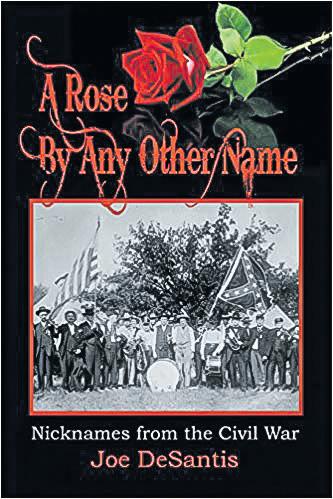
Some of them are well known (Fighting Joe Hooker, Stonewall Jackson) but DeSantis’ lively writing makes even these little chapters a lot of fun to read. Bestowers of pet names often zeroed in on some physical trait, such as “Old Bald Head” for Dick Ewell—the general whom DeSantis terms “follicly impaired.” “Life at sea dictates a captive audience,” he writes of the Alabama’s captain; “Semmes’ sailors could not help but take note of his long, dark mustache, upturned at its ends, rigid, and impeccably polished. They soon began referring to him as Old Beeswax.”
Just as prominent is DeSantis’ sense of humor. On nicknames for Belle Boyd, the spy: “here they are, in no specific order; The Siren of the Shenandoah (my favorite), The Rebel Joan of Arc, Cleopatra of the Secession, Le Belle Rebelle (a French newspaper monicker) and The Amazon of Secessia. You go, girl!” His conversational tone adds to one’s enjoyment of A Rose. One of Ambrose Burnside’s nicknames was Burns—“hey, I never said they would all be interesting.”
This is a family newspaper, so I can’t divulge Maj. Gen. Israel Richardson’s nickname, but only say that before DeSantis offers it, he warns, “be nice.”
A Rose lacks a table of contents or index for the nicknamed individuals; either might have enhanced its value as a reference guide. But what the hey— it’s a fun read, bestowing lots of pleasure from even a cursory look-through, such as the story of how Union Maj. Gen. George Sorell got his nickname: “He had a strong desire to make sure that his troops were always back in camp by dusk, so they could cook their rations and settle in properly for the night.” So what did they call him?
“Granny Sundown.”
Stephen Davis’ newest book is Texas Brigadier to the Fall of Atlanta: John Bell Hood (Mercer University Press, 544 pp., footnotes, bibliography, maps by Hal Jesperson, $35 hardcover).

Civil War letters are vital primary sources, a font of information about the lives of both soldiers and civilians. What is said in letters is important; what is left unsaid can be equally instructive. This is very much the case for An Everlasting Circle, a collection of missives between seven Confederate soldiers and their parents, sisters, and friends.

The Haskells of Abbeville, S.C., were a large, wealthy, and well-connected plantation family who sent seven sons to fight for the Confederacy. The Haskell men were all classically educated, as befitted their position, and the literary quality of their letters demonstrate how well they learned their lessons. During the war, two brothers died (one being killed at Gettysburg) and two more were severely wounded. The family experienced some economic hardship and a great deal of anxiety. A sister continued her education at girls’ schools until almost the end of the war, and both parents survived the conflict. Afterward, the Haskell men would all find various forms of personal success, from law and politics to entrepreneurial pursuits.
The letters in the collection are gathered from several repositories. By uniting the documents, the editor allows the reader to follow the correspondence much as it might have been received by the mother at home or passed around from relative to relative.
The majority of the material is mundane, from descriptions of
camp life to the recounting of marches. The spilled ink deals primarily with the movements of the brothers and their various needs, ailments, or concerns about military politics. There is the occasional flash of humor and a few truly heart-wrenching scenes. Most touching is the relationship between Aleck Haskell and his wife, who knew less than a year’s happiness before she died after giving birth to their daughter. Aleck’s April 2, 1863, letter to his mother, reflecting on death, God and faith, is beautiful. Almost all the messages mention faith to some degree. There is much in this hefty correspondence for a student of nineteenth-century Southern religion to mine.
But there is also a strange absence in the letters. None of the Haskells spent much time considering the bondsmen and women who made their education possible, and who they were fighting to keep enslaved. The brothers frequently complain about the difficulties they experience with their “camp servants,” and an occasional mention of an ailing or recently deceased enslaved person is made by their mother, but ultimately horses occupy more space on the pages, and perhaps in the minds, of these men. It is significant that they rarely inquire about even a favored house slave or cook or nurse. This omission—stunning in such a vast collection—is more telling about the Southern elite mindset than the frequent and self-serving proclamations of piety and love of country.
The letters, for what they say and for their silence, are powerful. Readers owe the editor a debt of gratitude for assembling them. However, the introduction, as well as many of the notes, are out-of-date with current scholarship. The introduction is painfully hagiographic; the Haskells are portrayed as paragons of antique virtue, rather than as flesh and blood men. An afterword likewise appears lifted from a
Lost Cause playbook, making the Confederacy seem like a strange classical debating club, with soldiers motivated solely by lofty ideals of antiquity rather than the advantages of profiting from unfree black labor. The historical profession has moved far beyond such untenable interpretations. Ultimately, the Haskell letters serve as fascinating documents revealing a family’s deep love for each other, their great devotion to a conservative faith, and their painful blindness to the humanity of the enslaved people around them.
39 February 2020 Civil War News Digital Issues of CWN are available by subscription alone or with print plus CWN archives at CivilWarNews.com
Want To Advertise In Civil War News? Email us at ads@civilwarnews.com Call 800-777-1862 CW N Vol. 46, No. 1 $3.50 Civil War News America’s Monthly Newspaper For Civil War Enthusiasts Inside this issue: 24 Inspection, ARMS! H Remembrance Day, 2019, GettysburgThe world will little note, nor long remember what we say here, but it can never forget what they did here. – Abraham Lincoln, November 19, 1863. years ago. The Sons Union parade, featuring numerous Civilenacting groups commemorated and units by conducting march---Remembrance Day 2019. Teacher Don Mullen, portrays Deadlines for Advertising or Editorial Submissions is the 20th of each month. Email: ads@civilwarnews.com
Tracy J. Revels is Professor of History at Wofford College.
















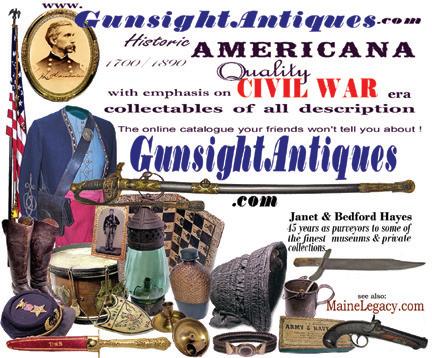








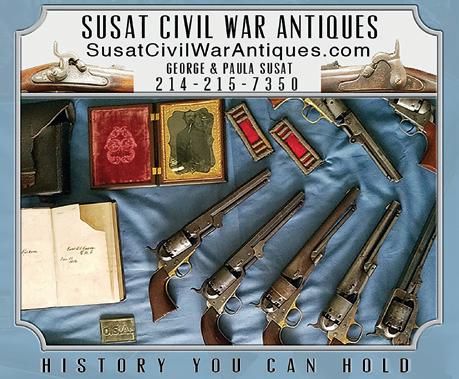
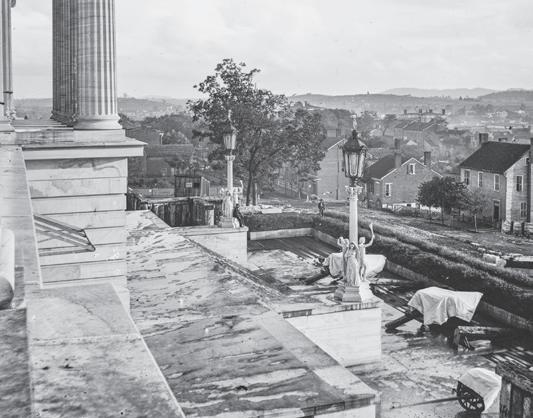

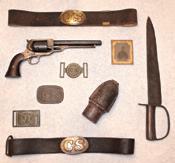

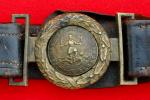




















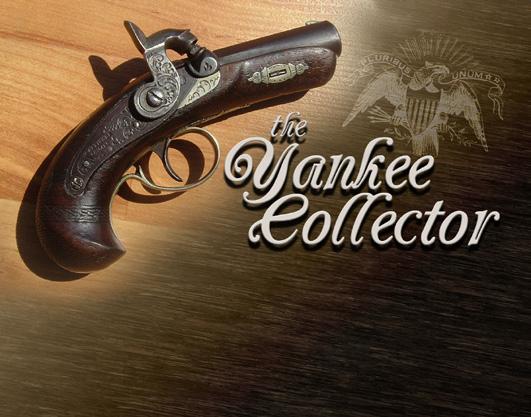











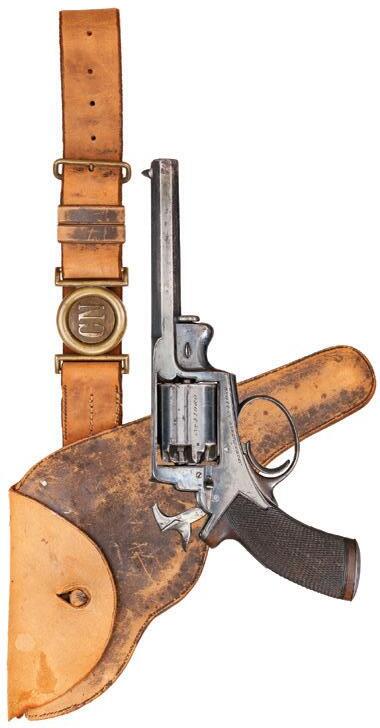



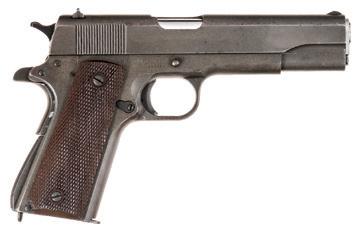








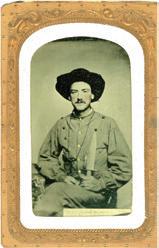
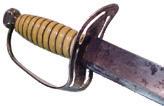

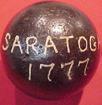




















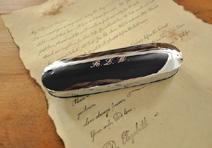





















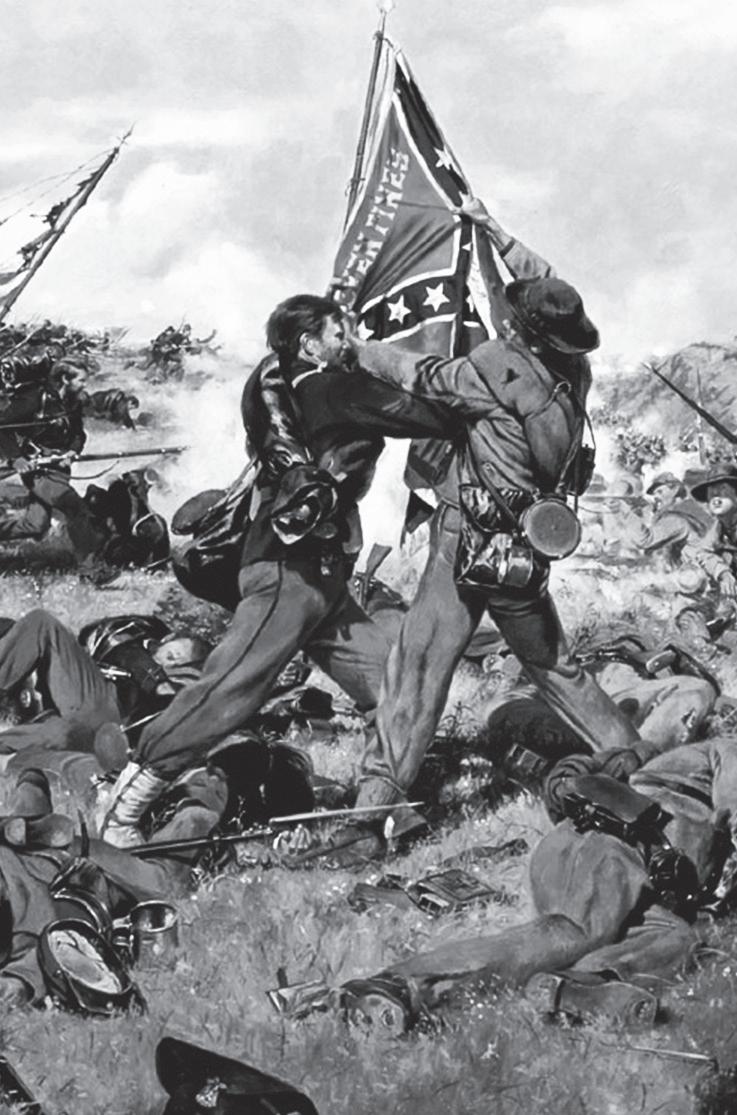




40 Civil War News February 2020 CivilWarShop.com Offering the Finest Investment Grade Military Memorabilia since 1981 Buy – Sell – Trade Certified Appraisal Services Life Member Company of Military Historians Lynn and Will Gorges, Proprietors 3910 US Hwy. 70 East New Bern, NC 28560 (252) 636-3039 • civilwarshop@gmail.com www.CivilWarShop.com Long Bay Salvage LLC specializes in the recovery and restoration of authentic Civil War Cannon with an emphasis on 10-Inch Columbiads, what has become a rare piece of Civil War history. Long Bay Salvage also works with historical entities (government and private) to recover and conserve large historical artifacts with a specialty in large field and naval artillery pieces. Glenn Dutton 770-351-7565 Rufus Perdue Perdue 843-315-9818 PLEASE CONTACT US FOR MORE INFORMATION www.LongBaySalvage.com Promoters of Quality Shows for Shooters, Collectors, Civil War and Militaria Enthusiasts Military Collectible & Gun & Knife Shows Presents The Finest Mike Kent and Associates, LLC • PO Box 685 • Monroe, GA 30655 (770) 630-7296 • Mike@MKShows.com • www.MKShows.com Northwest Georgia Trade Center 2211 Dug Gap Battle Road Dalton, GA 30720 February 1 & 2, 2020 Chickamauga (Dalton) Civil War Show Williamson County Ag Expo Park 4215 Long Lane Franklin, TN 37064 December 5 & 6, 2020 Middle TN (Franklin) Civil War Show l Shiloh Buying & Selling Authentic Civil War Artifacts 2405 Oak Grove Road Savannah, TN 38372 731-438-3541 ShilohRelics.com History@shilohrelics.com owner Rafael Eledge .com Dealing in the Finest Authentic Militaria Since 1995 with an Emphasis on the American Civil War Pistols, Muskets, Carbines, Rifles, Bayonets, Swords, Uniforms, Headgear, Belt Buckles, Cannon, Buttons, Bullets, Artillery Implements Etc. MidWestCivilWarRelics.com Bowie Knifes, Civil War Swords, Confederate D-guards, Antique Firearms, Dug Relics, Buckles & Belts, Identified Relics, Letters, Documents, Images, Currency, Uniforms, Head Gear & Flags. 3500 Shacklett Rd • Murfreesboro, TN 37129 tom@stonesrivertrading.com • (615) 336-2188 StonesRiverTrading.com Tom Hays Proprietor We carry all types of relics, dug & non-dug, Confederate & Federal. 100% Guaranteed. A strong emphasis on dug relics, but also a full line of non-dug relics of all types. Over 30 years experience with a full time, online store since 1997. We also have a shop located five miles from Stones River National Battlefield that is open by appointment. www.CollegeHillArsenal.com Tim Prince College Hill Arsenal PO Box 178204 Nashville, TN 37217 615-972-2418 Mid West Civil War Relics MidWestCivilWarRelics.com Allen Wandling Phone: 618-789-5751 Email: awandling1@gmail.com Museum Quality Civil War Union & Confederate Artifacts! We handle the Best Antique Bowie Knifes, Civil War Swords, Confederate D-guards, Antique Firearms, Dug Relics, Buckles & Belts, Identified Relics, Letters, Documents, Images, Currency, Uniforms, Head Gear & Flags. Preston Bain Nashville, TN (615) 397-5186 www.NashvilleRelics.com Nashville Civil War Relics “Old times there are not forgotten” Coles Civil War Shop.com Come by and see me at the shop or place an order online. email hmcole2@comcast.net Mac Cole 13119 River’s Bend Blvd. Chester, Va 23836 wk - 804-681-0945 cell-804-314-9940 Hours Mon - Fri 10-5 Sat - 10-3 P.O. Box 342 Thompsons Station, TN 37179 615-585-0115 Email: brubon2@bellsouth.net Franklin Relics www.AmericanRelics.net Allen Phillips 1014 Reservoir St., Suite B Harrisonburg, VA 22801 A P.O. Box 342 Thompsons Station, TN 37179 615-585-0115 Email: brubon2@bellsouth.net Franklin Relics Specializing in Accoutrements, Edged Weapons, Firearms and Uniforms FranklinRelics.com Bruce Hohler Proprietor Specializing in Buttons, Buckles, Currency, Hat Devices and other Military Artifacts. www.AmericanRelics.net Allen Phillips 1014 Reservoir St., Suite B Harrisonburg, VA 22801 American Relics Phone: 540-476-1969 Email: americanrelicsnet@gmail.com www.CivilWarBadges.com Everitt Bowles, Owner • 770.926.1132 1036 Washington Avenue Woodstock, Georgia 30188 The Largest Selection of GAR & UCV Hundreds of Memorabilia Items from Rev War through Vietnam Secure & Easy Guaranteed Authenticity of Every Item Vin Caponi Historic Antiques Vin Caponi, Jr. 18 Broadway Malverne, NY 11565 Store: 516-593-3516 Cell: 516-353-3250 rampantcolt@aol.com http://www.vincaponi.com We carry a very large inventory of Colt and Civil War firearms including muskets, carbines, rifles and accoutrements. Our inventory of historic antiques and firearms begin at the early collectors level and range all the way up to the advanced 8895 Town and Country Circle • Knoxville, TN 37923 Phone: 865-693-3007 info@armyoftennesseerelics.com Civil War Artifacts Nick Periut Proprietor ArmyofTennesseeRelics.com Buying and Selling High Quality Images, Belt Buckles and Plates, Artillery Shells, rare Bullets and Buttons! Richard Gersten (708) 786-8630 PO BOX 31113, CHICAGO, ILLINOIS 60631 www.YankeeCollector.com Specializing in Early Americana, Civil War American Indian, Old West, WW I & II Guns, Swords & Memorabilia www.uniondb.com 34 York St Gettysburg, PA 17325 Phone: 717-334-2350 • Email: bsynnamon@gmail.com Specializing in Authentic Civil War Artifacts The Union DrUmmer Boy A Museum Where You Can Shop! Contact Glenn Dutton at: glennjdutton@aol.com or 770-351-7565 BUYING & SELLING Field & Heavy Artillery Cannon, Shells, Fuses & Etc. Rare Accoutrements Michael Simens HistoricalArms.com Tel: 440-744-9088 mail@HistoricalArms.net The Only Complete Beaumont-Adams CS Naval Rig Michael Simens HistoricalArms.com Tel: 440-744-9088 • mail@HistoricalArms.net Magnificent Swords Georgia Presentation To William J. Hardee. Later Confederate Lieut. General. We Buy, Sell, Authentic And Appraise World-Class Historical Artifacts Fine Antiques & Militaria Military Items 1650-1945 Armor Swords Firearms Bayonets Equipment Accoutrements www.csarms.com PO Box 602 9150 John S. Mosby Hwy. Upperville, Virginia 20185 Shop Phone: 540-592-7273 Email: sophiacsarms@aol.com C.S. Arms, Inc. Specialize in U.S. & British Militaria www.OldSouthAntiques.com Old South Antiques, THE CONFEDERATE Old South Antiques, LLC Hickory Hill Mansion, 9222 Wickham Manor Way, Ashland, VA 23005 CARSON SQUEEGIE JENKINS 321.505.7524 WWW.SQUEEGIE.NET DESIGN SERVICES PRINT MEDIA ILLUSTRATIONS PACKAGE DESIGN CORPORATE BRANDING PRINT & MAGAZINE ADS LOGO DESIGN TEXTILE/ T-SHIRTS BROCHURES EVENT POSTERS BUSINESS CARDS 3D RENDERINGS MARKETING NEW BUSINESS START-UP PACKAGES AVAILABLE The Historical Shop Margaret & Cary Delery Box 73244 Metairie, LA 70033 Phone: 504-467-2532 c.j.delery@att.net www.historicalshop.com Since 1978 selling rare Americana Historical Shop The e Early American items through the Civil War artifacts, autographs, photography, currency, bonds, historical displays, military items, and more…… P.O. Box 160 • Kingston, TN 37763 Phone: 803-431-1798 Email: vann@veteransattic.com www.VeteransAttic.com Vann Martin United Confederate Veterans, Grand Army of the Republic, Civil War Photographs and other Civil War items. David K. Parks Military Antiques PO Box 180674 Utica, MI 48318-0674 Phone: 586-871-6462 Email: dkpma@comcast.net Offering a large selection of Civil War and Historical Memorabilia ranging from the Revolutionary War to World War (emphasis on the American Civil War). On line catalog regularly offers over 700 items from nearly every category of collecting. www.RelicsOfHistory.com Civil War Military Longarms a Specialty ConfederateArmsCompany.com 1209 Victor II Blvd., Morgan City, La. 70380 Cell: 985-518-1802 • Email: leegray@LHprinting.com Lee Gray Confederate Arms Company PO Box 129 Dover, TN 37058 Buying & Selling: Images Artillery Firearms Dug Relics Edged Weapons Non-dug Artifacts John & Nikki Walsh Fort Donelson Relics FortDonelsonRelics.com Full Line Civil War Artifact Dealer Email: john@fortdonelsonrelics.com vann@veteransattic.com www.VeteransAttic.com United Confederate Veterans, Army of Republic, Civil War Photographs other Civil items. War and Historical Revolutionary War American Civil offers over 700 of collecting. www.RelicsOfHistory.com “Reproduction Antique Spectacles to suit all sights” Authentic reproduction Civil War era eyeglasses to fit your lifestyle. Historically accurate, ophthalmic quality eyeglass frames suitable for reading, distance, bifocals, progressive lenses, sunglasses & nonprescription tinted lenses. Made for full time wear. “Spectacles are most overlooked, most obvious way to spoil an otherwise fine impression.” Thomas Valenza, Optician When you are ready to complete your impression, visit us online for detailed information about our spectacles: www.HistoricEyeWearCompany.com Prices start at $139.95 862.812.4737 Unidentified Union soldier wearing oblong spectacles (Library of Congress) Above Right: Lieutenant Adam J. Slemmer, defender of Fort Pickens (U.S. Army Heritage & Education Center) The Best Civil War Era Spectacles Buying and Selling original Civil War Confederate & Union Buttons, Belt Buckles, and Accoutrements. NCCivilWarRelics.com PO Box 2122 Morehead City, NC 28557 Phone: 252-671-7770 Email: sales@nccivilwarrelics.com or AGaskins1@ec.rr.com Allen Gaskins North Carolina Civil War Relics Robert Jones • 119 Frances Ave. • Stanhope, NJ 07874 Phone: 973-810-2976 • Email: Bob33rd@optonline.net We sell original Civil War artifacts, both excavated and non-excavated. There is also a selection of mid-19th century antiques. Yankee Rebel Antiques www.YankeeRebelAntiques.com Proprietor, Robert Jones, is the author of seven books on Civil War subjects: The Civil War Canteen Civil War Artillery – A Pictorial Introduction Children at the Battle of Gettysburg –Their Unforgettable Summer The Civil War Canteen Second Edition, Battle of Gettysburg –The Relics, Artifacts & Souvenirs, The Civil War Soldier – His Personal Items, War Canteen – Third Edition He has also written articles for North/South Trader Civil War magazine. Order his books online at http://www.lulu.com/spotlight/civilwarbooks Promoters of Quality Shows for Shooters, Collectors, Civil War and Militaria Enthusiasts Military Collectible & Gun & Knife Shows Mike Kent and Associates, LLC • PO Box 685 Monroe, GA 30655 (770) 630-7296 • Mike@MKShows.com • www.MKShows.com February 1 & 2, 2020 Chickamauga (Dalton) Civil War Show November 14 & 15, 2020 Capital of the Confederacy Civil War Show December 5 & 6, 2020 Middle TN (Franklin) Civil War Show l l Firearms & Militaria Auctioneers or Better! On Expensive Items and Valuable %0 Seller’s Commission The Tradition Continues - New Facility, Same Family and Great Location We are pleased to announce the purchase of the former Auction Facility of World-Renowned Hall-of-Fame Auctioneer James Julia. climate controlled and secured space dedicated to the promotion, presentation and handling of fine firearms collections. Our Fall 2019 Firearm Auction generated nearly $5.5 Million in sales for our consignors - Our largest to date! Call our offices to be part of our next Premier Firearms Auction Consignments Now Being Accepted 199 Skowhegan Rd Fairfield, ME 04937 207-453-2114 civilwar@poulinauctions.com Website: poulinauctions.com Stephen Poulin, ME Lic 1115 Presentation Sword of Gettysburg Hero General Alpheus Williams (est. $20,000 30,000) Sold $41,125 Sold $41,125 Rigdon & Ansley Confederate Revolver Carried By Captain Luther M. Clements, Co. F, 41st Alabama (Est. $25,000-35,000) Unique 1864 Sold $7,635 Sold $41,710 Sold $36,425 Confederate Keen-Walker Brass Frame Breech Loading Percussion Carbine (Est. $20,000-30,000) Sold $23,500 Sold $23,500 Fine Cook & Brother Athens Georgia Confederate Percussion Carbine (Est. $20,000-25,000) ROCK ISLAND AUCTION COMPANY REAL ART REAL HISTORY REAL IRON Exceptional Springfield Armory Rare and Exceptional Double Cased Pair of Early Squareback Factory Engraved Colt 1860 Army Patriotic Lady Grip, Case and The 2020 Civil War Dealers Directory is out. To view or download a free copy visit: www.civilwardealers.com/dealers.htm The 2020 Civil War Dealers Directory is out. To view or download a free copy visit: www.civilwardealers.com/dealers.htm
Civil War Artillery Book


New 392 page, full-color book, Civil War Artillery Projectiles –The Half Shell Book.

For more information and how to order visit the website www. ArtillerymanMagazine.com or call 800-777-1862.
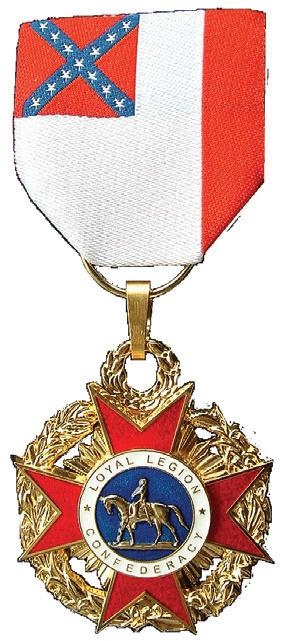
$89.95 + $8 media mail for the standard edition.
The Book on American Saddles
The Civil War Water
McCormick Civil War Insitiute Spring 2020 Conference
Saturday, April 4, 2020 from 9 a.m. – 4 p.m.
Registration information: su.edu/MCWI or by phone 540-665-4501
Registration fee: $50 includes presentations & lunch ($25 for students with valid identification)
Location: Shenandoah University 1460 University Drive, Winchester, VA
Additional Questions: Contact MCWI's director Jonathan Noyalas, jnoyalas01@su.edu
American Riding and Work Saddles and Horse Culture, 1790–1920. By Ken R.
Knopp.
Illustrated, photos, 272 pp., 2018, Ken R. Knopp Publisher, www. americansaddles.net. $60.00 hard cover.
Reviewed by Tim Prince
many Americans. Ken specifically avoids a detailed examination of Civil War military saddles, but in Chapter 3 does provide 17 pages of discussion regarding the saddle types use by both sides in the war. This, however, is only a small part of the much larger picture provided by the book.
wide range of popular saddles, many of which were variations of the major patterns discussed in Chapter 7, as well as regional saddle patterns and sporting saddles like those for racing and polo.
Few people are better versed in the study of Civil War period saddles and horse equipment than Ken Knopp. His two previous books Confederate Saddles & Horse Equipment (2001) and Made In The C.S.A., Saddle Makers of the Confederacy (2003) are considered the finest works in print on the subject. For his newest book, American Riding & Work Saddles (And Horse Culture) 1790–1920, Ken expands from a purely Civil War focus to look at the saddle in America from the birth of the nation through the post-WWI era.
The subject of saddles and horse equipment is near and dear to Ken’s heart, as he has spent nearly all of his adult life working in and around the saddle. With a background that includes everything from being a real-world working cowboy, a competitive rodeo rider, and a long and successful career in rodeo promotion, Ken has the kind of in-depth, first-hand knowledge of his subject matter that many material culture writers lack. Ken’s work experience and love of history put him in a position to be involved with numerous TV and movie productions during his career, including the ABC MiniSeries North & South and the Academy Award winning movie Glory.
As noted, this new book expands Ken’s previously narrow focus on Confederate military saddles to a rather broad examination of the civilian saddle in America, during a period of more than 100 years; a time when the horse was the primary means of transportation for
In ten chapters, Ken takes us through the history, development and use of the saddle in America. Chapter 1 looks the development and influences of European saddles from 1400 to 1800, including those patterns from Spain, France, and England that would all leave their various marks on the saddles produced in the United States. In particular, Ken looks at how the “New World” influenced the development of the what we consider the “Spanish” saddle, and also looks at the development of the English saddle over time, and in particular how the English hunt saddle would influence the various American patterns that would develop.
Chapter 2 looks at the development of the various patterns of American saddles and makes the analogy in the opening paragraph that “the history of the American saddle is the history of America itself during its formative years of the 19th century.” This becomes the guiding theme for the chapter as Ken spins the intertwined tail of America’s early western expansion and American saddle development. The chapter also looks at the evolution of the American “riding” culture. Chapter 3 looks briefly at the Civil War period and helps move the story of America to Chapters 4 and 5, which cover the classic period of the old west and the American cowboy. Chapter 4 takes an in-depth look at the saddle and harness industry in America from 1870–1900 and Chapter 5 looks at what Ken refers to as the Golden Age of the Horse, covering the same three-decade period.
Chapter 7 covers the patterns and identification of the major American saddle types of the period and is one of those sections of any serious material culture book that is will certainly end up dog eared and well used from constant referencing and use. The chapter covers some fifteen major saddle patterns and also provides a chronology of their development.

Chapters 8 and 9 cover ladies saddles and children’s saddles, respectively, while Chapter 10 takes a look at some of the other commercial patterns of the period. This last chapter covers a
Throughout the entire book Ken’s smooth conversational style allows the reader to be carried back to the glory days of the American horse, where they can develop an understanding not only of the kinds of saddles and equipment used, but also why these patterns worked; or in some cases did not work. The book is profusely illustrated with wonderful examples of the saddles discussed, with detailed color photos of items that are often from advanced private collections that are not regularly available for people to study or view. Many of the photos come from the amazing collection of our mutual friend, the late John Ashworth, to whom the book is also dedicated. Additionally, Ken provides clear and concise line drawings help to illustrate features and terminology that might not otherwise be easily understood by a tender foot such as myself, whose only real knowledge of horses was a bad summer camp experience with a less than friendly pony who did not want me on his back!
This book provides something for everyone who has an interest in the history and use of saddles in America and has been written in such a way as to provide something for both the novice and experienced historical equestrian. Whether your interest in historic saddles and horse equipment is for reenacting and living history, collecting, or simply to better understand the 19th century people that nearly every reader of Civil War News has an interest in, this would be an excellent addition to your library, and I am sure you will be very pleased with the acquisition.
For more information visit www.americansaddles.net or www.confederatesaddles.com.
Tim Prince is a regular columnist in Civil War News, as well as a contributing author to The English Connection: Arms, Material and Support Furnished to the Confederate States of America by Great Britain and Confederate & Southern Agent Marked Shotguns.
41 February 2020 Civil War News Deadlines for Advertising or Editorial Submissions is the 20th of each month. Email to ads@civilwarnews.com Subscribe at CivilWarNews.com
CSA National Defense Medals & other banned internet items Civil War Recreations WWW.CWMEDALS.COM cwmedals@yahoo.com 1 Smithbridge Rd., Unit 61, Chester Heights, PA 19017
Loyal Legion of the Confederacy
on the
Featuring nationally-recognized Civil War scholars John M. Coski, Anna Gibson Holloway, Jonathan A. Noyalas, Karen Needles and Jonathan W. White
Interesting Book About a Brave Western Regiment
Opdycke’s Tigers in the Civil War: A History of the 125th Ohio Volunteer Infantry. By Thomas Crowl. Roster, maps, photos, notes, bibliography, index, 292 pp., 2019. McFarland, www.mcfarlandpub.com. $45 softcover.

Reviewed by Robert L. Durham
Opdycke he must hold his position at all hazards. Opdycke replied, “We will hold this ground or go to Heaven from it.” General Thomas Wood memorialized the 125th as the Tigers; there is a tiger standing atop their monument at Chickamauga.
Chickamauga was the Ohioans’ baptism of fire, their introduction to battle. After Chickamauga, bottled up in Chattanooga, they attacked the Rebel line on Missionary Ridge. They were then ordered, many of them barefoot, to reinforce General Ambrose Burnside at Knoxville. After that, they took part in General W.T. Sherman’s campaign to Atlanta. They saw action at Rocky Face Ridge, Resaca, New Hope Church, and Kennesaw Mountain. In the battles around Atlanta, they fought at Peach Tree Creek.
A Casualty of Antietam
Major General Joseph King
Fenno Mansfield: A Soldier

line, Opdycke hurled his brigade forward to plug the leak. They fought the Confederates at pointblank range, even fighting handto-hand at times. Franklin and Chickamauga were their hardest-fought battles.
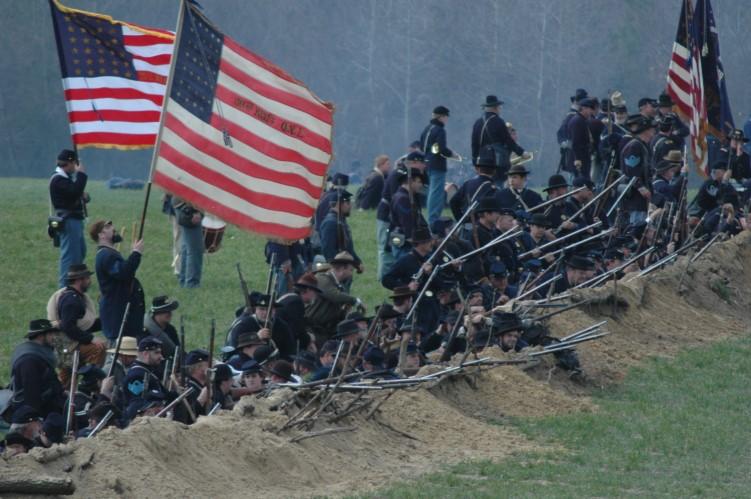
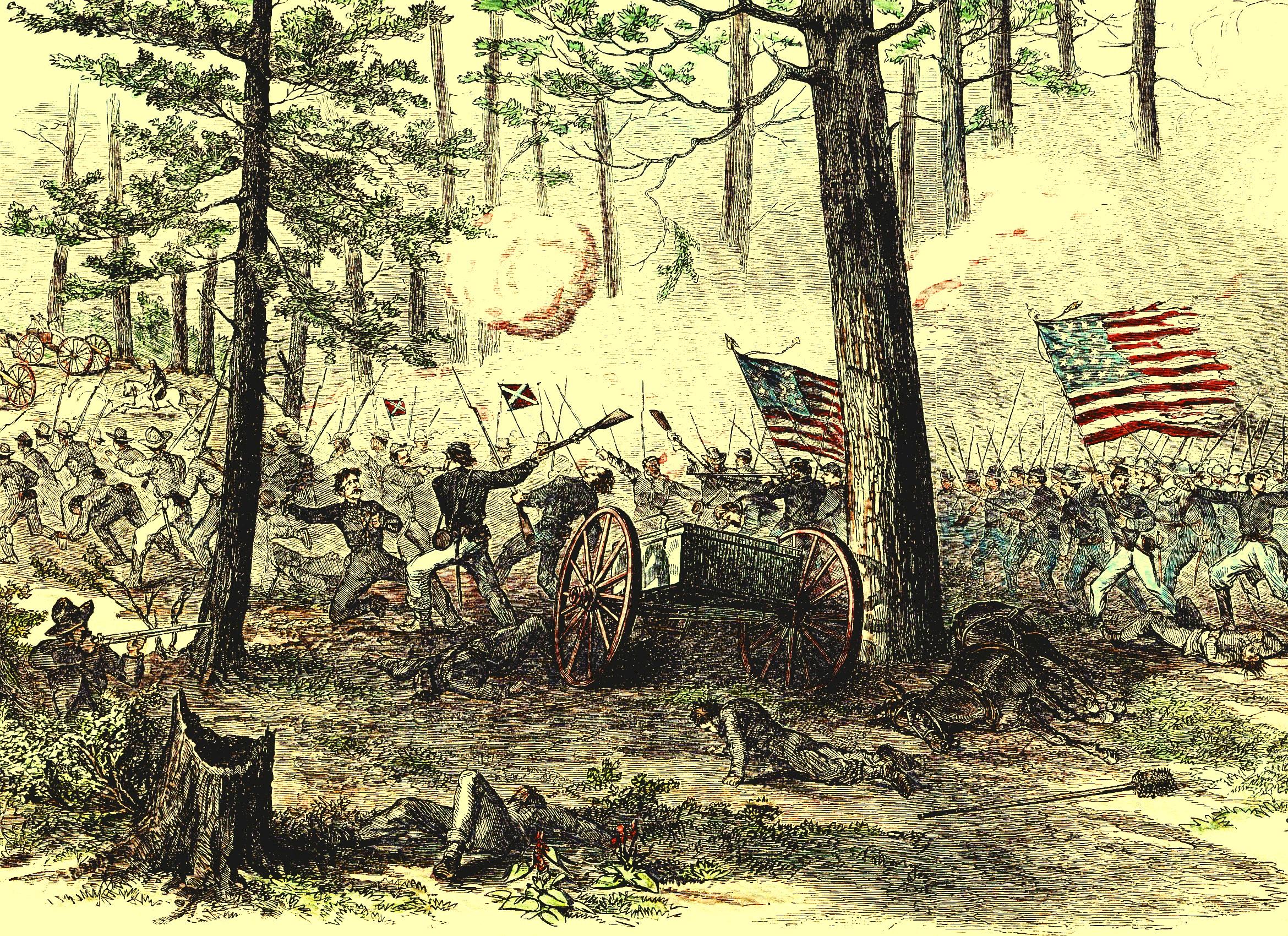
After Franklin, the 125th was engaged in both days’ battles at Nashville, Dec. 15-16. The war ended soon afterward, and the Tigers expected to be mustered out along with most other soldiers. Companies A and B, the two oldest companies, were mustered out, but the rest were sent to Texas to guard the Mexican border against possible incursions by the French under Emperor Maximilian.


From Beginning to End. By Laurence H. Freiheit. Maps, photos, illustrations, notes, index, 800 pp., 2019. Camp Pope Publishing, www.camppope. com. $45 hardcover.
Reviewed by John Michael Priest
greatness or renown. With a stint in combat during the Mexican War (in which he was severely wounded and breveted for bravery), he spent ten years of his career building Fort Pulaski and the majority of the rest of it traveling from U.S. outpost to U.S. outpost beyond the Mississippi River inspecting the conditions, arms and the often questionable marksmanship of the men stationed at them.
In 1861, he commanded the defenses of Washington, D.C., and on Sept. 15, 1862, he received promotion to major general, commanding the XII Corps, Army of the Potomac. He held that post until his death on the morning of Sept, 18, from his chest wound received the day before.
Opdycke’s Tigers won their nickname in Dyer’s cornfield at Chickamauga, where they charged and blunted a Confederate breakthrough. Although suffering heavy casualties, they bought time for the left flank of the Union Army to rally on Snodgrass Hill. The 125th Ohio, in their first battle, thus helped hold General George H. Thomas’ left flank.
Thomas told Colonel Emerson
Well-seasoned veterans by now, after the capture of Atlanta, under General John M. Schofield, they stayed just ahead of Confederate General John Bell Hood, finally turning to face him when they reached Franklin, on the banks of the Harpeth River. The 125th’s brigade was now commanded by Opdycke. In the battle of Nov. 30, General Jacob Cox ordered Opdycke to form his brigade in rear of the Union line as a reserve. When the Rebel columns broke through the main
Incorporating enough information about the big picture to allow readers to follow what is happening beyond the purview of the Tigers, Thomas Crowl has produced a well-written and informative book about a brave western Union regiment.
Robert L. Durham, of Centerville, Ohio, has been a history buff for some sixty-five years. He is retired and is currently back in school to get his history degree. His main interest is in the Civil War and Old West history, but lately he has been broadening his horizons somewhat into WW I and the Korean War. Lately, he has written articles for Military Heritage magazine.
Six generals, three Confederate and three Federal, died on the field of Antietam or from wounds received during the fighting on Sept. 17, 1862. Joseph Mansfield was one of them, at age 58, the third-oldest general in the Army of the Potomac.
Mansfield entered West Point from Connecticut when he was 13 years old. He graduated at age 18 in 1822 as an engineer. His career, which spanned four decades, did not necessarily lead to
Lawrence Freiheit catalogues Mansfield’s life from birth to demise in a very unique, albeit massive biography the likes of which I have seldom encountered before. Thoroughly illustrated, it reads much like the script from the old British documentary called Connections, in which the narrator started with a simple idea, like the origin of ink, and wove it into a tapestry of how that simple invention affected the entire world around it. What begins as a genealogical study of an established New England family digresses into the intricate world through which Mansfield passed. The book discusses in detail how engineers constructed casemates in forts, how Mansfield earned his brevets during the Mexican War, and how scattered and ill-prepared the U.S. regulars were for a major war. The book also reads as a Who’s Who of the generals of the opposing armies during the Civil War, because Mansfield met most of them during his long service in the army. Robert E. Lee served under him in the construction of Fort Pulaski.
Freiheit’s biography is also more of an encyclopedia of the day-to-day life in the antebellum U.S. Army than a narrative and easy-reading biography. Thoroughly researched, filled with a copious amount of block quotes from primary sources, and heavily illustrated with good maps, portraits, and illustrations, it reflects the author’s hard work and dedication to preserve the memory of the general and his contemporaries.
Mike Priest is author of Antietam: The Soldiers’ Battle (1989) and Before Antietam: The Battle of South Mountain (1992).
42 Civil War News February 2020
Before making plans to attend any event contact the event host. Deadlines for Advertising, Editorial or Events Submissions is the 20th of each month. We strive to add all events submitted to us but do not guarantee that your event will be published. There is a 100 word maximum for each event. Email events to: ads@civilwarnews.com
Jan. 25, Virginia. Lecture
“Private Confederacies: The Emotional Worlds of Southern Men as Citizens and Soldiers,” at the National Museum of Civil War Medicine in Frederick. 2:30 pm. Free with admission. civilwarmed.org/event/private-confederacies.
Feb. 1-2, Georgia. Civil War Show and Sale

MK Shows presents the Chickamauga (Dalton) Civil War Show at the Northwest Georgia Trade Center, Dalton, Ga., for collectors and history enthusiasts. Over 400 sale and display tables. Adults $10, Children under 12 are free. Open Sat. 9-5 and Sunday, 9-3. For information; www.MKShows. com, email Mike Kent at mike@mkshows.com.
Feb 9. Georgia. Living History
“Soldier Stories,” camp, demonstrations and artifact display at the Pickett’s Mill Battlefield Historic Site. 10 a.m.-4 p.m. Hikes 1 and 2 p.m. Free. explore. gastateparks.org/events.
Feb. 12, Pennsylvania. Lincoln Birthday Celebration, Parade and Ceremonies
Sponsored by the Union League of Philadelphia. Arrive by 10 a.m. for free parking for reenactors at Laz Garage on the N.W. corner of 15th & Sansom
Civil War News
St. only. There will be a lunch for the participants at 12 p.m. After the parade participants are invited to return to the Union League for refreshments and entertainment. register: awaski01@gmail.com.
Feb. 14, Virginia. Lunch Discussion
“Confederate POW Camps,” at the Mariners’ Park Cafe in the Mariners’ Museum in Newport News, Va.. 12:30 pm. Discussion is free. marinersmuseum.org
Feb. 14-16, Florida. Reenactment
Olustee Battlefield Historic State Park will host the weekend long 44th Annual Reenactment commemorating the 156th anniversary of the Battle of Olustee. More than 2,000 living historians will give presentations of both civilian and military life during the Civil War. Events will include a wreath laying ceremony, Civil War Memorial Service, tours and medical demonstrations, entertainment, arts, crafts and food booths along with artillery night firing and oldfashioned barn dance. Spectators can visit authentic campsites, watch the parade, view artillery inspections, listen to a period music concert and watch the battle reenactment. Friday is living history education day for schools and a ball at the Ball Tent Saturday night. Period attire required and is for reenactment participants only. For information; 877635-3655; www.battleofolustee.org.
Feb. 22-23, South Carolina. Reenactment

The Battle of Aiken reenactment will take place at 1210 Powell Pond Road, Aiken. Camps and demonstrations all weekend with battles each day. $15/adult. For information; battleofaiken.org.
March 6-7, Mississippi. Midsouth Military History and Civil War Show

The 53rd annual show and sale will be held at a new location in 2020 at I-55 & Church Rd. in Southhaven, just 15 minutes from downtown Memphis. Admission is $10, kids 12 and under free. For information; MidsouthMilitaryHistory@ gmail.com or 901-832-4708.
March 7, Pennsylvania. Civil War Lecture
Join us for a lecture on South Mountain Communities during the Civil War, at the Shippensburg Historical Society, 52 W. King St., Shippensburg. 10 a.m. Free, donations welcome. For Information; shippensburghistoricalsociety.org March 21, Pennsylvania. Preservation Luncheon
Author Bradley Gottfried will speak on “The Days in the Saddle: The Cavalry at Gettysburg” at the Grand Army Museum, 9130 Academy Rd., Philadelphia, Pa. 19114 For reservations or information; garmuslib@verizon.net or 215-289-6484.
March 21-22, North Carolina. Reenactment
Since 1955
Public Hours: Sat. 9 A.M. to 5 P.M., Sun. 9 A.M. to 3 P.M.
Admission: $10.00
– Modern Handguns are Prohibited –Complete information on web site: www.baltimoreshow.com Or Call 443-497-9253
Known as the “CROWN JEWEL” of Collector’s Shows!
Join Chambersburg Civil War Seminars & Tours for the largest and most comprehensive study of the Chickamauga & Chattanooga campaigns yet attempted! Five expert historians will cover diverse topics along with four full days of intensive battlefield touring led by David Powell with program coordinator Eric Wittenberg. We’ll visit Bridgeport and Stevenson, AL; LaFayette, GA, Davis’s Crossroads, Chickamauga, Reed’s Bridge, Jay’s Mill, Brock Field, Kelly Field, Brotherton Field, Horseshoe Ridge, Lookout Mountain, National Cemetery, Orchard Knob, Ringgold & more!
Upcoming Conference 1777 Philadelphia Campaign

April 30-May 3, 2020 Limited seating!
GATEWAY
Chickamauga & Chattanooga

July 22-26, 2020
Based in Ringgold, GA
Bentonville Battlefield State Historic Site is host to the largest reenactment held in the state of North Carolina every five years. Visitors will learn about the battle that happened Mar. 19-21, 1865, which was the last major Confederate Call
43 February
2020
for a FREE Brochure! 717-264-7101 ext. 206
THE DEEP SOUTH:
TO
presents The “Original Baltimore” Antique Arms Show
www.CivilWarSeminars.org The Maryland Arms Collectors Assoc., Inc.
Maryland State Fairgrounds Timonium,
MD North of Baltimore, York Road, MD. - Rt. 45 1,000 8-Foot Tables
March 21-22, 2020
offensive in the war as Gen. Joseph Johnston fought the advancement of Gen. Sherman’s march across the South. Included are many free programs and 2 reenactments which are ticketed events. For tickets, schedule of events and more information; 910-594-0789 or https://www.johnstoncountync. org/155th-bentonville-reenactment.
April 2-4, Georgia. GBSHHA Congress
The General Barton Stovall History & Heritage Association will be holding their 19th annual Congress in Cartersville, Georgia. The event features two days of battlefield tours, a historian night, and a banquet. Information about the Congress is at www.generalbartonandstovall.com.
April 3-5, Maryland. Civil War Conference
“Lincoln Assassination Studies: Snapshots from the Big Picture,” 21st Annual Conference. Tours and lectures sponsored by the Surratt Society, in Clinton. $225, tours priced separately. For information; surrattmuseum.org
April 4, All States. Park Day. Sponsored by the American Battlefield Trust
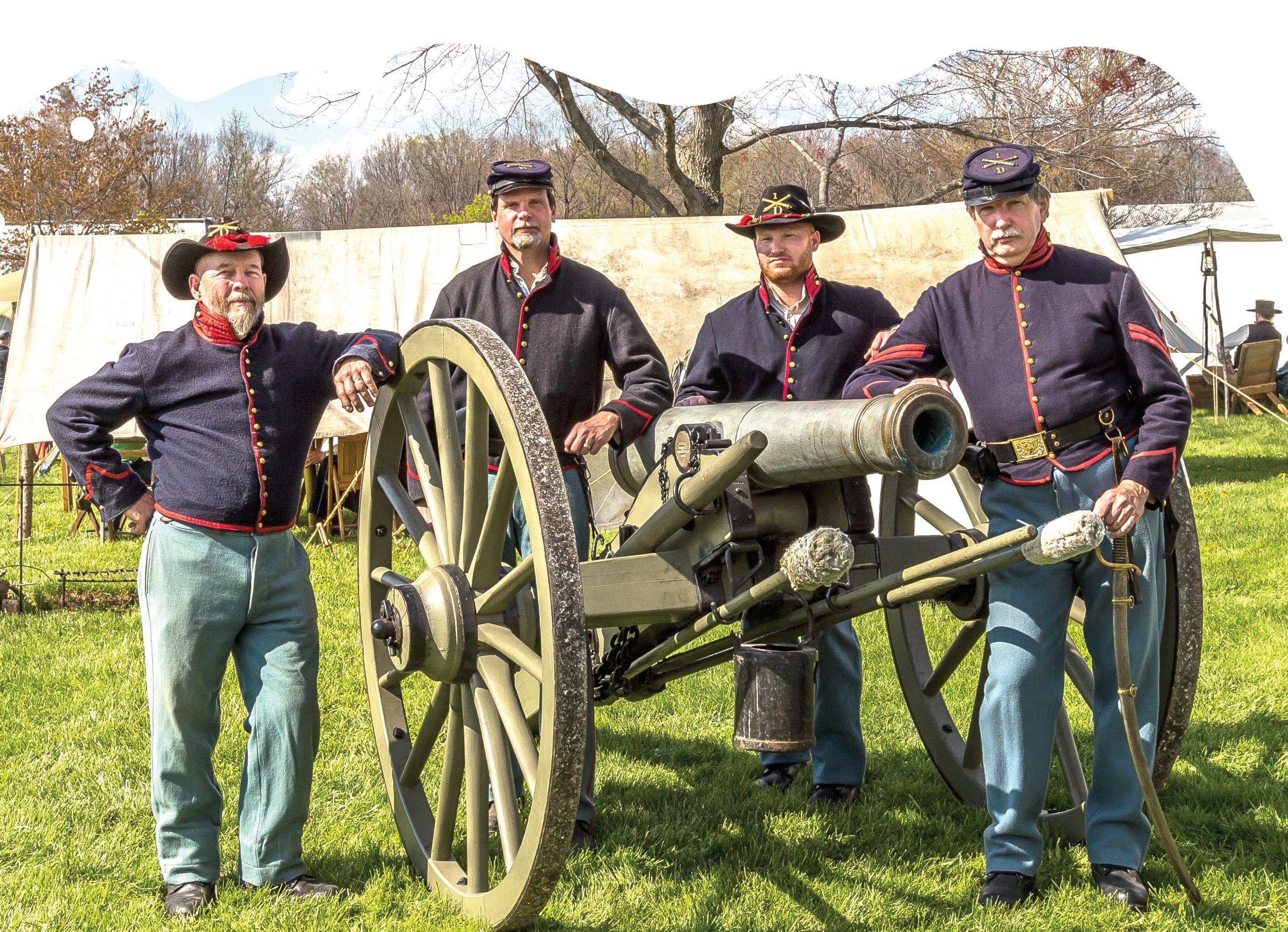
Annual volunteer cleanup and repair at Civil War sites across the country. For information; battlefields.org/events/park-day.
April 4, Virginia. Shenandoah University’s McCormick Civil War Institute in Winchester
The McCormick Civil War Institute will host its 2020 Spring Conference from 9 a.m. - 4 p.m. “The Civil War on the Water.” Featuring nationally recognized Civil War scholars John M. Coski, Anna Gibson Holloway, Karen Needles, Jonathan W. White and Jonathan A. Noyalas (Shenandoah University). Registration fee of $50 ($25 for students with valid id) covers all presentations and lunch. For information or to register visit www.su.edu/ MCWI, or call 540-665-4501, or email jnoyalas01@su.edu.
April 5, Pennsylvania. Symposium
Annual Meade Society History Symposium at the Conservatory at West Laurel Hill Cemetery, Bala Cynwyd, Pa. at 12 p.m. Speakers on the topic – The War with Mexico; Training Ground of the Civil War. Contact: Jerry McCormick 215-848-7753; or gedwinmc@msn.com.
April 23-26, New Jersey. Company of Military Historians Annual Meeting
The 2020 meeting, held at the Crowne Plaza-Princeton, 900 Scudders Mill Rd., Plainsboro, NJ., will begin with the welcome reception on Thursday followed by a field trip to visit Washington’s Crossing, the Old Barracks Museum and Princeton Battlefield on Friday. Nine lectures covering many periods of American military history and material culture along with a 20-table exhibit / flea market room and expanded silent auction. Register online at: https://tinyurl.com/register-4-CMH2020. For more information; lesandjuanita1@hushmail.com, 845-754-8827.
April 24 -26, North Carolina. 23rd Annual Salisbury Confederate Prison Symposium
23rd Annual Salisbury Confederate Prison Symposium sponsored by the Robert F. Hoke Chapter 78, United Daughters of the Confederacy. Event begins Fri. afternoon with 3 lectures, displays, Friendship Banquet, music, and recognition of veterans. Registration $70 per person when postmarked by April 3, $80 afterwards. $15 charge for refunds after April 10. No refunds after April 17. Mail checks to Robert F. Hoke Chapter 78, UDC, PO Box 83, Salisbury, NC 28145-0083. For information; Sue Curtis 704-637-6411, southpawsagain@gmail.com.
April 25, Illinois. Civil War Show and Sale
Zurko Promotions presents The National Civil War Collectors Spring Show and Sale which will be held at the DuPage County Fairgrounds in Wheaton. Hours: 9 a.m. to 4 p.m. Admission is $9, Free parking. For information; www.chicagocivilwarshow.com.
May 1-2, Gettysburg. Spring Seminar
The Association of Licensed Battlefield Guides of Gettysburg will offer its Spring Seminar. “ Overlooked and Often Not Visited: Ridges, Farms, and Other Sites”, including Battle of Hunterstown, Bliss Farm, and much more. For information; 717-337-1709 or https://gettysburgtourguides.org.
May 2-3, Ohio. Civil War Show and Sale
The 43rd Annual Show in Mansfield at the Richland County Fairgrounds. Friday dealer setup. One of the most impressive artillery living history displays you will ever see. Living history units representing Rev war through WWII. Over 750 tables. Admission is $7, kids under 12 free. For information; email: info@ohiocivilwarshow.com or visit www.ohiocivilwarshow.com.
May 15-17, Georgia. Reenactment
The 156th Anniversary “Battle of Resaca” reenactment will be held on over 650 acres of the original battlefield. This event will have main camps located within the original US and CS lines. Camping allowed in or near the breastworks. Amenities include straw, hay and firewood; food and ice on site. The planned activities include main battles both days at 2 p.m., period dance, medical demo’s, cavalry competition, ladies’ tea, civilian refugee camp, period church services and a memorial service at the Confederate cemetery. Handicapped parking is available. A portion of the proceeds will be donated to the preservation efforts of the Friends of Resaca Battlefield, Inc. A $150 bounty will be paid to the first fourteen cannon and crews registered by May 1st. Reenactor registration fee is $10.00 due by May 1. For more information, www.georgiadivision.org or Battle of Resaca, P.O. Box 0919, Resaca, GA 30735-0919.
May 15-17, Virginia. Period Firearms Competition
The North-South Skirmish Association 141st National Competition near Winchester. Over 3,000 uniformed competitors in 200 member units compete in live-fire matches with muskets, carbines, revolvers, mortars and cannon plus costume competitions and historical lectures. The largest Civil War live-fire event in the country. Free admission, large sutler area, and food service. For more information visit the N-SSA web site: www.n-ssa.org.
May 24, Pennsylvania. Memorial Day Observance at Historic Laurel Hill Cemetery
Recreating the Original G.A.R. Decoration Day Service of 1868: The traditional Decoration Day service of the Grand Army Meade Post #1 will be recreated at Laurel Hill Cemetery, 3822 Ridge Ave. Philadelphia at noon. For information, 215-228-8200 or awaskie01@gmail.com for Dr. Andy Waskie.
May 30, Georgia. Living History
Anniversary living history and civilian program at the Battle of Pickett’s Mill Battlefield Historic Site located at 4432 Mt. Tabor Church Rd., Dallas, Ga. Hours are 9 a.m. - 4 p.m. $6/adult. For information; explore.gastateparks.org/ info/214024?c=17413216.
May 30 & 31, Pennsylvania. Living History
Join us for this annual event recognizing the participation of 120 members of the Pennypacker family, including Governor Samuel W. Pennypacker, a Private in the 26th Pa. Emergency Militia. See soldier life and civilian demonstrations, artillery fire, troop inspections, dress parade, music and speakers. Children can participate in the Be a Soldier Kid Enlistment each day. Pennypacker mansion is open for tours. Food vendor onsite. Hours: Sat. 10- 5; Sun. 10-4. Free to the public. Reenactment units: Fee $2/person before May 1, $10/person after. Free straw, firewood, water and cake. For Information: 610-287-9349 or www.ppmcivilwar.org.
June 6-7, Virginia. Reenactment
23rd Annual Reenactment of Fort Pocahontas, on the historic battlefield located at 13150 Sturgeon Point Rd., Charles City, Va. Camp and demonstrations open 10 a.m. - 4 p.m. Sat., 10 a.m. - 2 p.m. Sun. Battles at 1 p.m. both days. $10/
History Comes Alive
May
Friday:
Living history for local schools. Come and share your knowledge of the Civil War with Columbia and Montour County school children. Dinner provided for all participants.
Saturday
Living history all day.
• Unit bounties paid
• Free registration
• Artillery and Cavalry welcome
• Sutlers welcome
• Large gun show also on the Fairgrounds
For more information and registration forms contact Eric Stahley at ecstahley@gmail.com
44 Civil War News February 2020
Bloomsburg Fairgrounds 620 W 3rd St • Bloomsburg, PA
17815
8 & 9, 2020
By Jack W. Melton Jr.
Hidden Evidence
A Look Inside Civil War Artillery Projectiles


"Through Jack’s superb photography; the collector and professional can now view an extensive exposure to sectioned projectiles. This is new for the average person in that for the first time since radiography; one can examine the internal makeup of a shell."


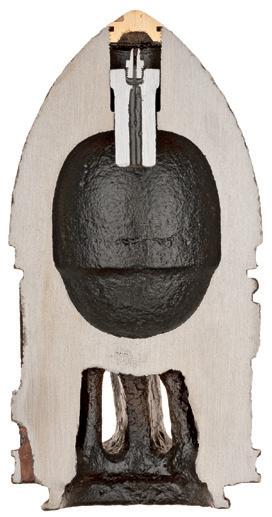
CWO4 John D. Bartleson Jr., U.S. Navy EOD
Author of Civil War Explosive Ordnance 1861–1865

What do they say?
Jack Melton’s latest endeavor, Civil War Artillery Projectiles – The Half Shell Book, is a remarkable addition to Civil War artillery ammunition literature. For archaeologists and collectors the clearly written text and the excellent photographs provide a wealth of information to properly identify recovered shells and burst fragments. For bomb squad and EOD specialists this book should be on every units’ shelf. The material found in these pages will help EOD personnel identify what has been found, whether or not it is dangerous, and how to inert the round without the necessity of destroying an important historic object. This book takes Civil War artillery ammunition studies to a new level.
Douglas Scott Adjunct Research Faculty, Colorado Mesa University. Author of Uncovering History: Archaeological Investigations of the Little Bighorn.
Wow. I have been reading a lot of different books on ordnance from this era, but this one takes the cake. Most of the other books drift off in directions that are not helpful with the ordnance specific information I am usually looking for. But this book stays on task and topic from start to finish.
flame’scommunicationchannel.Theblackpowderburstingchargewaspouredinloosearoundthebullets.Thismethoddid notworkverywellandoftenonlysucceededinblowingthefusesout.Projectilesfilledwithbulletsusedascaseshotarerare. Thisspecimenwasrecovered,alongwithotherConfederateandUnionprojectiles,fromthepost-CivilWardumpsitelocated neartheConfederatePowderWorksinAugusta,Georgia.
Inthisexample,riflebulletswereutilizedasthecaseshotmaterialincluding3-ring.58caliberbullets,3-ring.69caliberbul lets,andU.S.ring-tailSharpsbullets.IthasabrassBormannsupportplug(underplug)thatiscountersunkonbothsidesof
• 392 pages of full color photographs with descriptions
• Covers projectiles, fuses, canister, grapeshot and more


• 850 photos, drawings, radiographs, patents and maps

• A must for every serious artillery enthusiast
Online at www.ArtillerymanMagazine.com or fill out this form and mail to the address below. Copies will be mailed
Tom Gersbeck
MFS, Graduate Faculty, Arson-Explosives Investigation (AEI), School of Forensic Sciences, Oklahoma State University
Jack Melton’s new book Civil War Artillery Projectiles – The Half Shell Book, promises to be one of the most important volumes on Civil War artillery in recent times. Anyone who has studied the wide variety of Civil War projectiles knows that what is inside is just as important, and maybe more so, than what is outside the shell. In this book, cutaway shells are graphically explained with superb color photographs and detailed notes. They reveal important details and differences in a variety of similar projectiles that tell us U.S. from C.S. and between type variations, in a way that no other approach has ever done. It is supremely helpful in explaining to others just how a shell works, whether it is still dangerous or not, and why.
Les Jensen
Former Curator of the Museum of the Confederacy
45 February 2020 Civil War News
ChapterThree –SphericalHalfShells 74
the
Diameter: 3.58 inches Bore Diameter: 3.67 inches Gun: 6-pounderSmoothbore Weight:5.2poundsConstruction: Case shot FusingSystem:Time,Bormann FusingMaterial: Leadandtinalloy Fuse Thread Diameter: 1.65 inches Fuse Hole Length:.75 inch Sabot: Cup Sabot Material: Wood Wall Thickness: .31 inch Matrix Material: None Case Shot Material: Lead Case Shot Diameter: Varied calibers Bormann time fuse Brass supportplug Sharpsring tail bullet Horseshoe powdertrain Confederate
SphericalCaseShot
ourprojectiles,(andoccasionallyusedbyourownmen,)of mixingmusketbulletswiththeburstingchargeof smallshells, wasentirelyfutilefromwantof weightinthebullets. –GeneralHenryL.Abbot 259 Civil War Artillery Projectiles – The Half Shell Book Federal 3.8-Inch James Type I Shell Diameter: 3.72 inches Bore Diameter: 3.80 inches Gun: 14-pounder James Rifle Length 6.75 inches Weight: 10.0 pounds Construction: Shell Fusing System: Percussion, James Fusing Material: Brass Fuse Thread Diameter: .90 inch Fuse Hole Length: 1.56 inches Sabot: Ring or band, lead (missing) Sabot Height-Width: 2.62 inches Wall Thickness: .62 inch Matrix Material: N/A Case Shot Material: N/A chargeBursting cavity Anvil cap Zinc plunger Iron nipple Fuse powder train Ring base The James percussion fuse consists of a bronze anvil cap with a zinc plunger fitted with a nipple. Both are smaller in diameter than the James percussion fuse on the previous page. This sub-pattern is commonly called tie-ring James due to the visible ring extending below the base of the projectile body. The visible small notches, located in the raised portion of the projectile’s ribbed body, were developed in an attempt to improve the chances of the lead sabot remaining attached to the projectile body during firing. This pattern James projectile is less common than the flat based James projectile. James percussion fuse
6-Pounder
Theexpedienttriedbytheconfederatesinimitationof
Purchase
starting Nov. 1st, 2018 Name: Mailing Address: City: State: Zip Code: Phone: Email: ☐ Standard Edition $89.95 + $8 shipping* = $97.95 ☐ Deluxe Edition $125.00 + $8 shipping* = $133.00 (100 limited edition copies) *Shipping via USPS Media Mail. USA Only. International orders email for shipping quote. If you wish to have the author inscribe the book beyond signing and dating it (on the title page) please indicate your preferred text below: Custom Text: U.S. Dollars Only Check or Certified Funds Check# Make checks payable to: Historical Publications LLC ☐ Discover ☐ Mastercard ☐ Visa Card#: Exp. Date: Security Code: Name on Card: Billing Address: City: State: Zip Code: Signature: Historical Publications LLC 520 Folly Road, Suite 25 PMB 379, Charleston, SC 29412 800-777-1862 • mail@artillerymanmagazine.com
adults. fortpocahontas.org/reenactment.
June 27-28, Pennsylvania. Civil War Show
Sat. 10 a.m. - 5 p.m., Sun. 9 a.m. – 2 p.m. Eisenhower Hotel & Conference Center Allstar Expo Complex, 2638 Emmitsburg Road, Gettysburg. The Gettysburg Battlefield Preservation Association’s Artifact and Collector’s Show features more than 200 vendors and over 300 tables of artifacts, swords, firearms, correspondence, books, photographs, documents and much more. Daily admission: Adults: $8. Children 12 and under free. Vendors contact: bsynnamon@gmail.com or call 717-334-2350. For more information visit www.uniondb.com or www.gbpa.org. Email: info@gbpa.org.
July 4-5, Pennsylvania. Reenactment
The 2020 reenactment of the Battle of Gettysburg will be hosted by the Gettysburg Battlefield Preservation Association and will be held at the Daniel Lady Farm. For updates visit https://www.gbpa.org/news/gbpas-daniel-lady-farm-host2020-battle-gettysburg.

July 22-26, Georgia. Gateway to the Deep South: Chickamauga & Chattanooga
Featuring tour guide & leading authority David Powell with special guest Eric Wittenberg as we visit Bridgeport and Stevenson, AL; LaFayette, GA, Davis’s Crossroads, Chickamauga, Reed’s Bridge, Jay’s Mill, Brock Field, Kelly Field, Brotherton Field, Horseshoe Ridge, Lookout Mountain, National Cemetery, Orchard Knob, Ringgold & more! Based in Ringgold, GA. Additional tour details can be found online at: www.CivilWarSeminars.org or call 717-264-7101.
July 25-26, Tennessee. Civil War Show and Sale
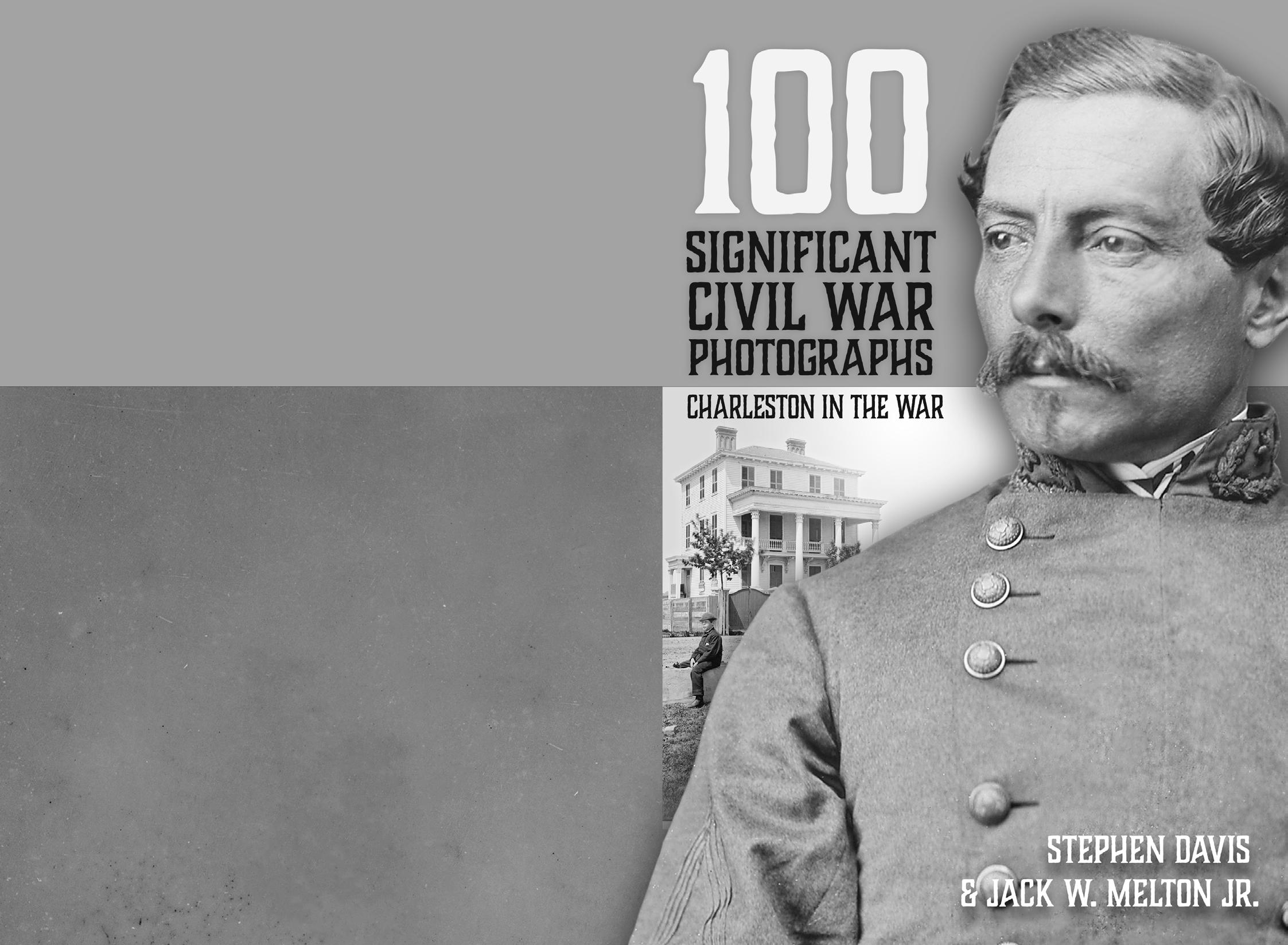

American Digger® Magazine’s Chattanooga Civil War & Artifact Show, Camp Jordan Arena, 323 Camp Jordan Pkwy., East Ridge, Tenn. Info: 770-362-8671 or 716-574-0465; email anita@americandigger.com or kesmas@ localnet.com.
Aug. 15-16, Minnesota. Reenactment
p.m.
Battles
The American Civil War was the first war in which both sides widely used entrenchments, repeating rifles, ironclad warships, and telegraphed communications. It was also the first American War to be extensively photographed. Mathew Brady, Alexander Gardner and Timothy O’Sullivan are famous for having made iconic photographs in the Civil War’s eastern theater. George N. Barnard deserves to be ranked in this top tier for his photographic A civilian photographer hired by Gen. William T. Sherman’s chief engineer to take pictures of fortifications around Atlanta, Barnard took several hundred of them in and around the city in the fall of 1864. His most famous is the site of Union Maj. Gen. James B. McPherson’s death in the battle of Atlanta, July 22, Thus far, no comprehensive, definitive listing has been made of the photographer’s work. The Library of Congress has 130 images; the U. S. Military Academy at West Point, New York, has at least 98 photographs, donated by Captain Poe’s widow. Other repositories, such as the Gilder Lehrman Institute of American History in New York City, have smaller collections. For this book we have chosen hundred images we deem “significant,” though other students may wonder at some of our selections. We hope that this work will stimulate further interest in Barnardiana, and that other scholarly volumes are yet to come. The Atlanta Campaign STEPHEN DAVIS 100 SIGNIFICANT CIVIL WAR PHOTOGRAPHS ATLANTA CAMPAIGN


Atlanta Campaign collection of George Barnard’s camera work. Most of the photographs are from Barnard’s time in Atlanta, mid-September to mid-November 1864, during the Federal occupation of the city. With this volume, Stephen Davis advances the scholarly literature of Barnardiana.

Order online at www.HistoricalPubs.com or call 800-777-1862
The

46 Civil War News February 2020 Mike@MKShows.com • www.MKShows.com Admission Coupon To Any MKShows Event $1 Off 770-630-7296 “The STORIES BEHIND THE PICTURES” 100 Significant Civil War Photographs CHARLESTON IN WAR By Stephen Davis & JACK W. MELTON JR Name Shipping Address City State Zip 160 pages • OVER 100 PHOTOS • MAPS • INDEX • BIBLIOGRAPHY • ISBN: 978-1-61850-167-7 Paperback: $19.95 (+$3.50 S & H) • Released Jan. 2020 3 ways to order YOUR COPY! CALL US 800-777-1862 ORDER ONLINE www.historicalpubs.com fill out this form BELOW & mail with a check for $23.45 to: Historical Publications LLC 520 Folly Road, Suite 25 PMB 379, Charleston, SC 29412 (S.C. residents include 9% sales tax of $1.80) newly and Charles photograph, selected e Fire allow are Confederates Harbor of Federal history historical works. as DAVIS & MELTON 100 SIGNIFICANT CIVIL WAR PHOTOGRAPHS : CHARLESTON IN THE WAR
“Pipestone Civil War Days,” 850 N Hiawatha Ave, Pipestone. Camps, music, talks and demonstrations 8 a.m. - 4:30 Sat., 8 a.m. - 4 p.m. Sun.
2020 Civil War Dealers Directory is out. To view or download a free copy visit: www.civilwardealers.com/dealers.htm
to be held on both afternoons. For information; pipestoneminnesota.com/cwd.
100 Significant Civil War Photographs:
$19.95 + $3.50 shipping 128 pages, photographs, maps, bibliography. $19.95 + $3.50 shipping. Softbound. ISBN: 978-1-61850-151-6. www.HistoricalPubs.com.
$38.50 - 1 year USA Print
$48.50 - 1 year USA Print & Digital $66 - 2 year USA Print
$86 - 2 year USA Print & Digital
$29.95 - 1 year Digital only
Enclosed
Charge my: Discover MasterCard Visa
Terms and Conditions
The following terms and conditions shall be incorporated by reference into all placement and order for placement of any advertisements in Civil War News by Advertiser and any Agency acting on Advertiser’s behalf. By submitting an order for placement of an advertisement and/or by placing an advertisement, Advertiser and Agency, and each of them, agree to be bound by all of the following terms and conditions:
1. All advertisements are subject to acceptance by Publisher who has the right to refuse any ad submitted for any reason.
2. The advertiser and/or their agency warrant that they have permission and rights to anything contained within the advertisement as to copyrights, trademarks or registrations. Any infringement will be the responsibility of the advertiser or their agency and the advertiser will hold harmless the Publisher for any claims or damages from publishing their advertisement. This includes all attorney fees and judgments.
3. The Publisher will not be held responsible for incorrect placement of the advertisement and will not be responsible for any loss of income or potential profit lost.
4. All orders to place advertisements in the publication are subject to the rate card charges, space units and specifications then in effect, all of which are subject to change and shall be made a part of these terms and conditions.
5. Photographs or images sent for publication must be high resolution, unedited and full size. Phone photographs are discouraged.
6. At the discretion of Civil War News any and all articles will be edited for accuracy, clarity, grammar and punctuation per our style guide.
7. Articles can be emailed as a Word Doc attachment or emailed in the body of the message. Microsoft Word format is preferred. Email articles and photographs: mail@civilwarnews.com
47 February 2020 Civil War News Publishers: Please send your book(s) for review to: Civil War News 520 Folly Road, Suite 25 PMB 379 Charleston, SC 29412 Email cover image to bookreviews@civilwarnews.com Advertisers In This Issue: 100 Significant Civil War Photographs: Atlanta 13 100 Significant Civil War Photographs: Charleston 35, 46 American Battlefield Trust 23 Ace Pyro LLC 19 American Digger Magazine 4 Artilleryman Magazine 34 Brian & Maria Green 2 Civil War Guru 34 C.S. Acquisitions 13 CS Arms 34 Civil War Artillery – The Half Shell Book 45 CWMedals.com, Civil War Recreations 41 Civil War Navy Magazine 33 Civil War Shop – Will Gorges 11 College Hill Arsenal – Tim Prince 25 Dell’s Leather Works 29 Dixie Gun Works Inc. 30 Fugawee.com 23 Georgia’s Confederate Monuments – Book 26 Gettysburg Foundation 10 Greg Ton Currency 11 Gunsight Antiques 11 Harpers Ferry Civil War Guns 22 The Horse Soldier 6 James Country Mercantile 7 Jeweler’s Daughter 7 Le Juneau Gallery 13 Mike Brackin 33 Military Images Magazine 33 National Museum of Civil War Medicine 34 Owens & Ramsey Book Sellers 39 Panther Lodges 36 The Regimental Quartermaster 11 Richard LaPosta Civil War Books 41 SC Confederate Relic Room & Military Museum 31 Suppliers to the Confederacy – Book, Craig Barry 14 Ulysses S. Grant impersonator – Curt Fields 11 University of Tennessee Press 17 Vin Caponi Historic Antiques 12 Events: 155th Bentonville Reenactment 42 Baltimore Antique Arms Show 43 Civil War Seminars 43 The Civil War on the Water Conference 27 Fort Pocahontas 156th Anniversary 21 History Comes Alive – Bloomsburg Fairgrounds 44 MKShows, Mike Kent 3, 19 Mid South Military & Civil War Show 7 Ohio Civil War Show 30 Olustee Reenactment 2 Poulin Auctions 48
c c c c c c
NAME ADDRESS ADDRESS CITY STATE ZIP CODE EMAIL
Security
Payment
Check # Card # Exp. Date
Code
New Renewal c
c
War News – 12 Issues Per Year
Form
subscription) USA Subscriptions Only No Canada or International Mail to: Historical Publications LLC 520 Folly Road, Suite 25 PMB 379, Charleston, SC 29412 Deadlines for Advertising or Editorial Submissions is the 20th of each month. Email to ads@civilwarnews.com Subscribe online www.CivilWarNews.com
Name on Card
Make checks payable to Historical Publications LLC.
c c c Civil
Subscription/Renewal
PHONE Email (required for digital









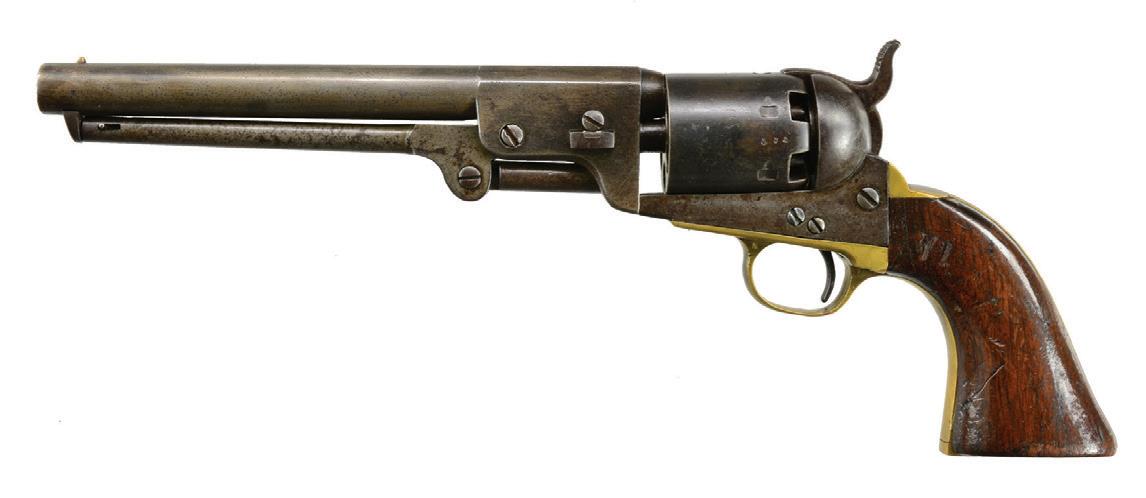



Firearms & Militaria Auctioneers civilwar@poulinauctions.com | poulinauctions.com | 199 Skowhegan Rd | Fairfield, ME 04937 | 207-453-2114 John Sexton Civil War Sales Coordinator and Civil War Cataloger Magnificent
Stephen Poulin, ME Lic # 1115 Sold $41,710 Sold $41,125 Sold $38,185 Sold $36,425 Sold $23,500 Sold $23,500 Sold $23,500 Unique 1864 Patent Model For The Rare Civil War 6 Tube Blakeslee Cartridge Box (Est. $3,000-5,000) Sold $7,635 Fine Hand Sewn Civil War Era 13 Star Flag (Est. $3,000-5,000) Confederate Bilharz Muzzleloading Carbine (Est. $15,000-20,000) Rare & “As Found” Confederate Keen-Walker Brass Frame Breech Loading Percussion Carbine (Est. $20,000-30,000) 2nd Model Brass Frame Confederate Morse Breech Loading Carbine Made In Greenville, SC (Est. $15,000-20,000) Fine Cook & Brother Athens Georgia Confederate Percussion Carbine (Est. $20,000-25,000) Rare Leech & Rigdon Confederate Revolver (Est. $15,000-18,000) Sold $41,125 April 17, 18 & 19, 2020 | Fairfield, ME Accepting Consignments For Premier Spring Firearms Auction Our Fall 2019 Firearm Auction generated nearly $5.5 Million in sales for our consignors - Our largest to date! Call our offices to be part of our next Premier Firearms Auction - Deadline for consignment Late February Rigdon & Ansley Confederate Revolver Carried By
View www.poulinauctions.com for select highlights in the April 2020 Premier Auction
Cased Presentation Sword of Gettysburg Hero General Alpheus Williams (est. $20,000 - 30,000)
Captain Luther M. Clements, Co. F, 41st Alabama (Est. $25,000-35,000)





































































































 Bob Zeller President, Center for Civil War Photography
Bob Zeller President, Center for Civil War Photography




















































































 by Charles H. Bogart
by Charles H. Bogart


























 by Eric J. Wittenberg
by Eric J. Wittenberg











 by Joseph Bordonaro
by Joseph Bordonaro













 By Joe DeSantis. Photographs, sources, 349 pp., 2019. jdesantis@mail2world.com. $15.95 paperback.
By Joe DeSantis. Photographs, sources, 349 pp., 2019. jdesantis@mail2world.com. $15.95 paperback.




































































































































































